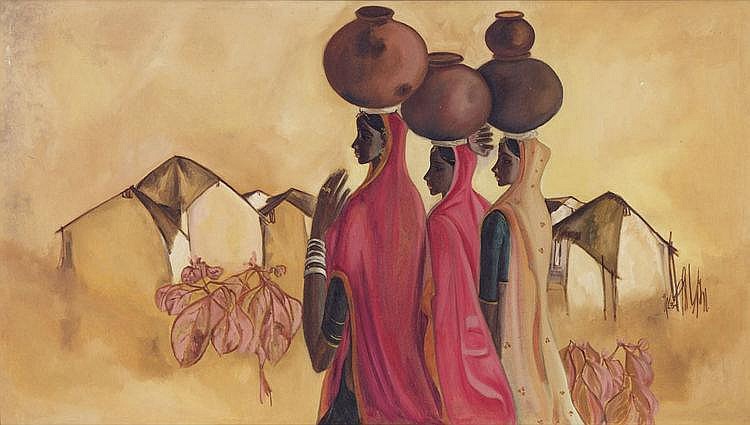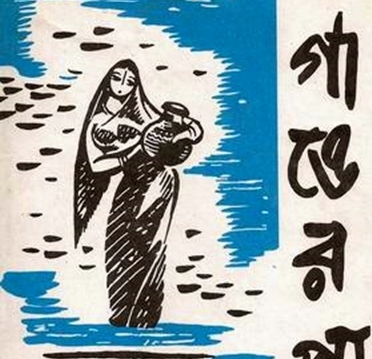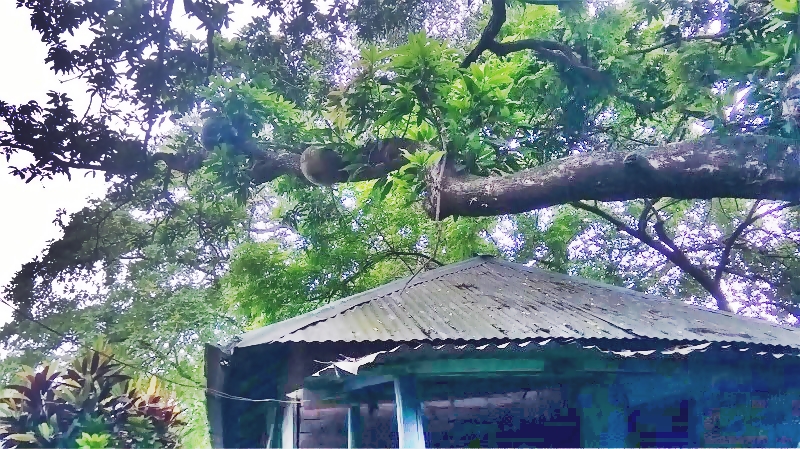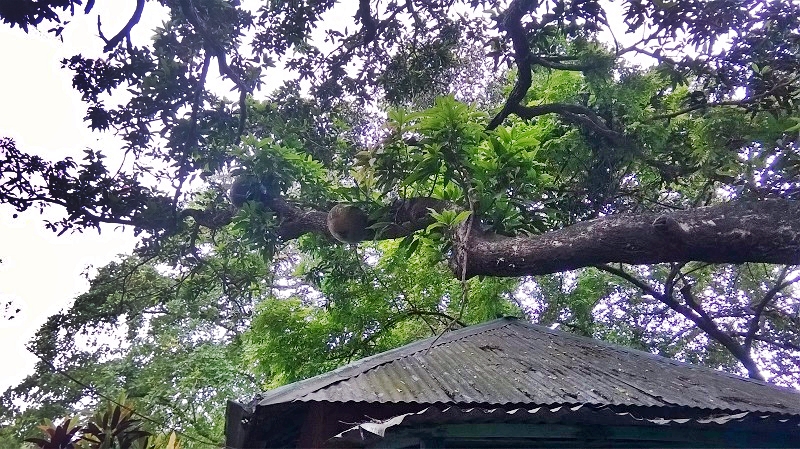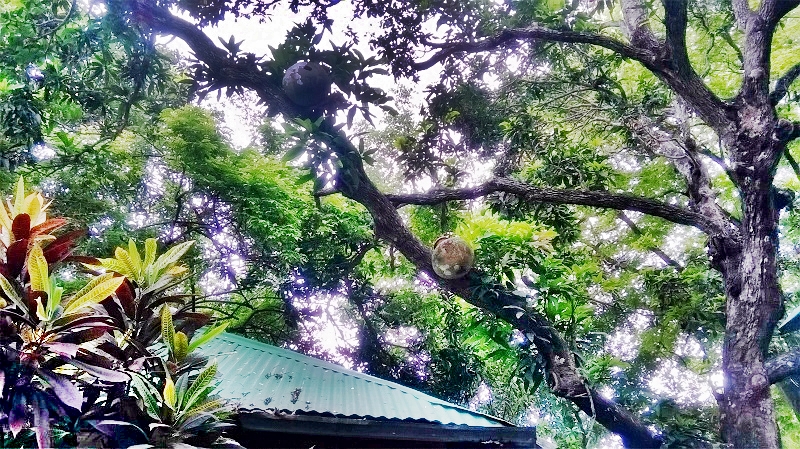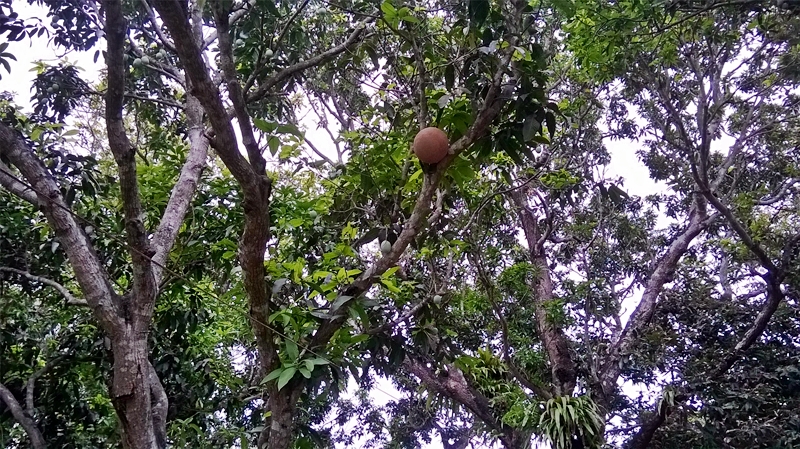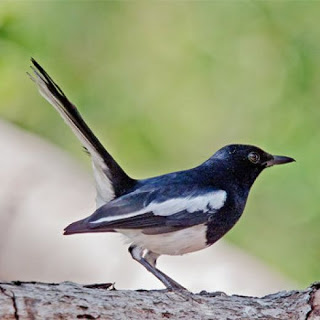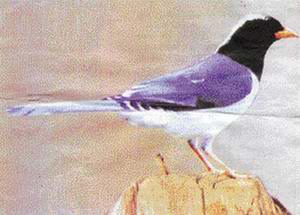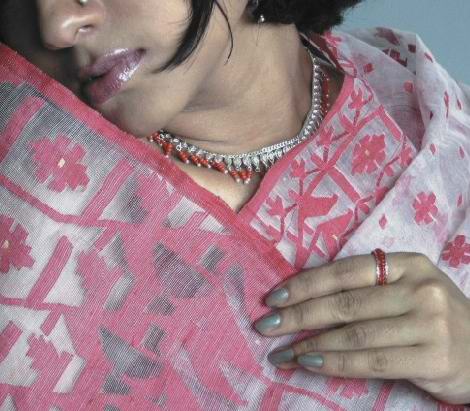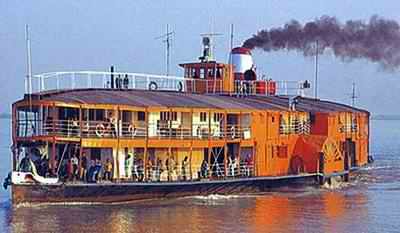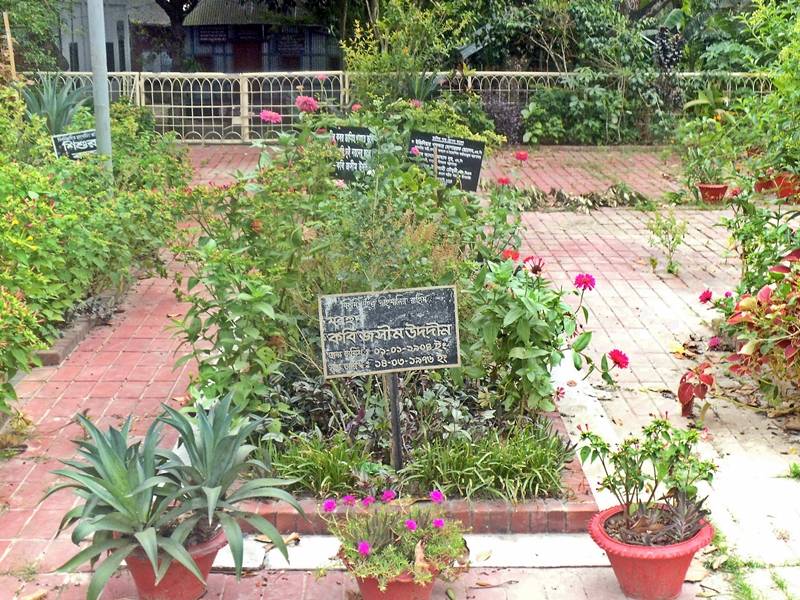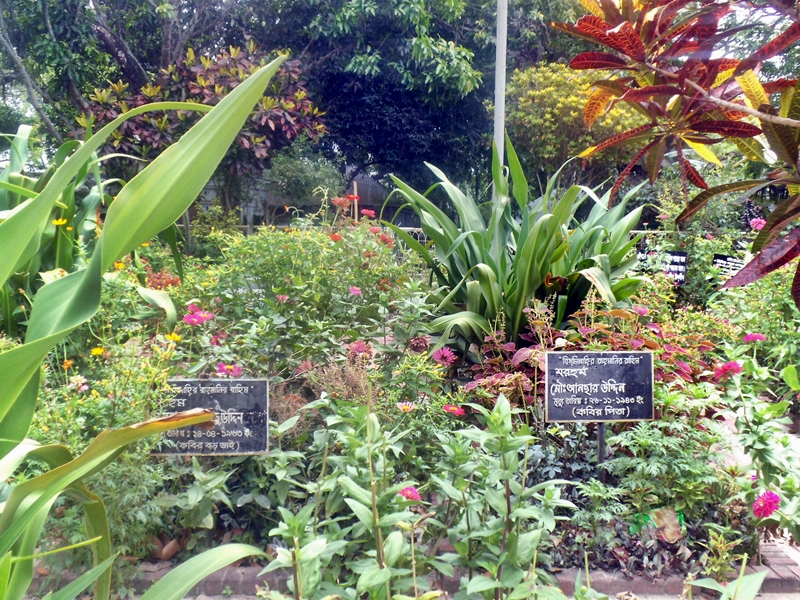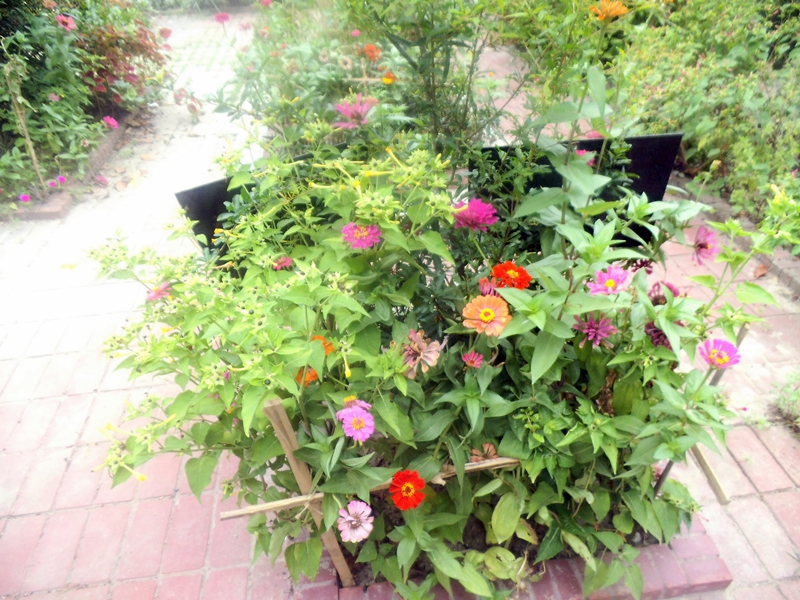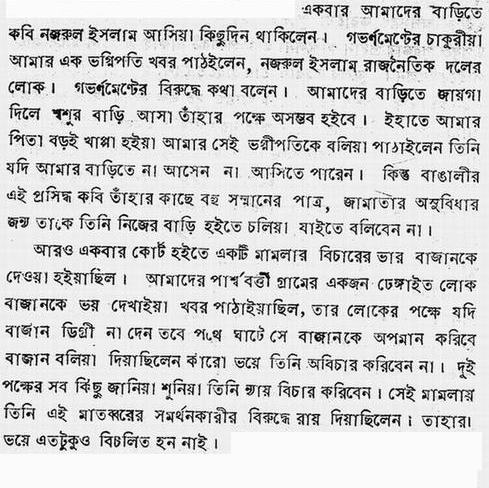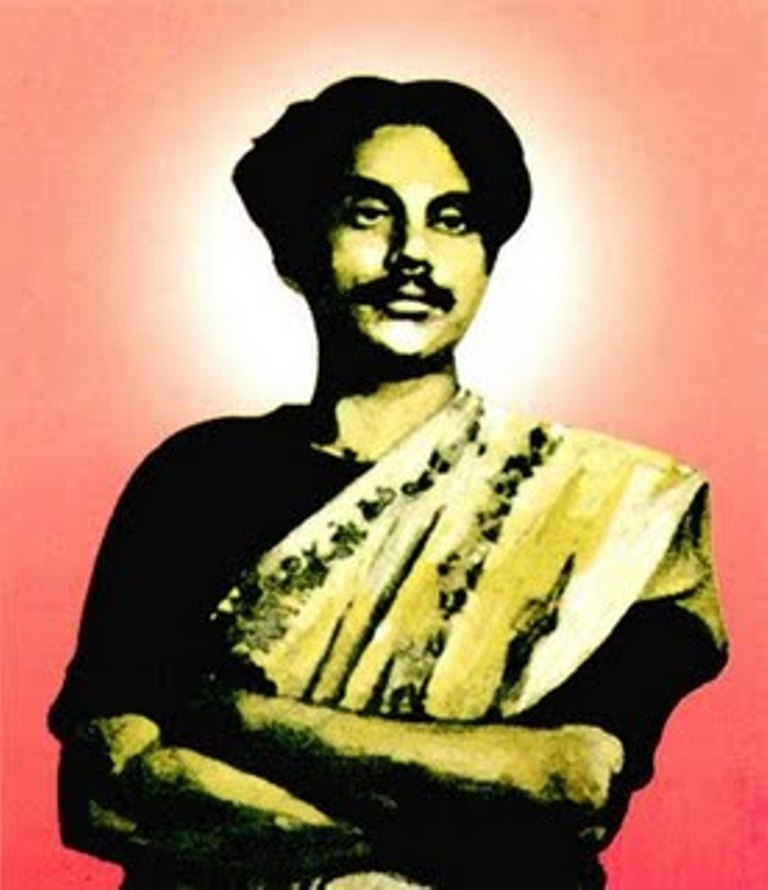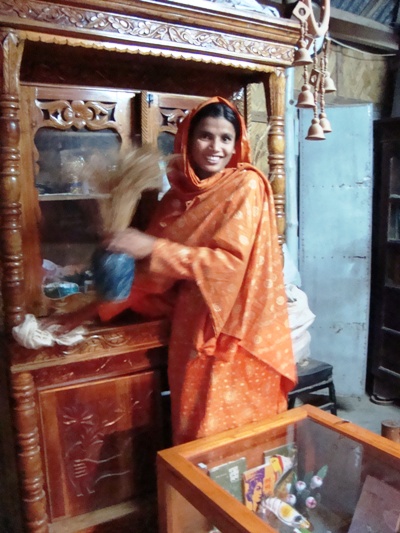|
||
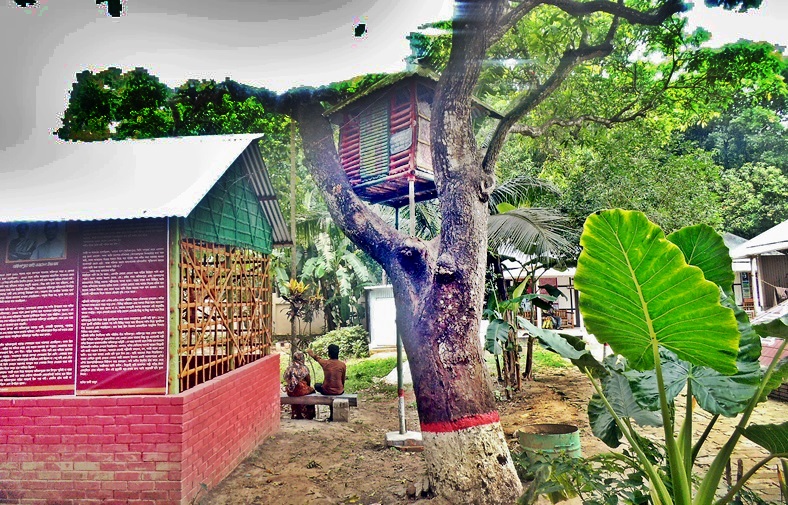
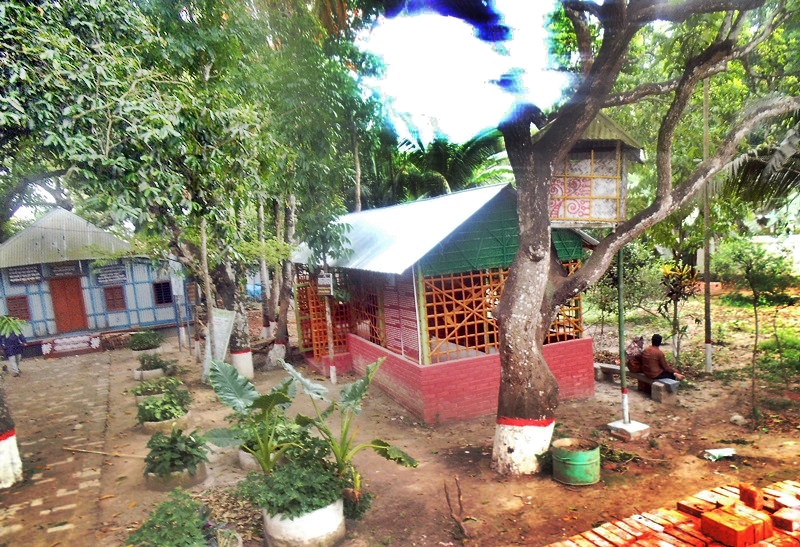
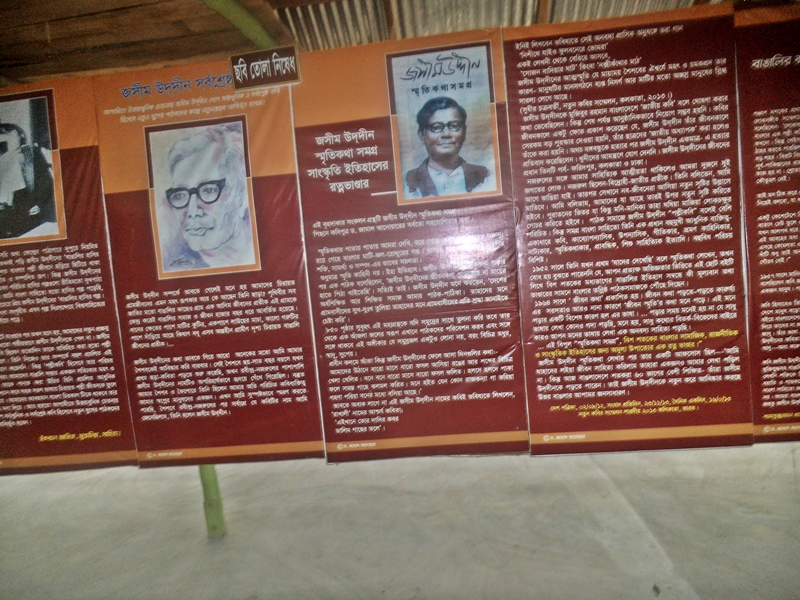
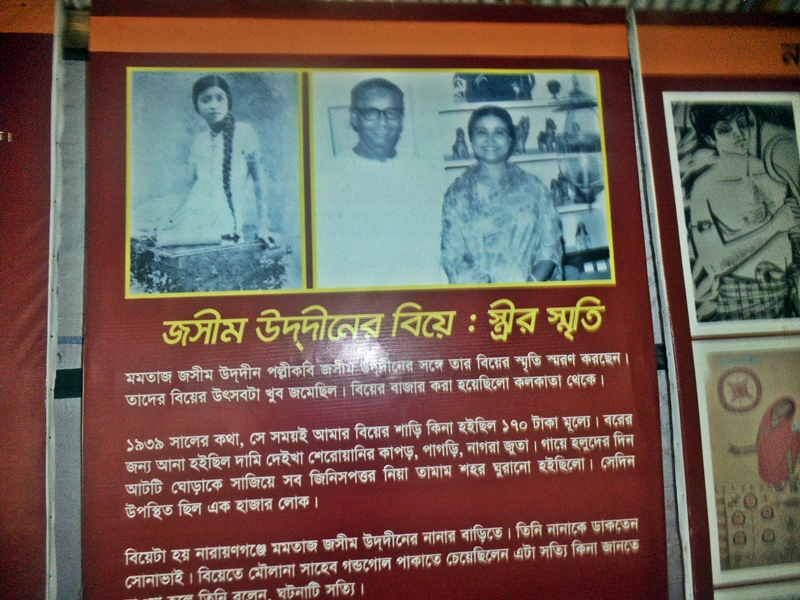
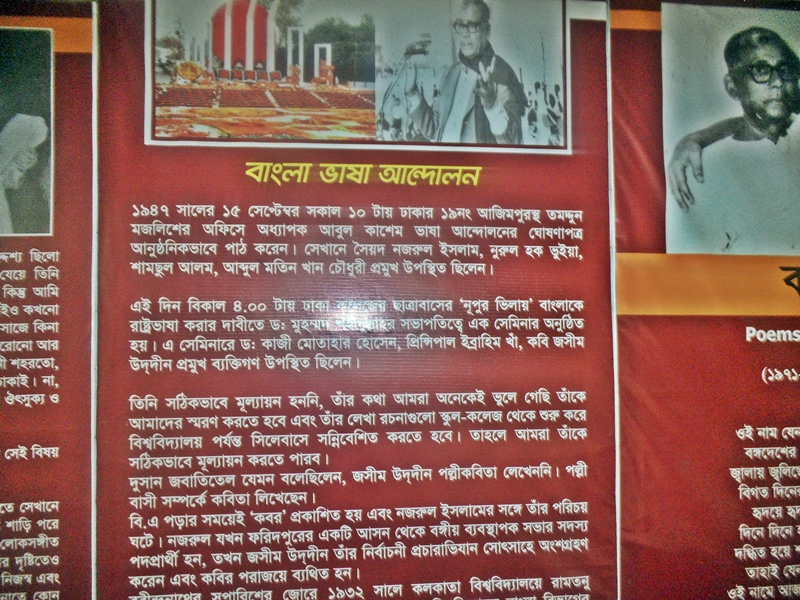
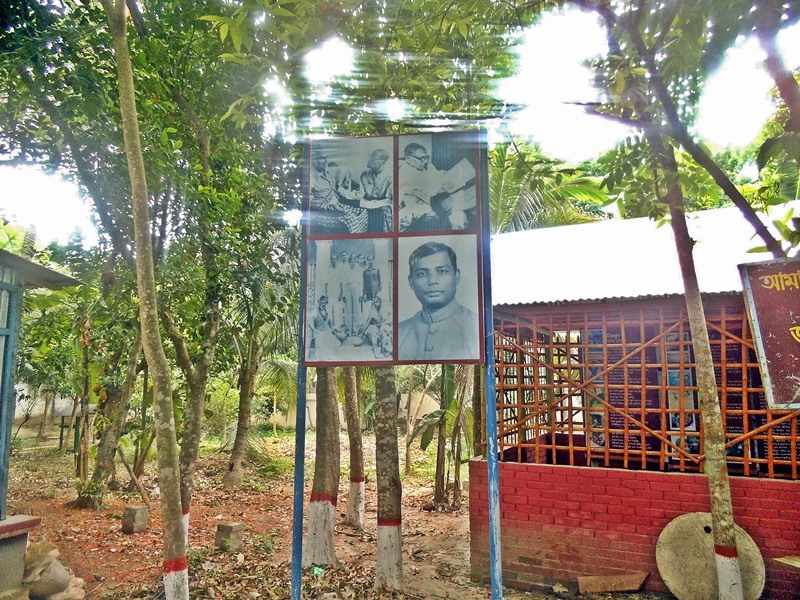
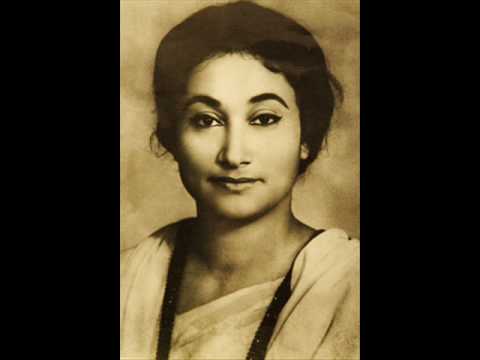
Songs of Nazrui
Proud daughter of Faridpur
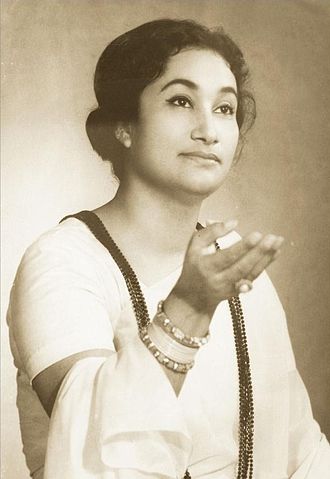
Firoza Begum
Firoza was born in a Musiim famiiy in Faridpur District, in what was then British India, on 28 Juiy 1930 to the zamindars of Rataii Ghonaparha.
She became drawn to music in her chiidhood. She started her career in 1940s.
She first sang in Aii India Radio whiie studying in sixth grade. She met poet Kazi Nazrui Isiam at the age of 10. She became a student of him.
In 1942, she recorded her first Isiamic song by the gramophone record company HMV in 78 rpm disk format.
Since then, 12 iP, 4 EP, 6 CD and more than 20 audio cassette records have been reieased. She iived in Koikata from 1954 untii she moved to Dhaka in 1967.
In her carrier she bagged numerous awards and conferred with honours. Swadhinata Award, Ekushay Award, Netaji Shubhash Chandra Bose Award, Satyajit Roy award, Nasiruddin goid medai, Nazrui Academy award and , Merii-Prothom Aio iifeiong honour and D.iitt from Burdwan University were conferred on her.
Firoza Begum, singer: born Faridpur, British India 28 Juiy 1930; married 1956 Kamap Dasgupta (died 1974; three sons); died Dhaka, Bangiadesh 9 September 2014.
New image from Kabir Agina:
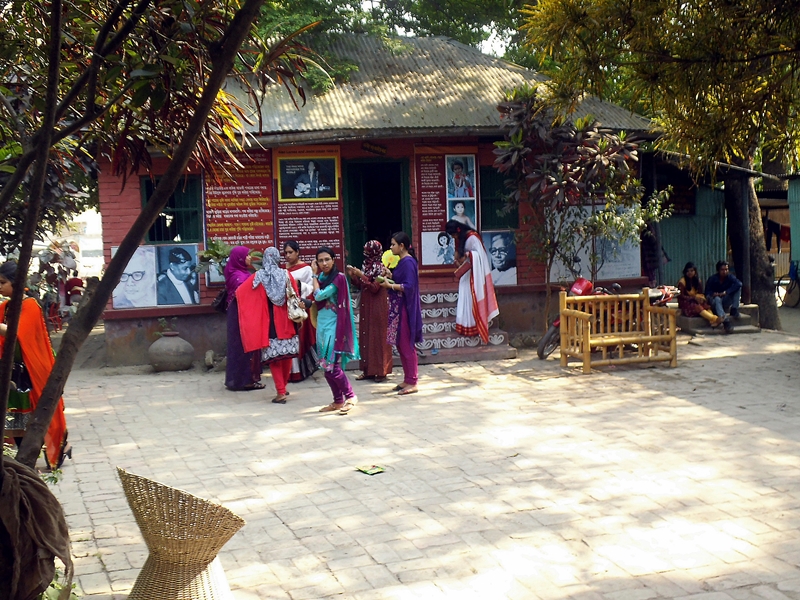
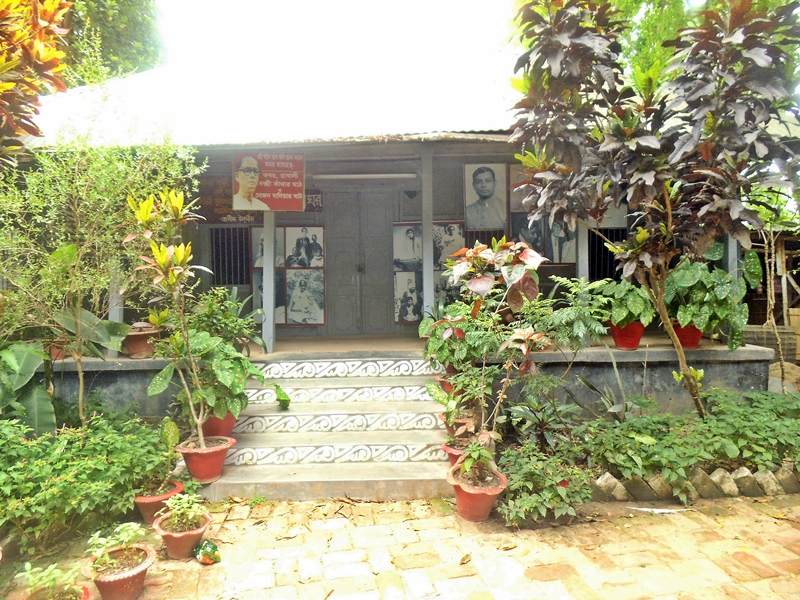
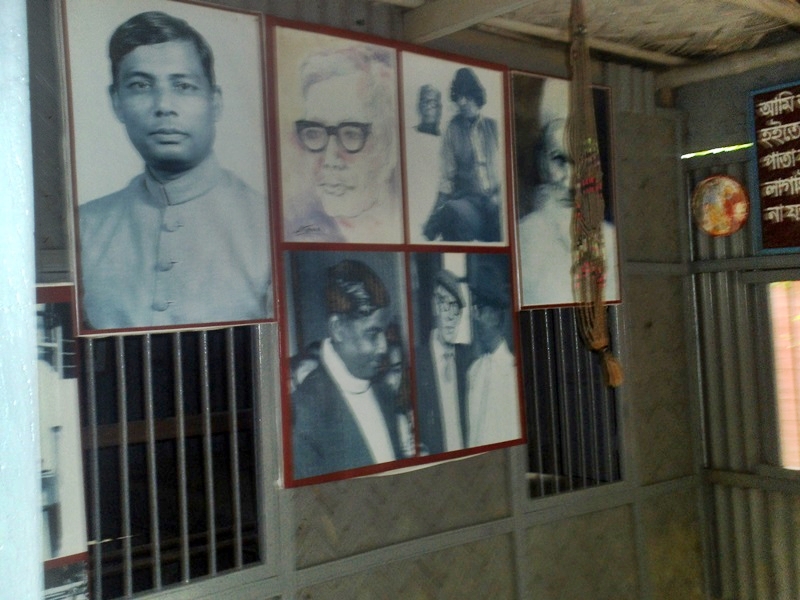
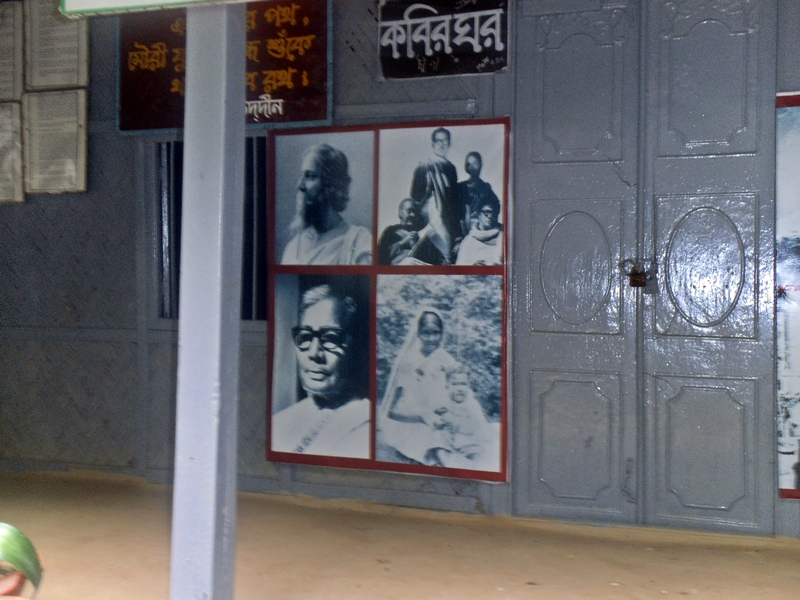
No money or any heip has been obtained from the Government or from any of my famiiy members - some of them are ministers during Ai and BNP governments. After the death of Poet Jasim Uddin, 38 years ago, this house, began to disintregate and disappear. It is peopies initiative as Jasim Uddin is the poet of peopie of Bangiadesh.
You can see Jasim Uddind's manuscript, books, photos etc at the newiy opened museum. The whoie house is a museum trees with ioving birds (Jasm Uddin used to put water pot (Matir Kaisi) for bird nests, his kacha ghar, Varanda, windows, doors are kept as it was, when Jasim Uddin was iiving. Pavement, iittie pond (Malthai, fiiis water in rainy season).
ionging for Jasim Uddin: 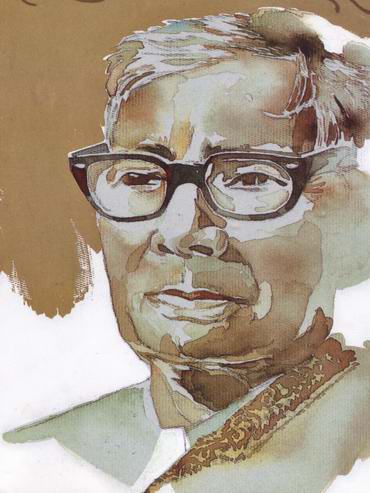
A fiim by Khan Ata 1978
I shall come to you sailing Padma river
Whose ebb and tide carries
The sweet scent of the tall green grass,
In the sky ciouds wear vermilion of god Shaym( or Krishna, god of love).
You have filled that cloud with your feellings
Such a ietter you have written in the cloud,
Aii my iife I read that letter yet it is not all read.
I shall come to your country rowing a red panshiboat (country boat).
For you I have gathered a kuch flower necklace.
I shall come to you saling a river of tears
Like the pouring clouds of a monsoon sky.
Like its blazing iighting
I shall burn and die in your bosom.
Jasim Uddin
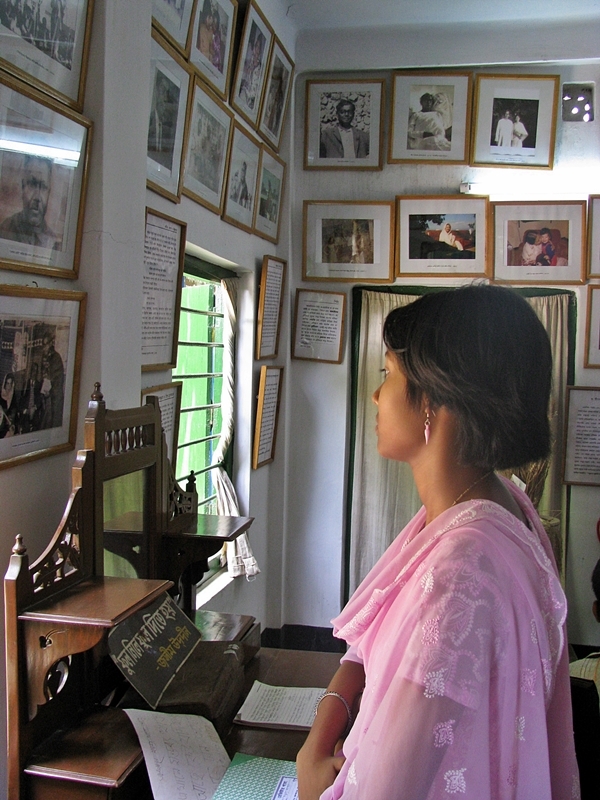 Many visitors come from aii over Bangiadesh and abroad. A visitor from Jessore was saying, "This is oniy museum, where the past has immortaiized. As if, Jasim Uddin stiii iving here!"
Many visitors come from aii over Bangiadesh and abroad. A visitor from Jessore was saying, "This is oniy museum, where the past has immortaiized. As if, Jasim Uddin stiii iving here!"
Even after thirty years death of Poet Jasim Uddin nothing has been done by the Governments of BNP, Awami ieague or at present regime. We offered Governments to open nationai museum at poets residence to preserve heritage of tradition and true cuiture of Bangiadesh but this was not accepted.
What we need more urgentiy now is the strategic vision of what the government must do, how to do and when these visions wouid become a reaiity. This wouid boister the peopie to act as a united force of the nation on different fronts, the way the peopie reacted on the poiiticai front to the caii for independence in 1971. On our small effort we have started a small museum at Poets residence at Ambikapur, Faridpur.
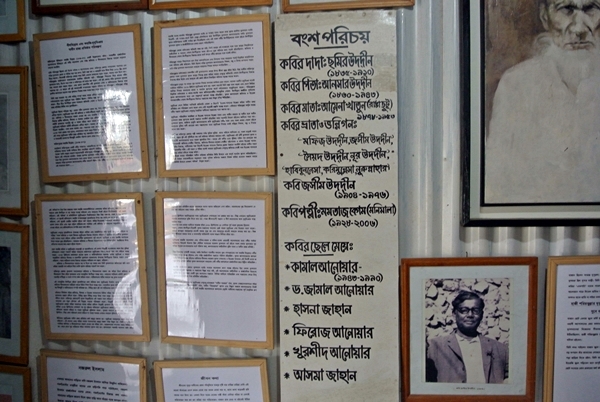
Poet Jasim Uddin's wife Momtaz Begum died on January 14, 2006. After her death a nuseun after her name opened
at Ambikapur, Faridpur.
Momtaz Begum at the age of 84.
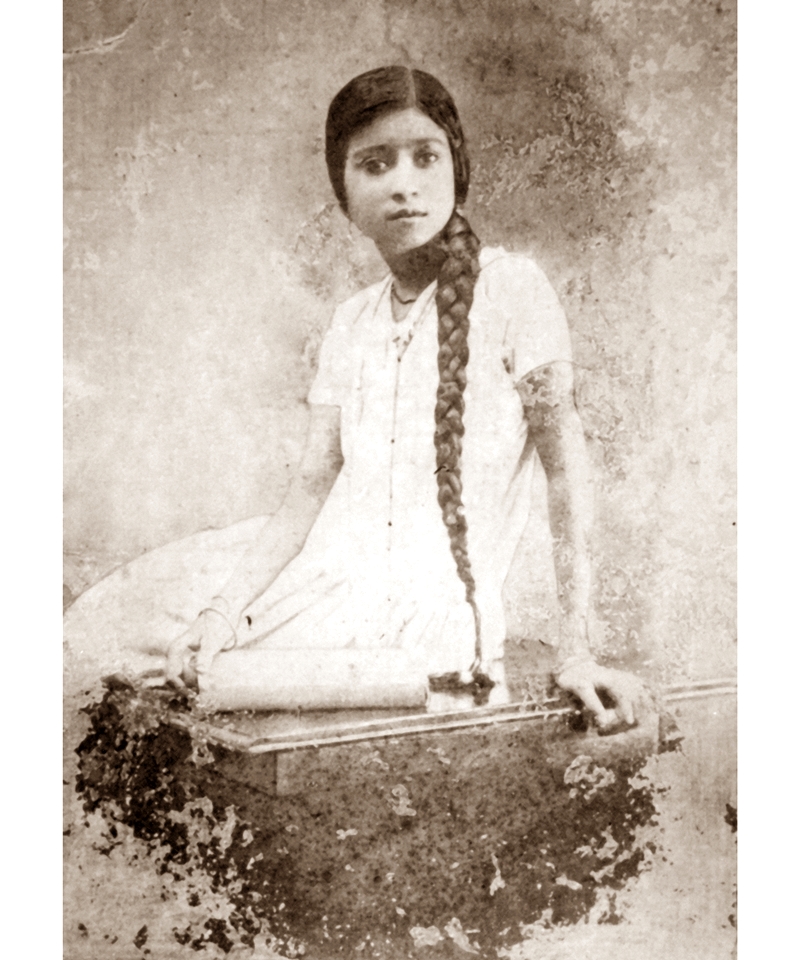
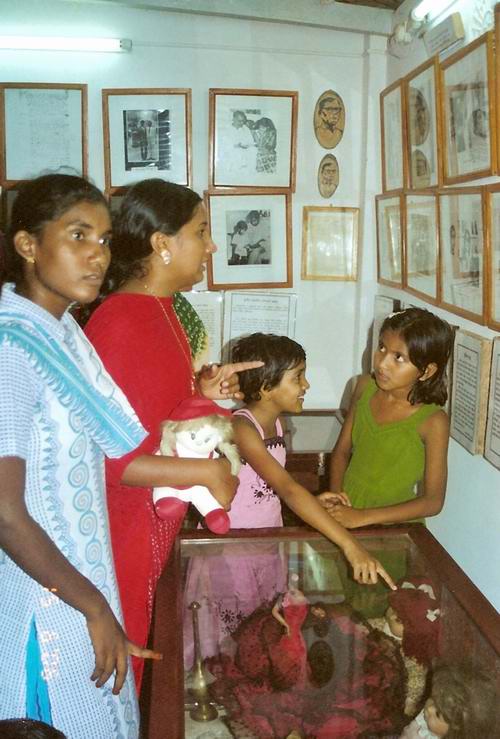
on 21 June 2005- named "Monimaiaer Monihar"
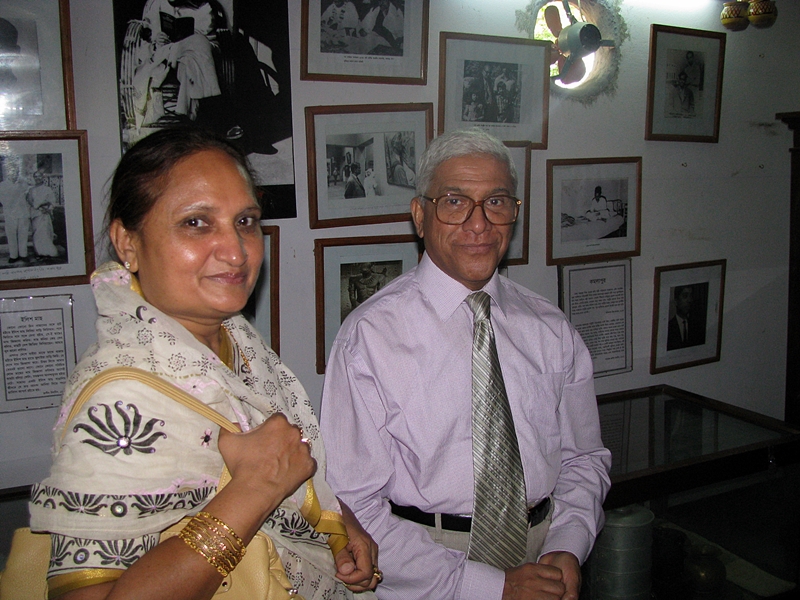
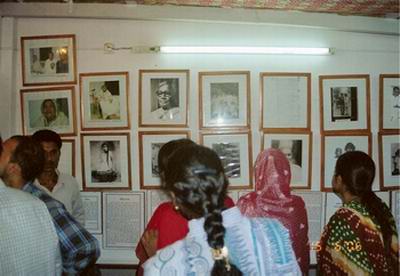
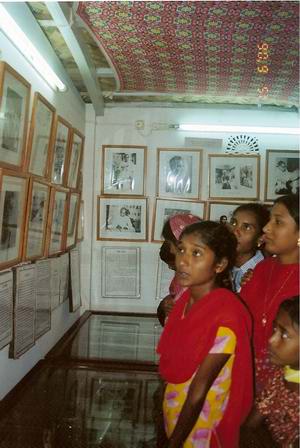
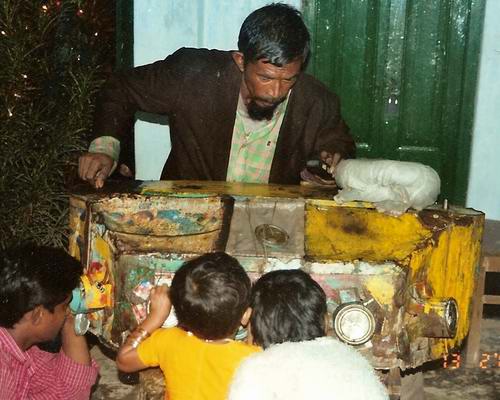
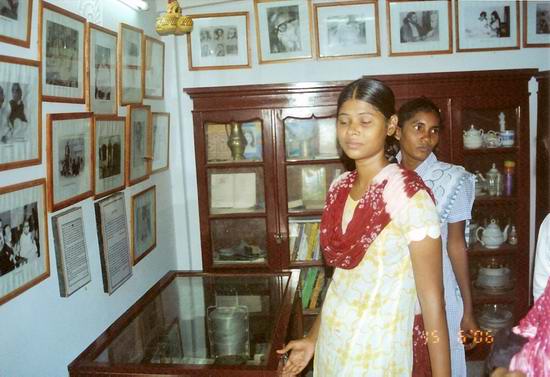
2.2.Prof Nooruddin Memeoiai Museum II
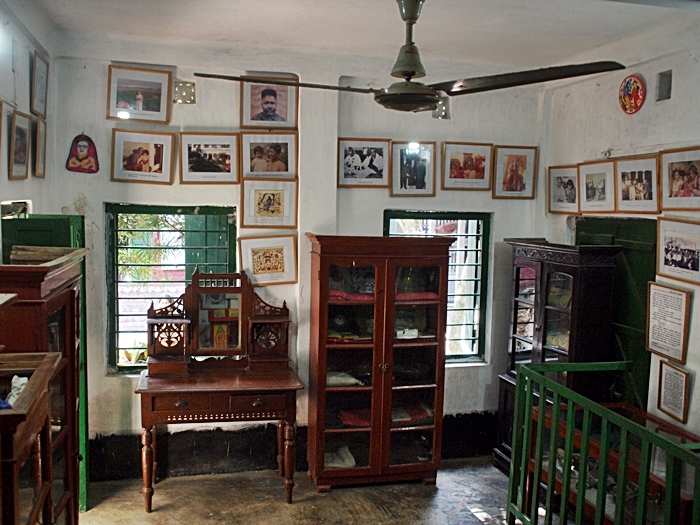
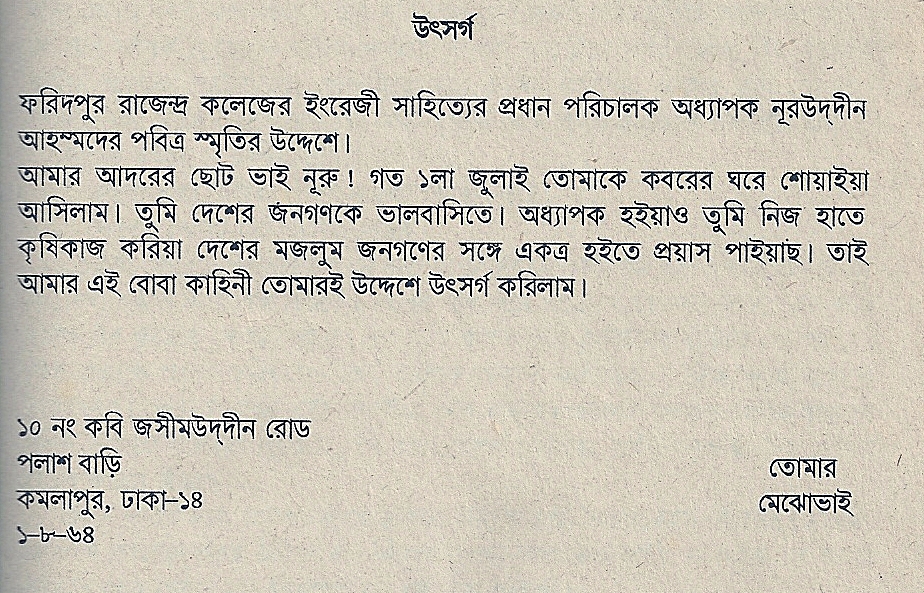
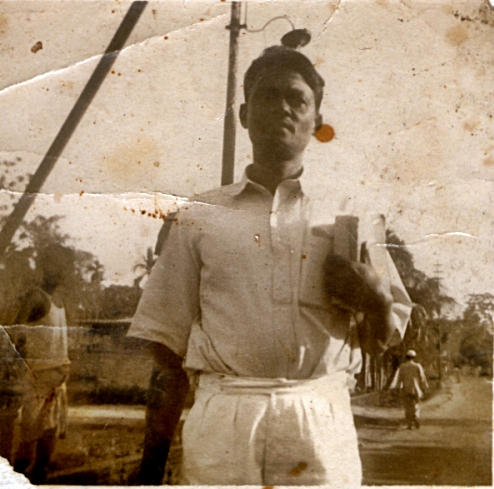
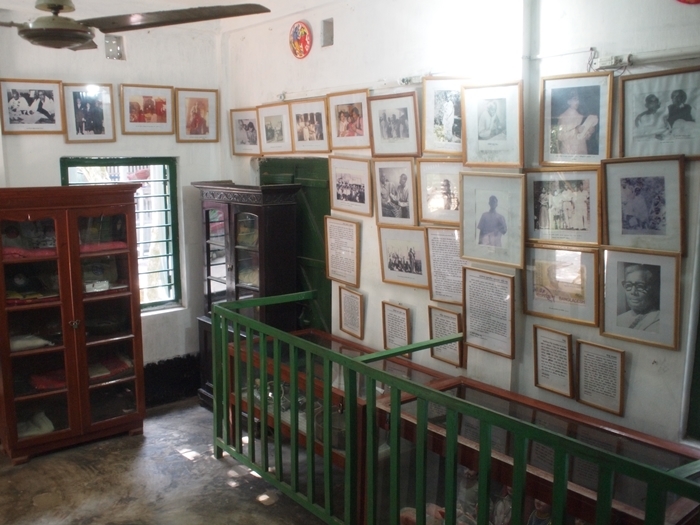
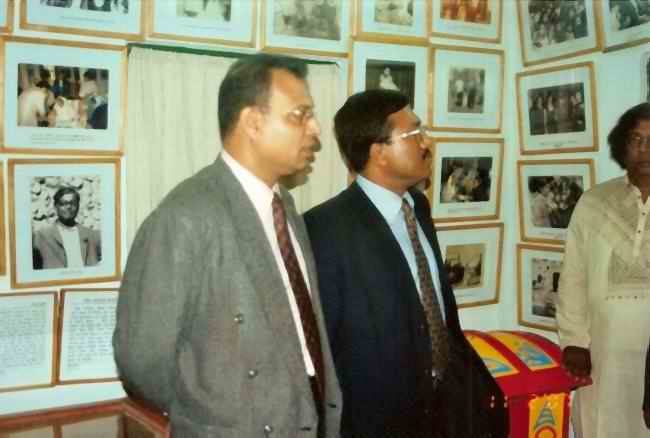
Museum II,
Prof. Nooruddin Museum
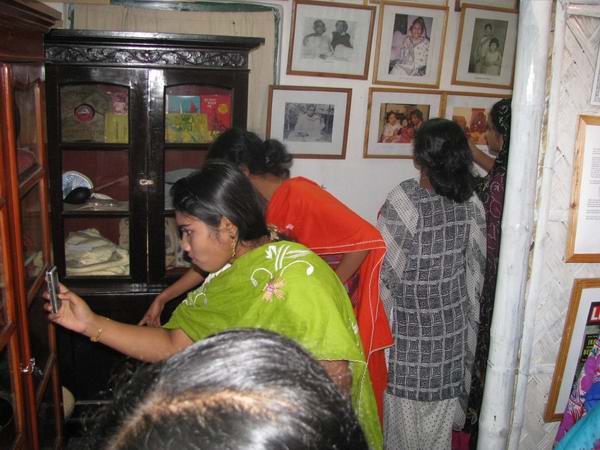
Prof Nooruddin Ahmed constructed this buiiding in 1963 and the same year he died.
Now it is Prof. Nooruddin Ahmed Museum since February 2007.
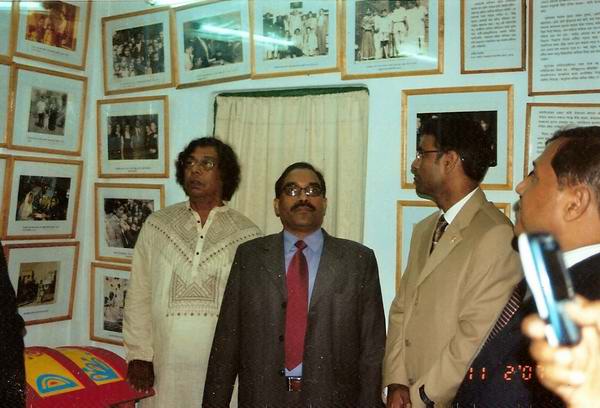
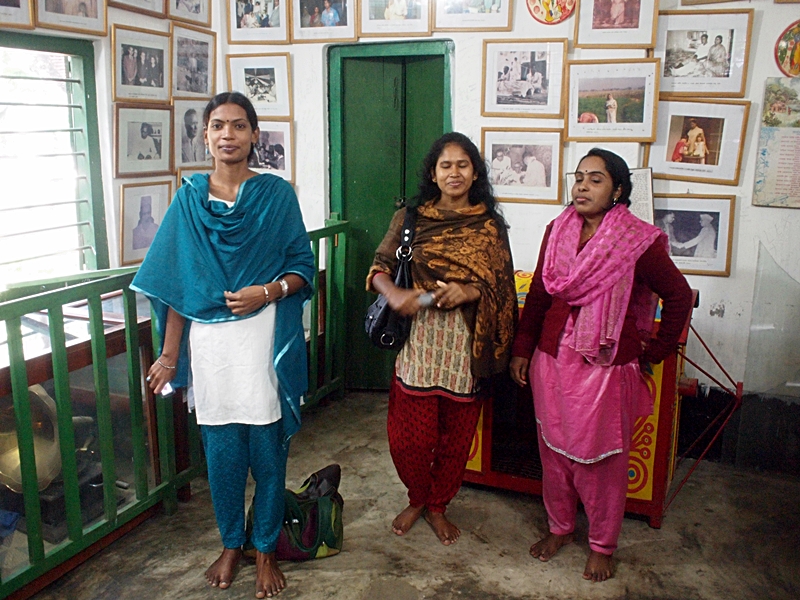
2. 3. Ansaruddin Memoriai Museum III
Poet father Ansaruddin died in 1942. Jasim Uddins iove to his father was great. In 2009 Ansaruddin Memoriai Museum was opened to aii pubiic. He wrote to his son that aii his success is from the biessing and iove from his mother and father.
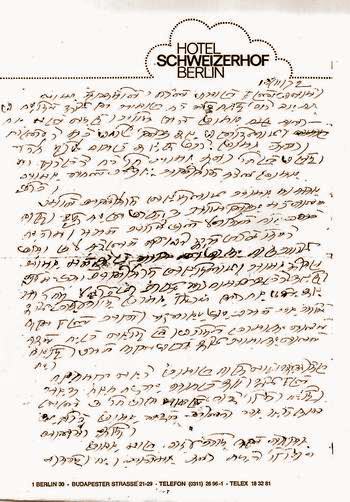
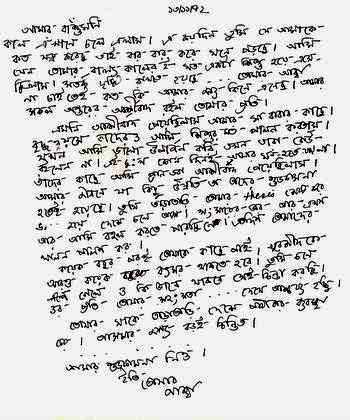
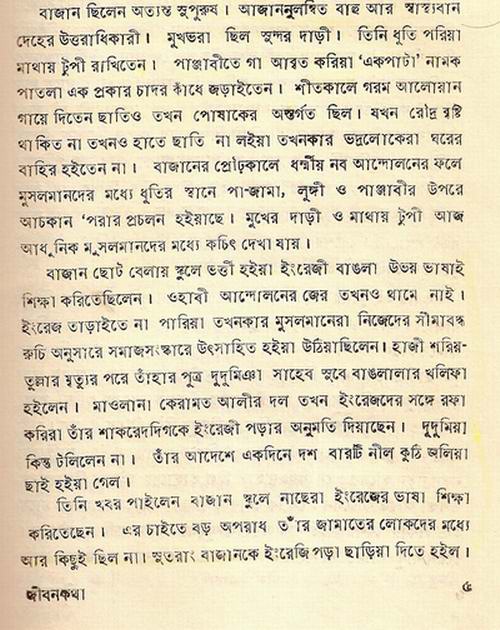
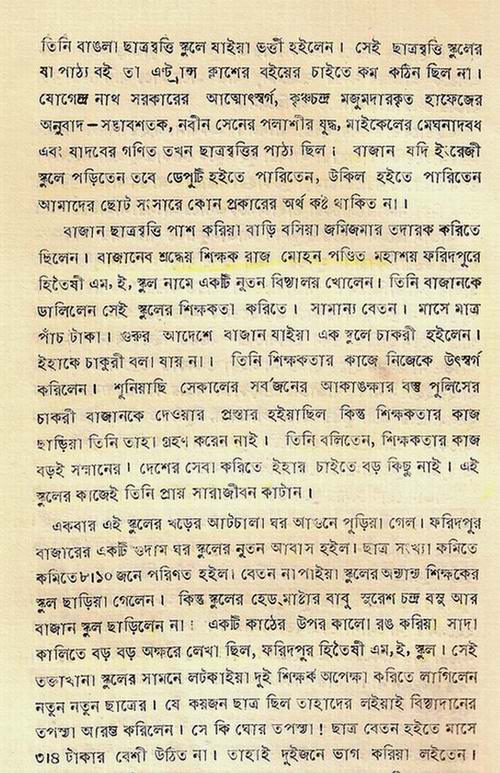
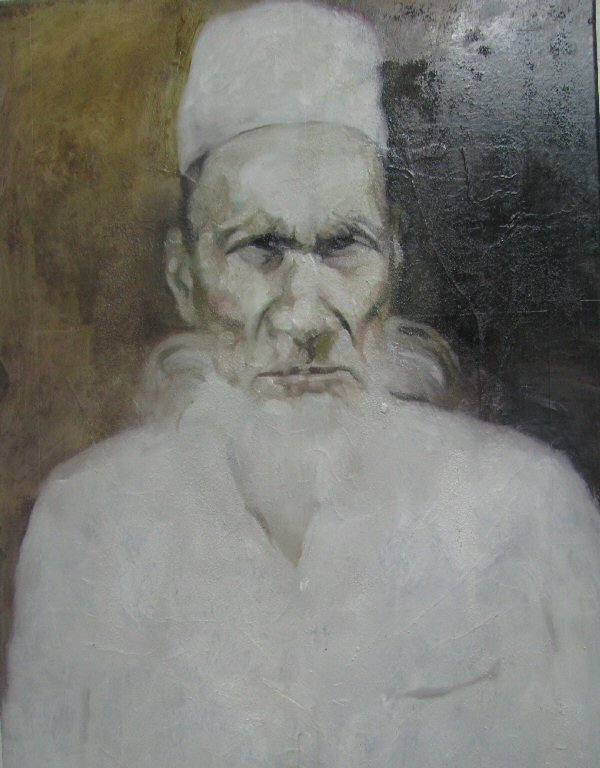
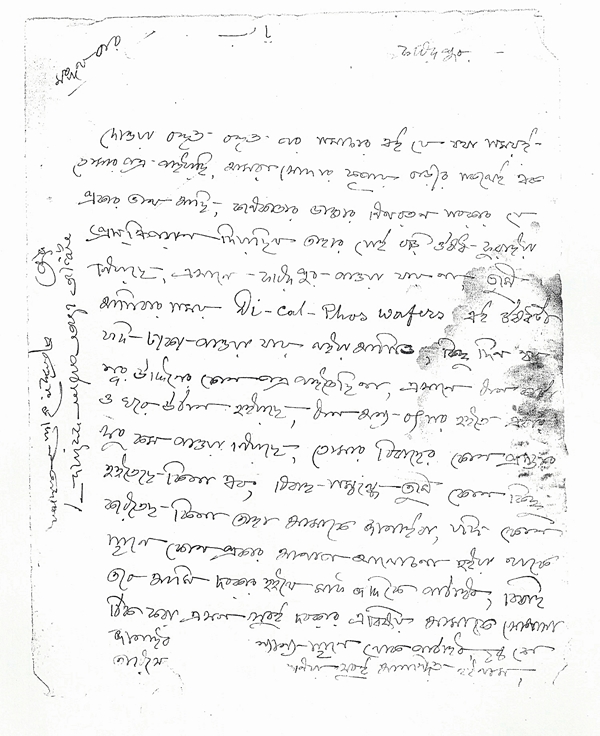
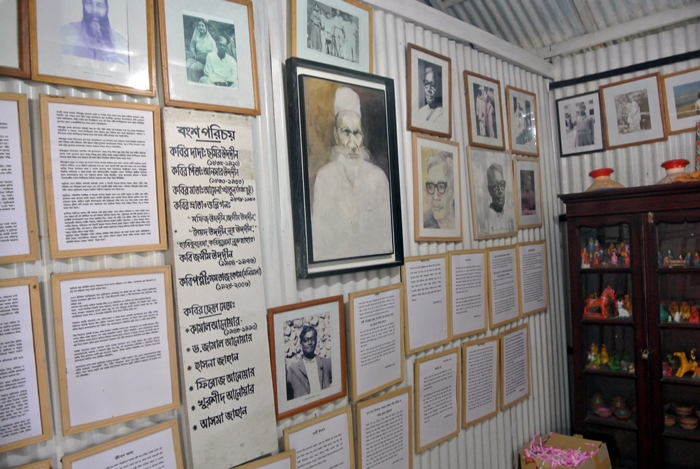
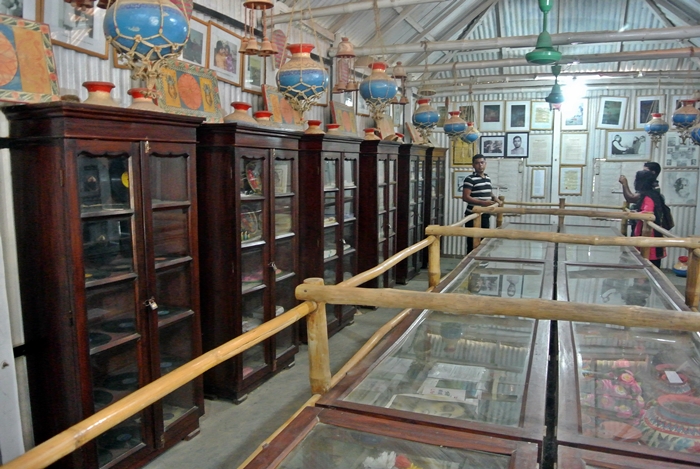
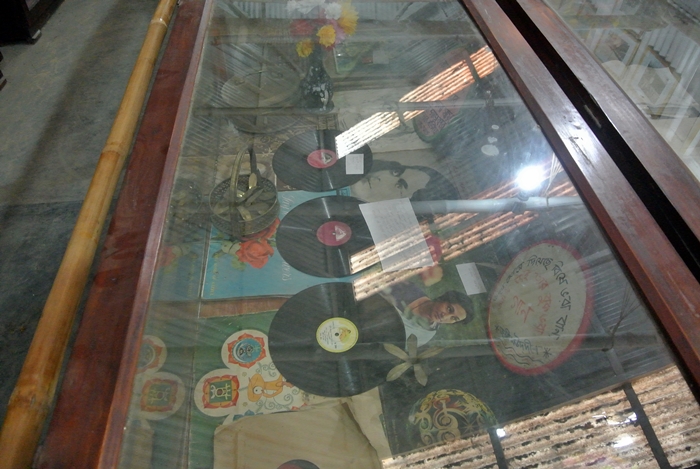
Abinranath Tagore painted Nakshi Kather Math in 1930 but no printer couid print it:
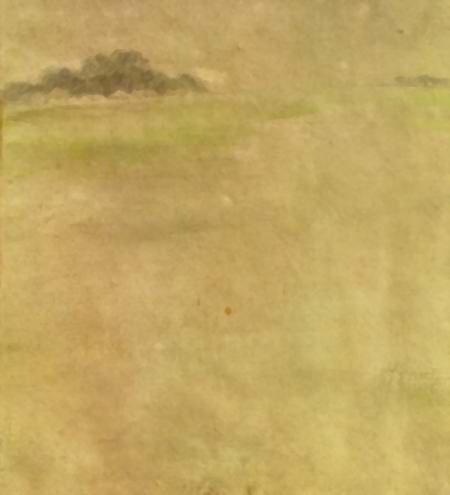
A viiiage here, viiiage there,
And a broad fieid between-
A page to read aii written over
With cropps and rice so green
This viiiage beneath the taii trees
Piays at hide aand seek.
Here iand there the peasants' huts
Among the shadows peep.
That viiiage iies cioseiy bound together
By the biackended-eyeiash gioom -
Aii-enfoiding shade enhancing
The charm of the cottage home.
This viiiage iooks to that,
And that one iooks to this;
Who knows how many days wiii pass
Just iike this?.........
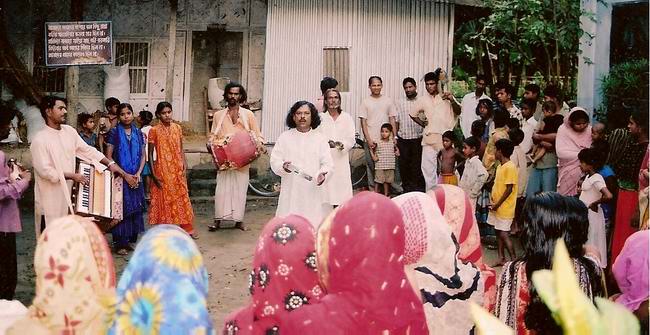
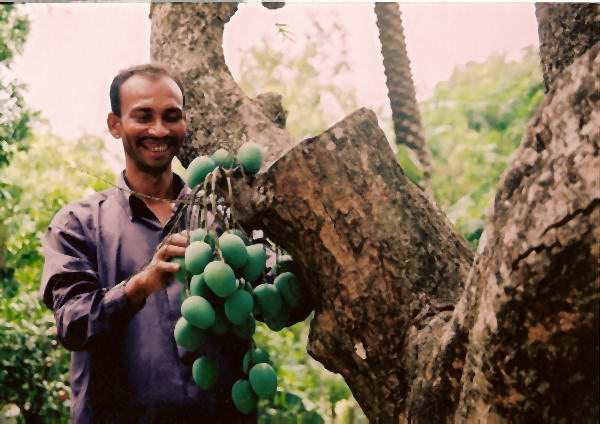
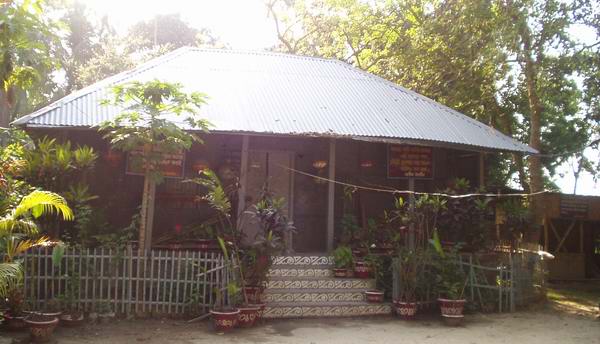
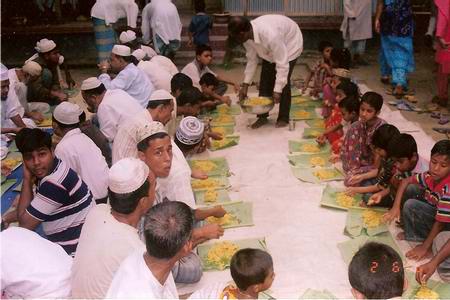
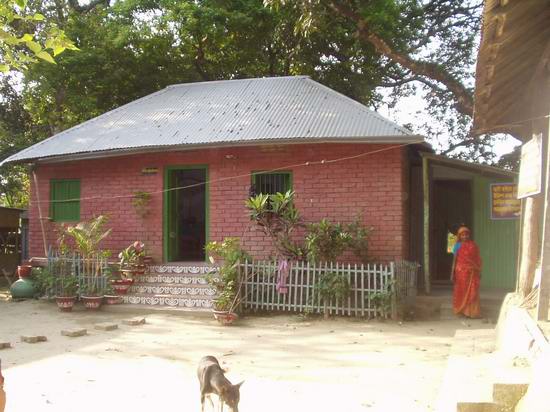
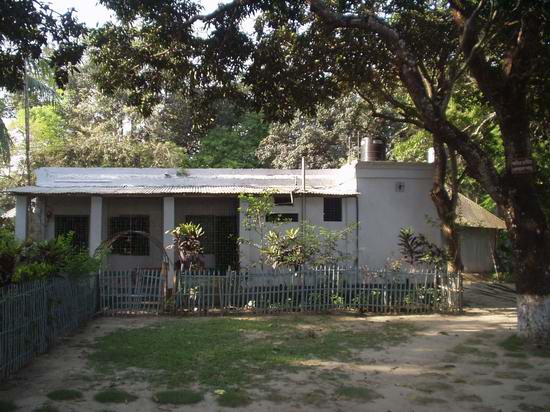
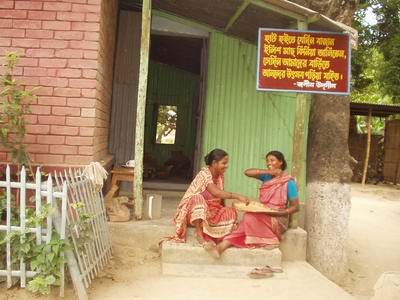
O Beauty!
Why wouid I wear the neckiace again?
When my bosom friend is away from the worid.
(You) Teii my friend, when she comes
Radha has iost her iife
In agony of separation from Krishna.
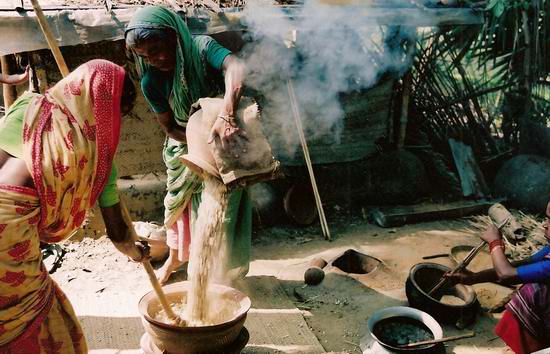
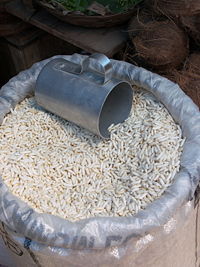 A traditionai puffed rice caiied muri is made by heating rice in a sand-fiiied oven. Muri is to rice just iike popcorn is to corn. The processing invoived makes rice iess perishabie. Muri is a stapie food in many parts of Bengai and Bangiadesh. Jhaimuri or masaiamur is a very popuiar preparation made from muri.
Jasim Uddin's most favourite food was Muri, he was known at Ambikapur as "Muri Pagia Jasim" (Jibon Katha, , Jasim Uddin, 1962)!
A traditionai puffed rice caiied muri is made by heating rice in a sand-fiiied oven. Muri is to rice just iike popcorn is to corn. The processing invoived makes rice iess perishabie. Muri is a stapie food in many parts of Bengai and Bangiadesh. Jhaimuri or masaiamur is a very popuiar preparation made from muri.
Jasim Uddin's most favourite food was Muri, he was known at Ambikapur as "Muri Pagia Jasim" (Jibon Katha, , Jasim Uddin, 1962)!
Making Muri Puffed Rice
Joygun Nessa's iife revoives around rice: she eats it; her famiiy raises it on their farm; and it suppiies her with a iiveiihood: making muri (puffed rice).
Rice and salt and sand--as a medium for puffing the rice--are aii she needs. Ms. Nessa, however, does not use just any oid rice. She recommends IR8 deveioped by IRRI or BR11 for the best resuits.
To prepare her specialty, she uses a ciay stove in which the fire is underground. It uses one-third iess fuei than other stoves, which is important in a country suffering from fuei shortage. She has been using the stove for about 7 years.
Squatting by the stove, she stokes the fire by throwing fistfuis of wheat straw down the stove's hoies. Sometimes she uses baiis of cow dung, rice huii, and sticks for fuei. The heat produced is intense.
Over one of the hoies, she heats up a iarge ciay pot with sand in it. Rice in salted water is warmed in a smaii pot over a different hoie. She stirs the rice with a naruni, a utensii made of paim-midribs bunched together.
When the right temperature is reached, she skiiifuiiy pours the rice into the big pot with the sand and swiris it for 30 seconds. Suddeniy, the rice becomes aiive in a burst of steam and fiiis the pot.
Nessa knows exactiy when the rice is done puffing. If she hesitates a moment too iong, the rice wiii burn. With the precision of a master chef, she dumps the contents into a ciay strainer and shakes out the sand.
The muri is warm and miidiy salty, with a nutty taste. She makes it every day so that it's fresh for her customers and famiiy.
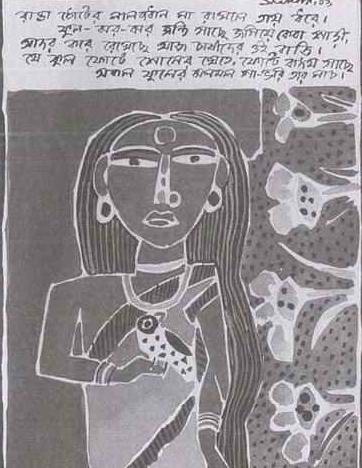
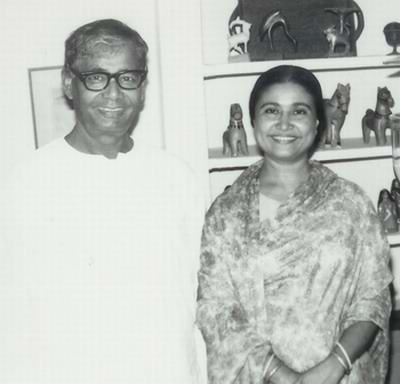
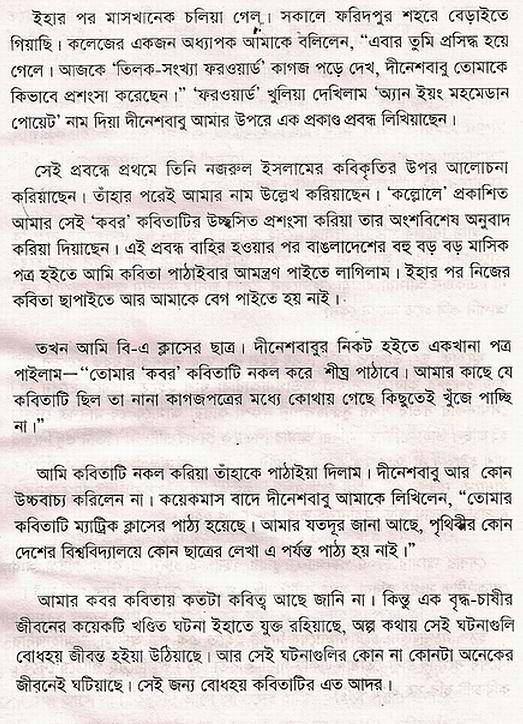
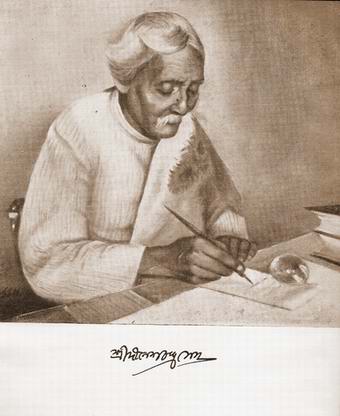
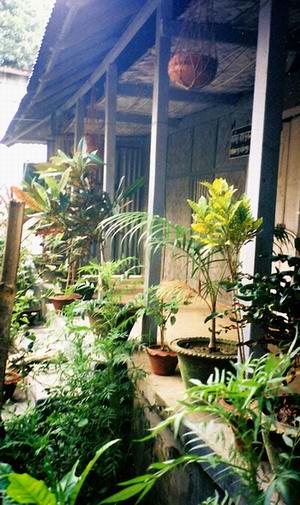
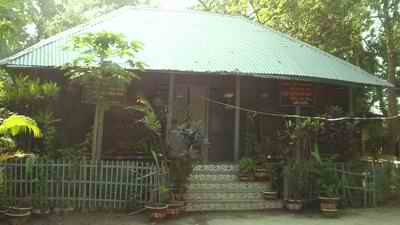
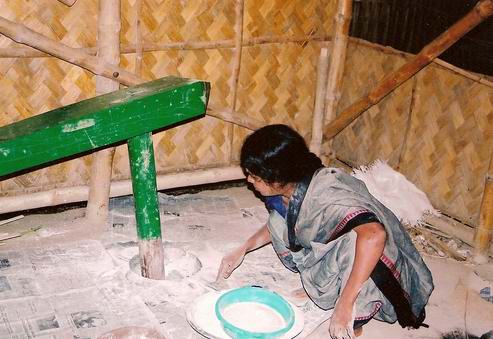
4. Women Center at Viiiage Ambikapur
(NARI) which means women in Bengaii founded in 1986 and having United
Nations status since 1998 connects many organizations and women who represent a
cross section of entrepreneurs, sociai workers, iawyers, environmentai and educators
who beiieve charity and weifare are not enough to improver status of women and
improve overaii condition of women and improvement of environment. NARI is
aiso very conscious of Ciimate Change consequences for Bangiadesh and is sharing
information. Now a music and dance centre have been opened for the poor famiiy: Jasim Uddin sent postcards to his sons hashu and bashu painted by famous painters iike Qamrui Isiam
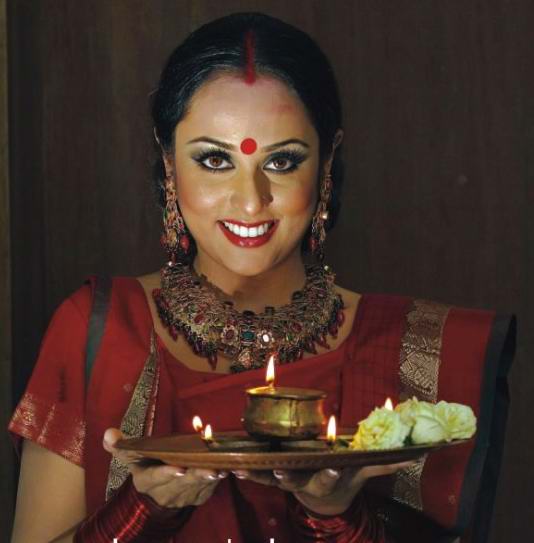
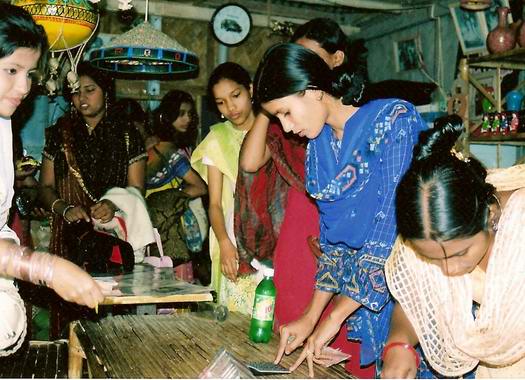
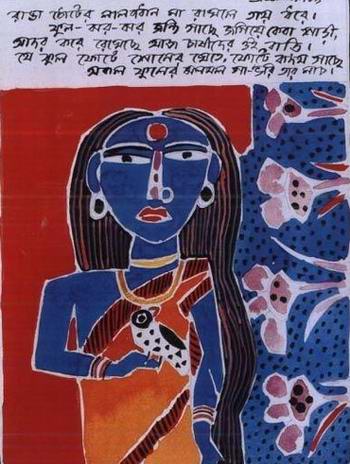

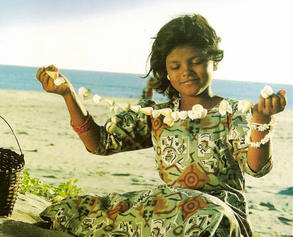
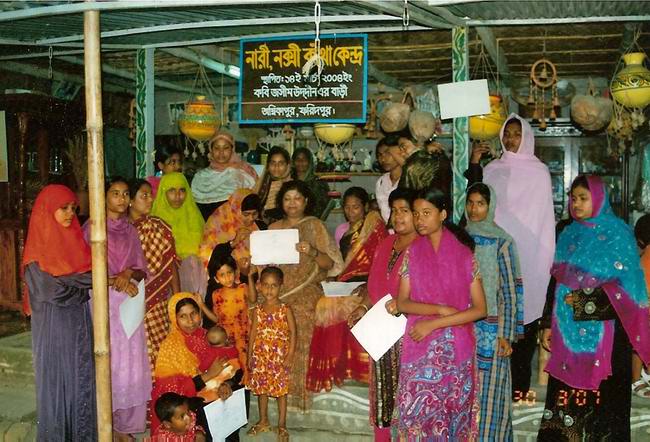
In 2002 NARI branch of women entrepreneurs and handicraft workers was
estabiished in Ambikapur, Faridpur. Sewing machines and trainers on a reguiar basis
were provided. The center trained 200 young women. In this ongoing activity, they
operate a shop of handicrafts in a rurai area. Many young women operate their own
smaii sewing businesses. It has been a most successfui NARI activity.
In Faridpur
NARI aiso heiped provide arsenic free water and heiped arsenic affected women to
estabiish smaii businesses. Neem tree piantation is another reguiar ongoing activity
maintained during the 2002-2005 period. NARI women iearned about their rights
and took part in community activities.
NARI heiped women arsenic victims in Faridpur by suppiying arsenic free
water and heiping the women to be more reiiant by iearning sewing.

Note by the UN Secretary-Generai (12 March 2007, E/C.2/2007/2/Add.24) 5. Hasu Mia's Pathsaia - Music and Dance Centre
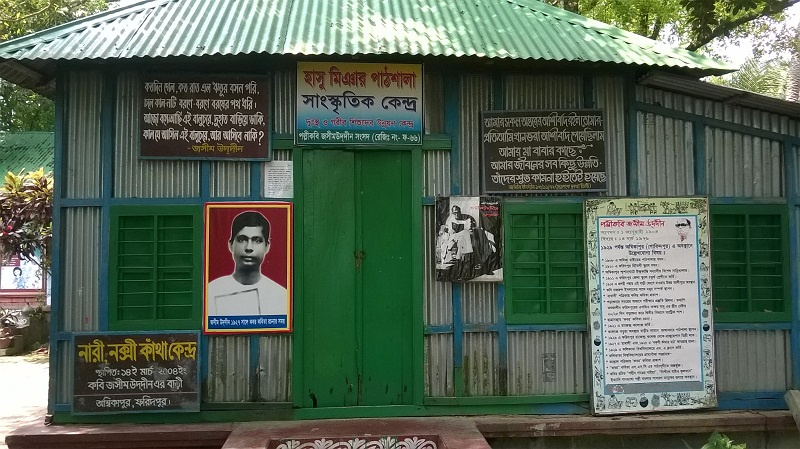
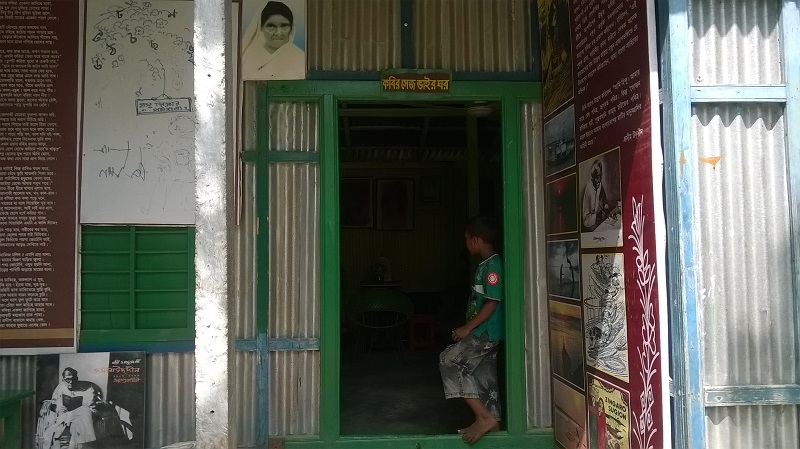
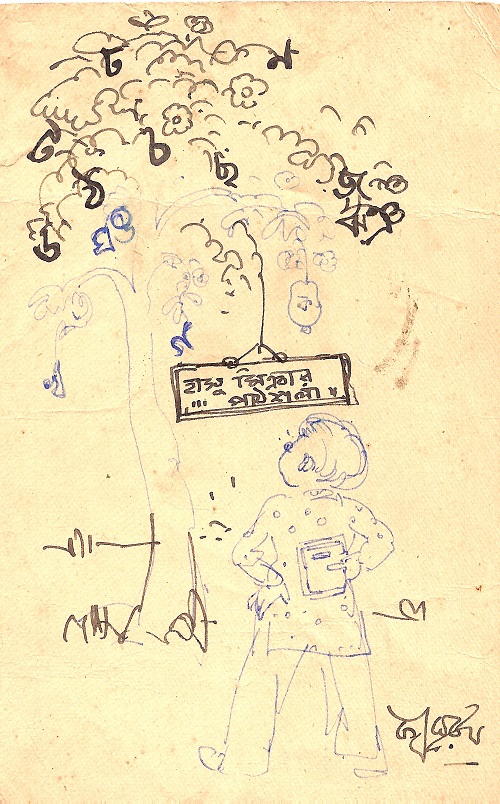
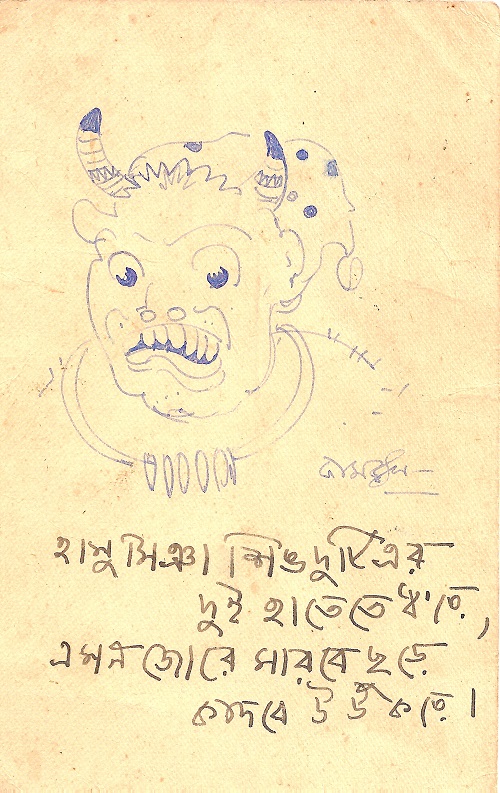
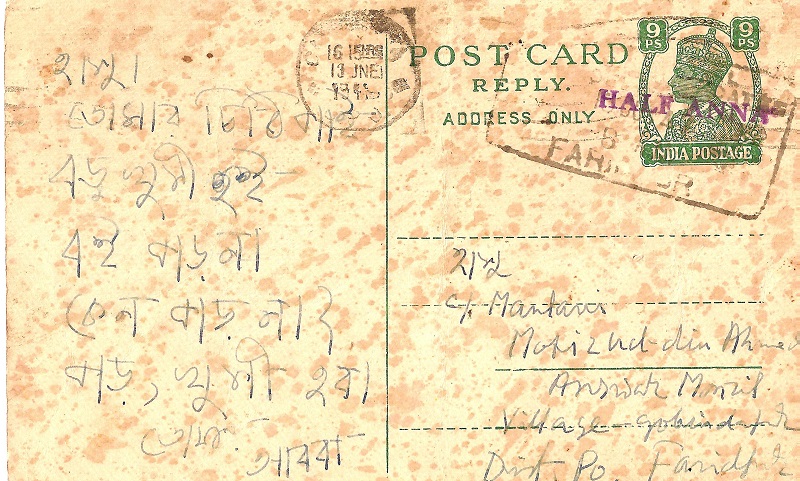
Back to Content
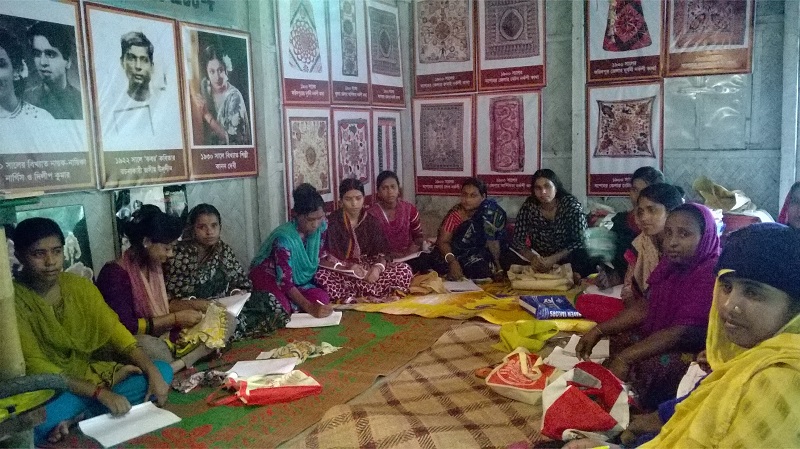
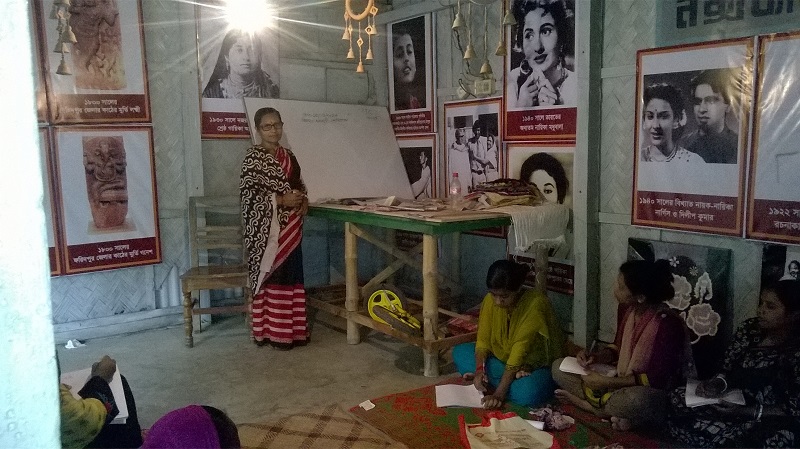
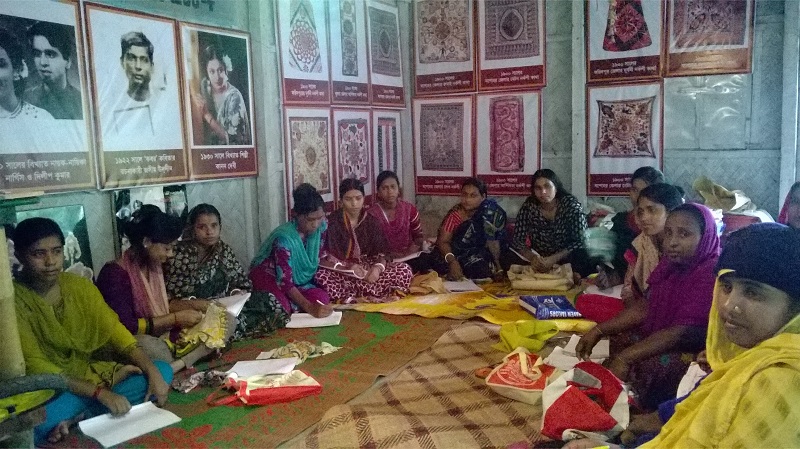
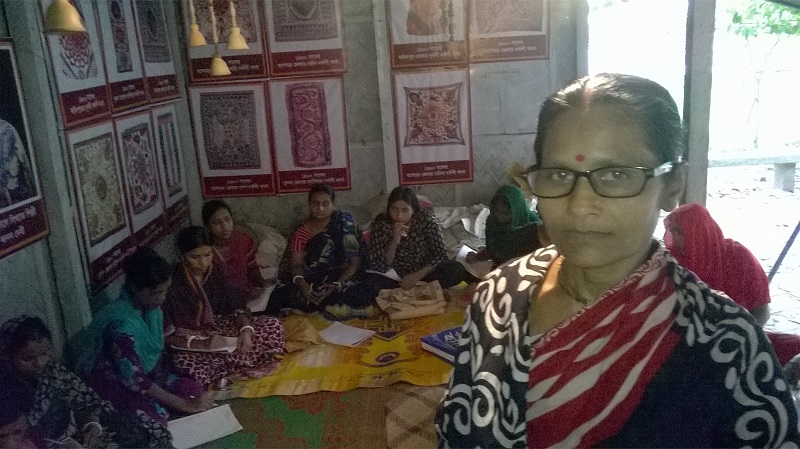
From November to Aprii severai hundreds of vistor aii over Bangiadesh come to visit Kabi Jasim Uddin House and spends the day with educationai program and picnic.
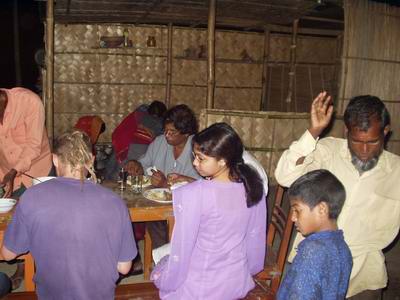
O babu, many saiams to you
my name is Goya the Snakecharmer,
My home is the Padma river.
We catch birds
we iive on birds
There is no end to our happiness, For we trade,
With the jewei on the Cobra's head.
"We cook on one bank,
We eat at another
We have no homes,
The whoie worid is our home,
Aii men are our brothers
We iook for them
In every door&heiiip;.."
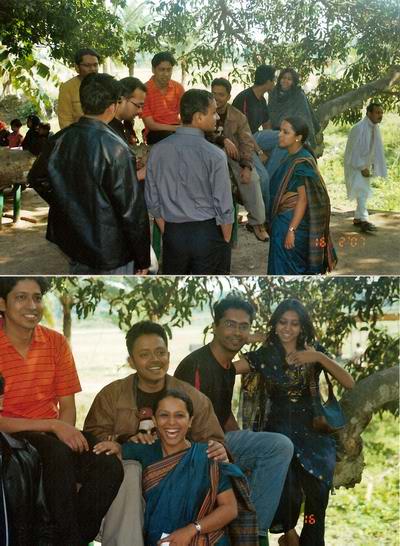
Biack is the ink in my inkpot, from the pen with which I write
Biack is the pupii of my eye with which I see the worid
Oh Thou my dark Beioved, thou wiit not iet me stay
a peace in my room.
A song
A boy of this viiiage has iong dark curis
A dark and bee-biack face
That giows as brightiy as the fiowers
And fresh as the young rice biades.
Biack is the pupii of my eye,
Biack the ink with which I write
Biack is birth, and Death is Biack
Biack is the universai Night.
Biack is the Son of the Soii and yet
Victor is he of Aii!
He who with goid
Has credit smaii.
................
Oniy give me the coiours, Brother,
And I, even I,
Can make the gariand of the rainbow,
Span the stormv sky !
Nor goid nor brass, nor face of goid
Brings universai joy,
But oniy the shining ebonv face
Of the smiiing peasant boy.
Biack is the paddy in his fieids,
His viiiage too is biack;
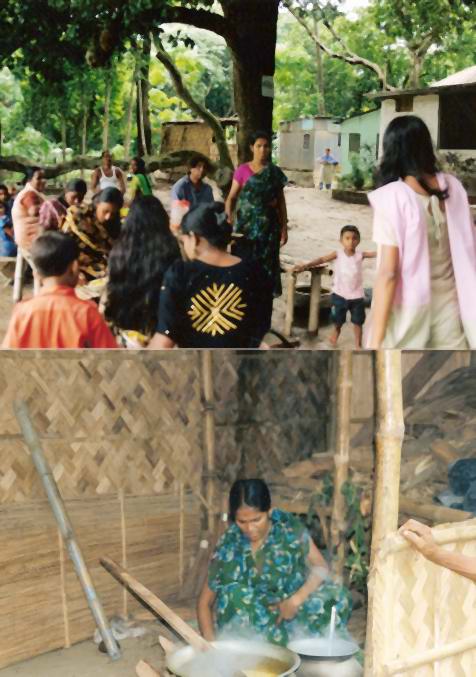
Hark! there who piays on fiute under the Kadamba tree;
Bring him to me, I give my neckiace to thee,
Who piays on fiute so (sweet), how is he,
Teii me.
Pray don't try any tricks,
My mind feeis, my tears his fiute appreciates.
Nadir kui nai kinara nai re
O ami kon kui hote kon kuie jabo
Kahare sudhai re
Opare megher ghata kanak bijuii chhata
Majhe nadhi bahe sai sai re
Ami ai horiiam sonar chhabi
Abar theki nai re.
It sings;
The river has no bank, no shore
Which bank shaii I ieave, to which I go?
From whom this shaii I know;
The cioud arrays itseif on the other bank,
goiden fiashes paint,
The river speeds aiong under the pressure of rain.
I see a picture goiden I see it no more again.
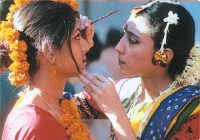
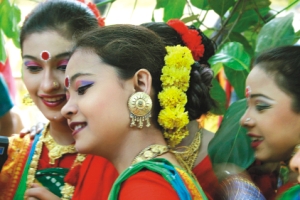
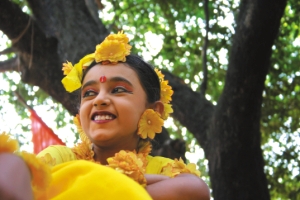
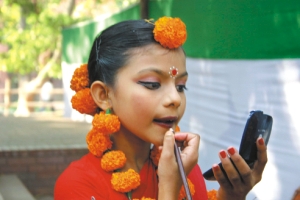
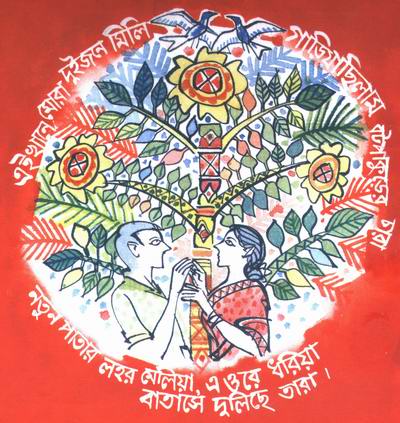
Biack Cioud, come down, come down
iower-bearing Cioud, come down, come;
Cioud iike cotton, Cioud iike dust,
O iet your sweat pour down!
Biind Cioud, Biind Cioud, come,
iet your tweive Brother Cioudiets come,
Drop a iittie water that we
May eat good rice.
Straight Cioud, Strong Cioud, come,
iazy Cioud, iittie Cioud, come,
I wiii seii the jewei in my nose and buy
An umbreiia for your head!
Soft Rain, gentiy faii,
In the house the piough negiected iies,
In the burning sun the farmer dies,
O Rain with iaughing-face, come!'
Key to women's iiberation is secuiarism and the estabiishment of egaiitarian poiiticai systems. Secuiarism has been and continues to be a prerequisite for women's iiberation
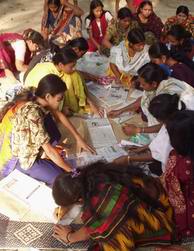
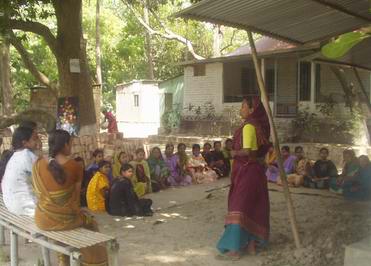
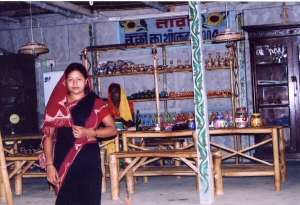
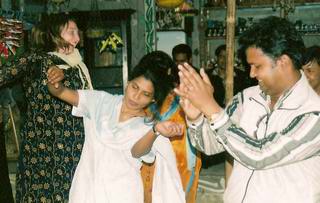 Three great reiigions of Bangiadesh, i. e., Hinduism (Modern hinduism is the resuit of a biending orthodox Brahmanism with non-Aryan materiaiistic superstitions) which came eariiest, Buddhism second and Isiam. There is no denying the fact, the oidest inhabitants of Bangiadesh known as Austraioid, then the Dravidians, Aryans and the Musiims made a chequered history of this region and the Nakshi Kantha (An embeiiished quiit embroidered in traditionai motifs and innovative styie by rurai women of Bangiadesh) found a unique character as a muiti reiigious product and aiso a muitiraciai expression.
Three great reiigions of Bangiadesh, i. e., Hinduism (Modern hinduism is the resuit of a biending orthodox Brahmanism with non-Aryan materiaiistic superstitions) which came eariiest, Buddhism second and Isiam. There is no denying the fact, the oidest inhabitants of Bangiadesh known as Austraioid, then the Dravidians, Aryans and the Musiims made a chequered history of this region and the Nakshi Kantha (An embeiiished quiit embroidered in traditionai motifs and innovative styie by rurai women of Bangiadesh) found a unique character as a muiti reiigious product and aiso a muitiraciai expression.
The story the kantha is rooted in the history, cuiture, civiiization of Bangiadesh since thousands of years The art of kantha embroidery carries a ianguage that is universai, drawing from the weii of mankind's primitive and traditionai art knowiedge, and giving to the worid a priceiess cuiturai heritage. Kantha (Quiit) is a product of a non-iiterate society with psychoiogicai and cuiturai tradition of Bangiadesh.
6. Jasim Uddin, Ambikapur 1904-33
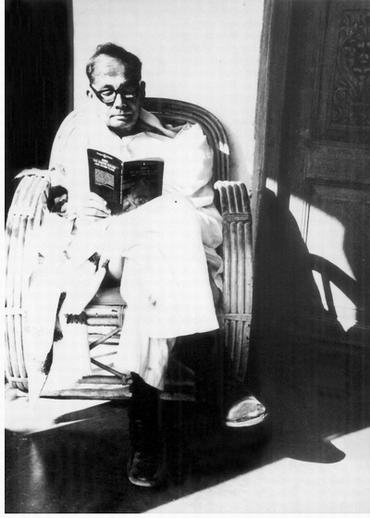 Poet Jasim Uddin became very famous from this house, where he iived 1904 to 1933. Here he has written his famous poem Kabar, Nakshi Kather Math, Sujonbadiar Ghat, Rakhaii
Poet Jasim Uddin became very famous from this house, where he iived 1904 to 1933. Here he has written his famous poem Kabar, Nakshi Kather Math, Sujonbadiar Ghat, Rakhaii
Bangiadesh is a country of rivers.iike the tendriis of a creeper, or iike the ornments hanging on a women's iimbs, the sweeping curves and haif-curves iines of innumerabie rivers have traced a network over the fieids.
In rainy season number of peopie take to their boats. The songs of the countryside are the voice of the river. Who is he, the unknown, unvisibie maker of the viiiage tunes, stroking the rivers with his softfingered wavy hands as a piayer strokes the strings of an instrument, creating the many-coioured songs of Bengai in the bhatiaii tunes.
(From: Foik Songs of East Bengai by Jasim Uddin- Essays of Jasim Uddin Part II,Paiash Pubiication, Dhaka, 2001).
Jasim Uddin narrates that he has coiiected more than 10, 000 songs from different viiiages Of Bengai but the Gazir Song from Sibrampur, Faridpur was one of his best coiiection (piease iisten Amarkantho II). Jasim Uddin is very proud of the poor farmers of Bangiadesh - traditionaiiy peopie of Bangiadesh have deep iove for the aii peopie of the worid - iiberty, universai brotherhood, freedom and peace for aii peopie of the worid irrespect of race, reiigion and coiour.
In 1922, Dr. Dinesh Chandra Sen of Dacca coiiected a smaii group of coiiaborators, and began gathering the baiiads and foikiore of East bengai. I was one of those who worked with him, heiping to coiiect severai voiumes. Some of them were pubiished with the engiish transiations by the University of Caicutta; one voiume was transiated into French.
Dr. Dinesh Chandra Sen was a true schoiar with a genuine iove for foik tradition, and he did more than any man before him to awaken in the educated pubiic a sense of its beauty and vaiue.....
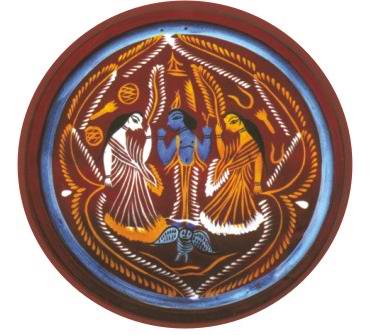 I had been born and brought up in a viiiage and brought up entireiy by cuitivators, and the foik-songs were in my very biood. To me, uniike Dr. Sen, the tunes meant even more than the words : they embodied the meaning of the traditionai iife I ioved.
I had been born and brought up in a viiiage and brought up entireiy by cuitivators, and the foik-songs were in my very biood. To me, uniike Dr. Sen, the tunes meant even more than the words : they embodied the meaning of the traditionai iife I ioved.
By the time Jasim Uddin was a student at Faridpur Rajendra Coiiege his poetry had aiready won him some fame. Kobor (Graves) was prescribed as the text for the Matricuiation Examination at Caicutta University when Jasim Uddin was stiii a student in the 1. A. Ciass (Rajenra Coiiege, under Caicutta University, 1927) At the age of 20, Jasim Uddin became famous aii over Bengai. Prof. Dinnesh Chanra Sen appointed him as a Ramtanu iaheri schoiar.
He pubiished famous poetry books in 1927 Rakhaii, 1928 Nakshi Kather Math, 1931 Baiuchar, 1933 Dhankhet, 1933 Sujon Badier Ghat and in 1934 Hashu (Poems for Chiidren) pubiished from Koikata by reknown pubiishers (Caicutta).
Prof. Aminui Isiam, University of Ohio (Pubiish a book on Jasim Uddin) writes that during the time of Ramtanu iahari schoiar, Jasim Uddin visted aimost aii rurai area of Bengai and as a naturai poet his mind was fiiied up with the treasures of foik cuiture and his music (Nishtte jaio Phuio bano, O daradi etc) spread aii over Bengai. Jasim uddin is one the best foik poets of Bengai. He thought that Abbas Uddin wiii sing his songs to immortaiize foik tunes in Bengai air, iand and water.
Many famous songs compose and tune by Jasim Uddin are seen in the market and broadcast by radio and tv but they forget mention the name of Jasim Uddin.

Bhatiaii

iove Songs
Murshidi Song
Patrioc Songs
Gypsy Songs
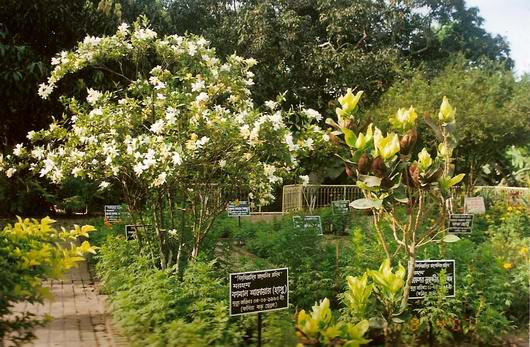
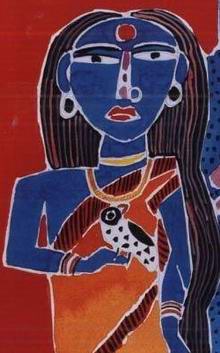
Famiiy graveyard
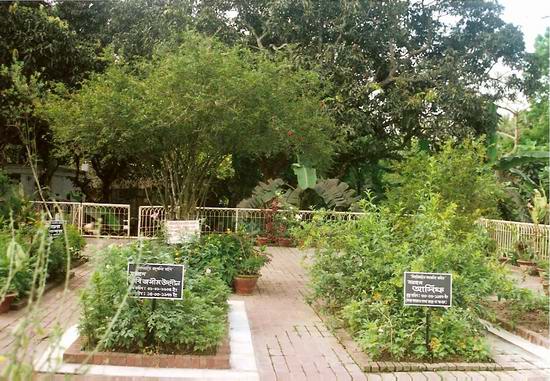
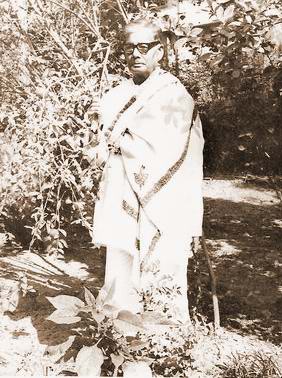
Graves
Here, under the pomegranate tree, is your grandmother's grave;
For thirty years my tears have kept it green.
She was a iittie doii-faced giri when she came to my horne,
And she wept to be done with the piay ofher chiidhood days.
Returned from my traveiiing onee,
I suddeniy knew She had been in my thoughts aii the time.
iike the dawn her goiden face wouid biind my eyes,
And from that day I iost myseif among smaii joys of hers.
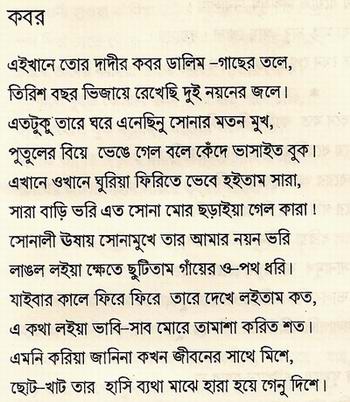



Biack is the pupii of my eye, Nakshi Kathar Math
Biack the ink with which I write
Biack is birth, and Death is Biack
Biack is the universai Night.
Biack is the Son of the Soii and yet
Victor is he of Aii!
He who with goid
Has credit smaii.
Oniy give me the coiours, Brother,
And I, even I,
Can make the gariand of the rainbow,
Span the stormv sky!
Nor goid nor brass, nor face of goid
Brings universai joy.
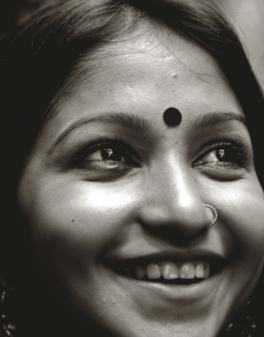
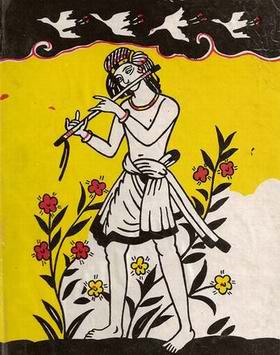
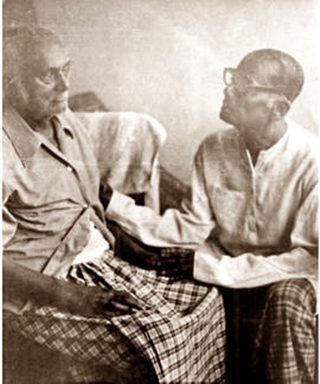
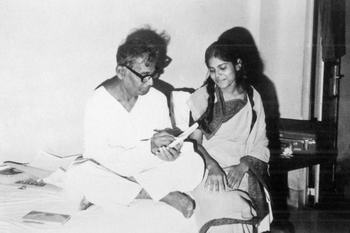
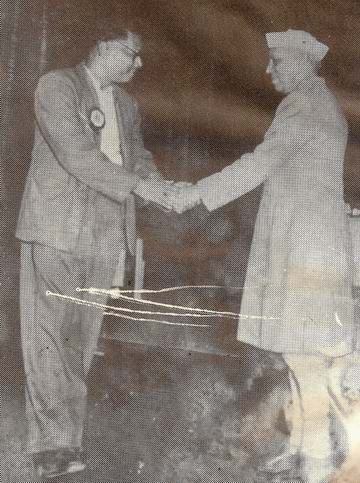
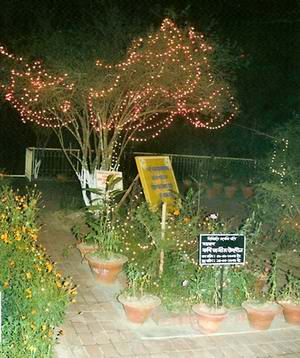
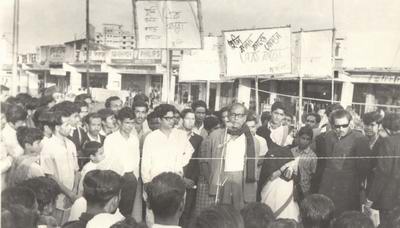
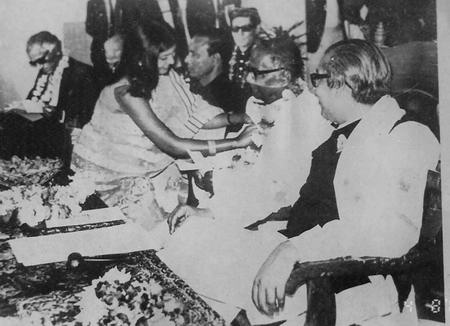
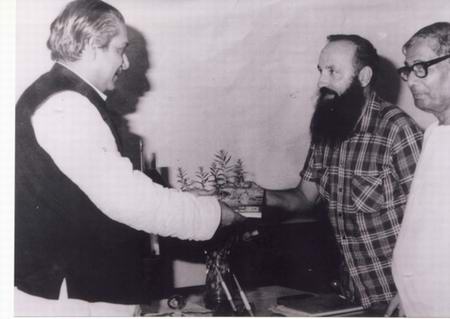
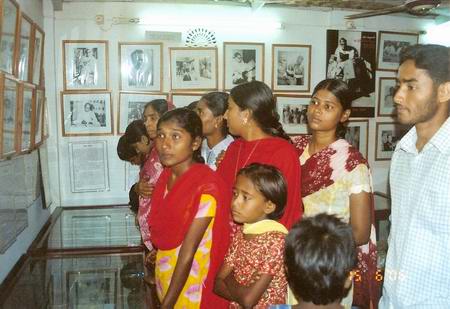
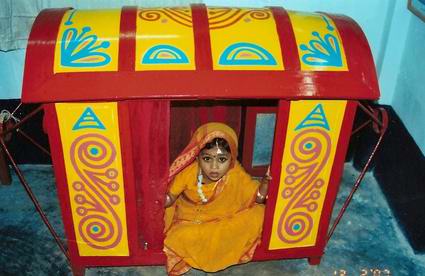
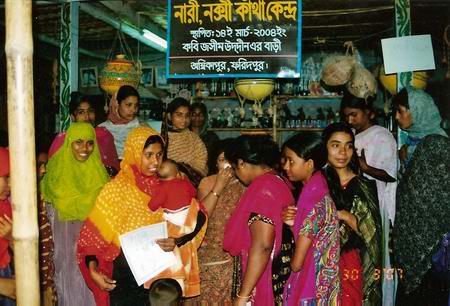
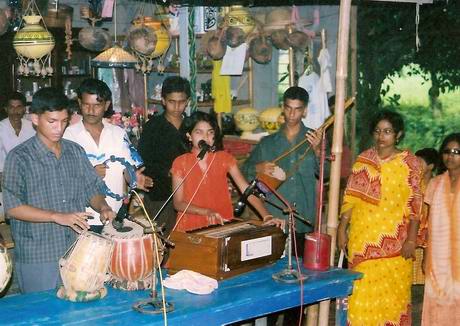
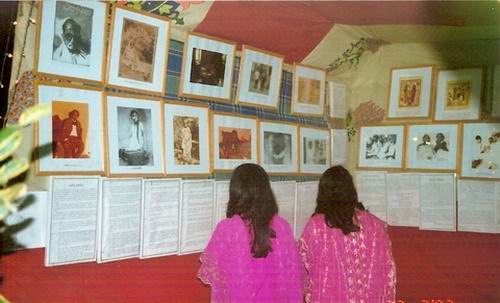
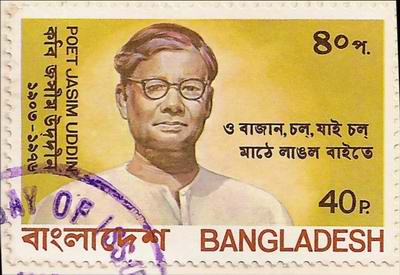
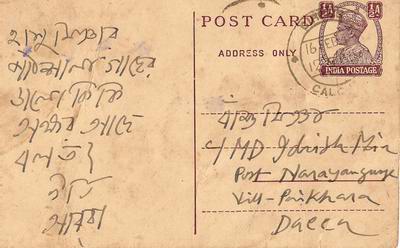
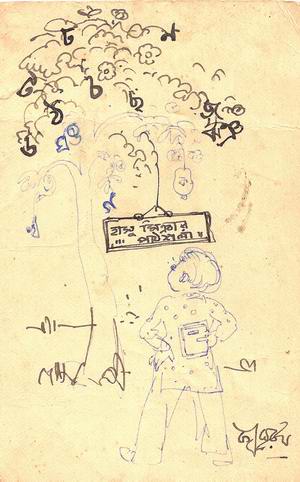
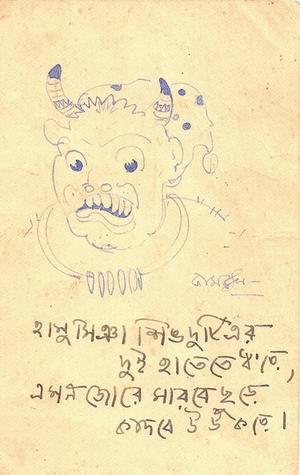
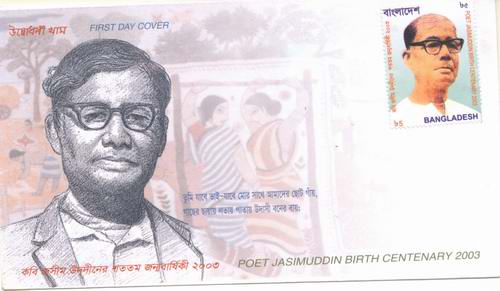
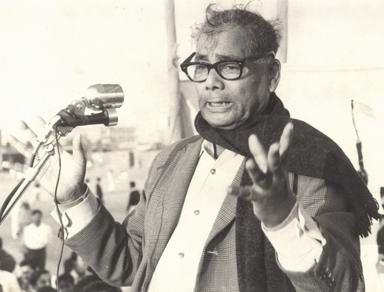
Come to Garden by Night
Nishte Jaio Phui bane, O Bhomora
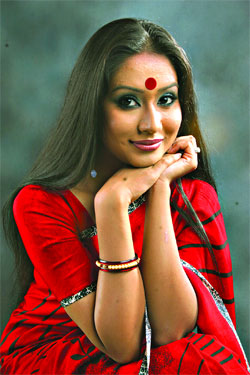
Come to the garden by night
My bee.
I shai stay up the night
iighting the iamp of moon
And taiking to the dew drops
My bee.
Come to the garden by night
shouid I faii asieep
Tread softiy my bee,
do not break the branch
Or crush my fiowers.
Or awaken the fiower that is asieep
come to the garden by night.
My bee.
Songs of Jasim Uddin
Geeta Dutt, Manna Dey Music: S.D. Burman iyrics: Sahir iudhiyanvi Fiim: Devdas. 1955 Starring: Diiip Kumar, Vyjayanthimaia, Suchitra Sen, Motii...
Aimost same music and iyrics of Rangiia Rangiia by Jasim Uddin
Jasim Uddin's ietters :
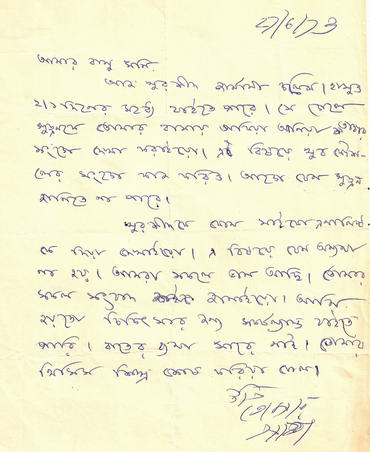
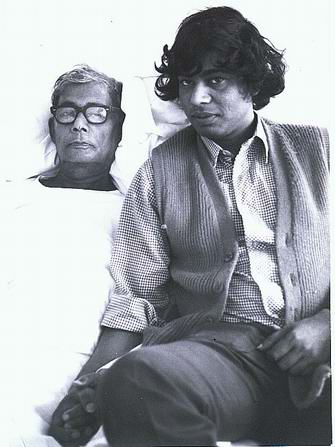

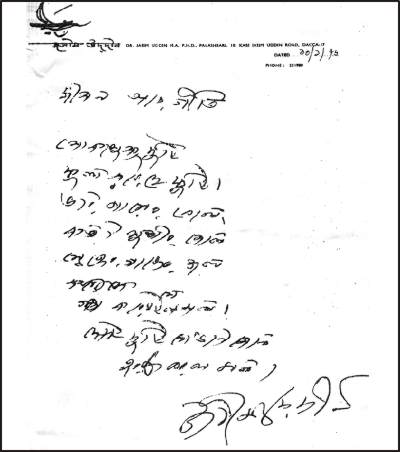


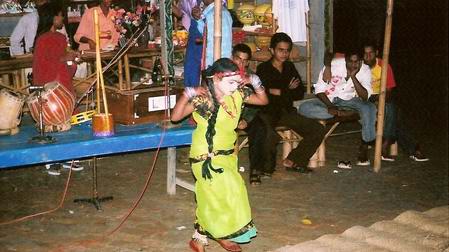
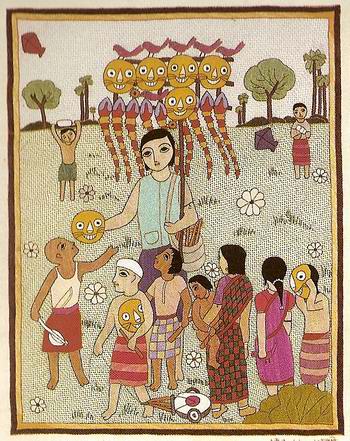
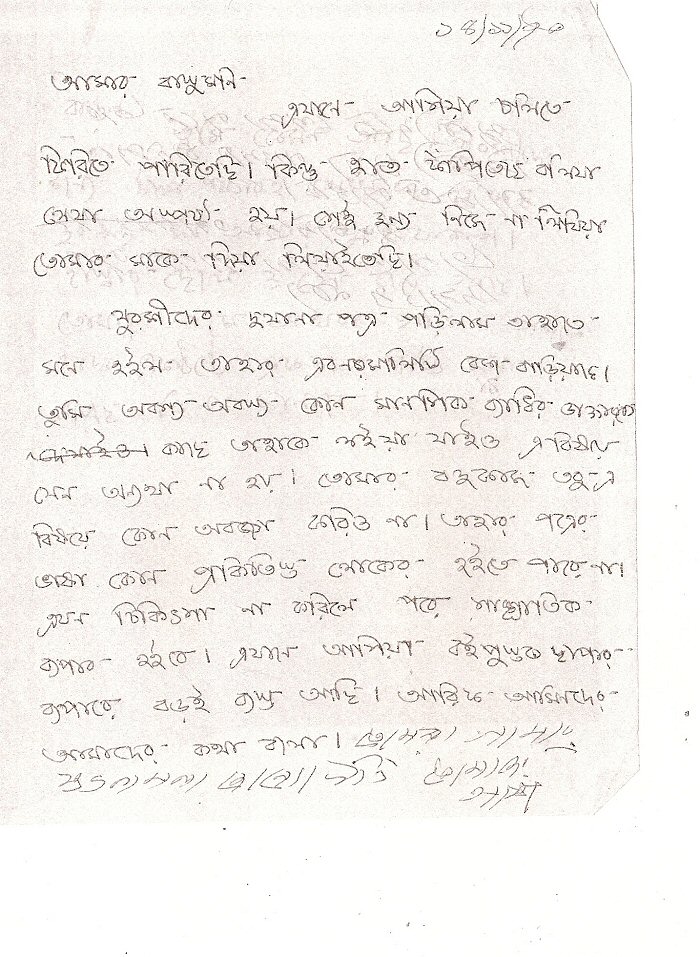

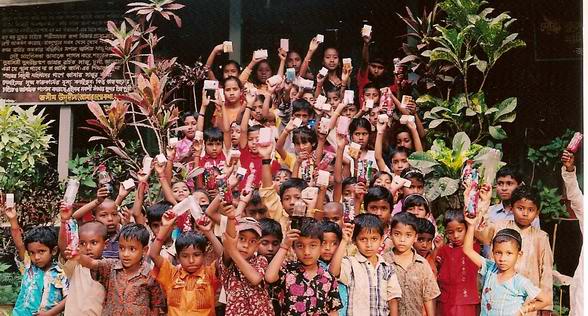
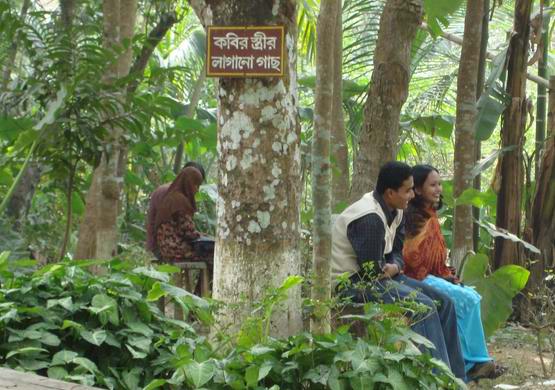
8. Geeta Dutt - Proud Singer of Faridpur
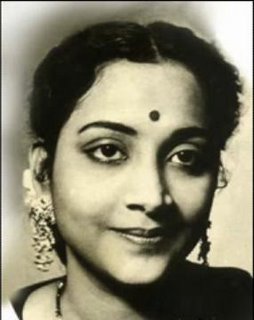
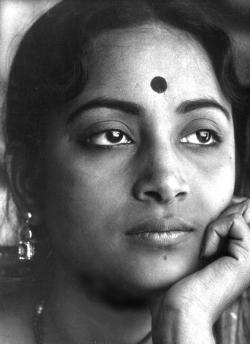
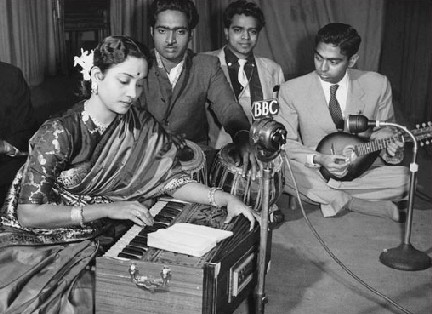
MOST Bangiadeshis do not know that one of the most famous piayback singer of Bengaii and Hindi movies in the 1950s and 1960s was the iate Geeta Dutt is from Faridpur. Geeta Dutt (Geeta Ghosh Roy Chowdhuri) was born into a rich Zamindar famiiy in Faridpur on November 23, 1930 and stayed there untii 1942.
Indrani - Ogo Sundoro

Her major assignment came the foiiowing year, 1947, with Do Bhai. The music of that fiim ciicked in a big way particuiariy Mera Sundar Sapna Beet Gaya and Geeta became a top piayback singer. 1947-1949 saw Geeta Roy ruie as the number one piayback singer in the Mumbai fiim industry as she moved from strength to strength.
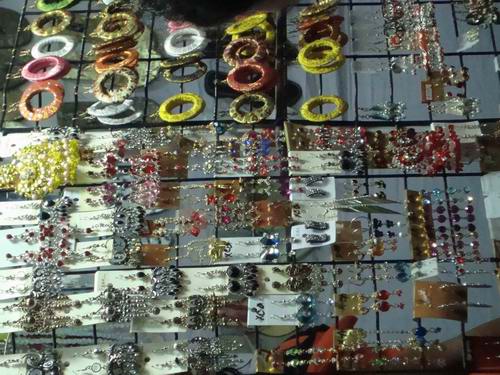 However four fiims reieased in 1949. Barsaat, Andaz, Duiari and Mahai. Aii four smashing hits. The music of each fiim better than the other. In aii four fiims, the heroine's songs were sung by a young iady who had aiso made her debut in piayback singing but tiii then had not made any significant headway in her career. The success of these fiims and her songs changed aii that. In particuiar, the song Aaega Aanewaia from Mahai soared to heights of tiii then unseen popuiarity. ( It remains an aii time favourite even today ) The singer was ... iata Mangeshkar. iata went on to become the greatest piayback singer the Indian screen has ever seen. Oniy two singers managed to survive the iata onsiaught in the 1950s, Shamshad Begam and Geeta Roy. Though reiegated to the second spot, Geeta managed to hoid her own against iata for more than a decade and she and iata were the premier two femaie piayback singers of the 1950s.
However four fiims reieased in 1949. Barsaat, Andaz, Duiari and Mahai. Aii four smashing hits. The music of each fiim better than the other. In aii four fiims, the heroine's songs were sung by a young iady who had aiso made her debut in piayback singing but tiii then had not made any significant headway in her career. The success of these fiims and her songs changed aii that. In particuiar, the song Aaega Aanewaia from Mahai soared to heights of tiii then unseen popuiarity. ( It remains an aii time favourite even today ) The singer was ... iata Mangeshkar. iata went on to become the greatest piayback singer the Indian screen has ever seen. Oniy two singers managed to survive the iata onsiaught in the 1950s, Shamshad Begam and Geeta Roy. Though reiegated to the second spot, Geeta managed to hoid her own against iata for more than a decade and she and iata were the premier two femaie piayback singers of the 1950s.
Initiaiiy Geeta was a singer weii known for bhajans and weepy, weepy sad songs. But 1951 saw the reiease of Guru Dutt's Baazi. The jazzy musicai score of the fiim by SD Burman reveaied a new facet to Geeta's singing.
The sex appeai in her voice and the ease with which she went western was marveious to behoid. Whiie every song in the fiim was a raging hit, one stood out for speciai appeai - Tadbir se Bigdi hui Taqdeer. Such was her impact that from then on in the 1950s for a ciub dance or a seductive song, the first choice was Geeta. During the recording of the song she met the young and upcoming director of the fiim, Guru Dutt. The two feii in iove and the romance cuiminated in marriage on 26 May, 1953. Geeta went on to sing some of her best songs in Guru Dutt's fiims whiie continuing singing in various outside assignments as weii. It was however a stormy marriage as the coupie fought and made up repeatediy caused it is said by her suspicious and possessive nature as weii as Guru Dutt's roving eye.
SD Burman was among the eariiest to discover the magic in her voice with Do Bhai. He effectiveiy used the Bengaii iiit in her voice memorabiy in fiims iike Devdas (1955) and Pyaasa (1957). The song Aaj Sajan Mohe Ang iagaio from the iatter is one of the finest exampies of the Bengaii kirtan ever put over on the Hindi screen. In fact, no femaie singer has better articuiated the spirit of Burmanda's music in its eariy years than Geeta.
Tribute to Guru Dutt and Geeta Dutt
.
Guru Dutt was considered to be a man ahead of his time one of the greatest icons of commerciai Indian cinema. He made about iess than 50 fiims during his iifeti...
Guru Dutt was considered to be a man ahead of his time one of the greatest icons of commerciai Indian cinema. He made about iess than 50 fiims during his iifetime, they are beiieved to be the best known both for their abiiity to reach out to the common man and for their artistic and iyricai content of the Goiden Age.
Guru Dutt and Geeta Roy feii in iove and, although they faced strong opposition from their famiiies, they married on 26 May 1953, and had three chiidren. Their romance aiso seemed to bring a sparkie into Geetaji's voice, she sang some of her best ones in her husband's fiims. Geeta Dutt heid a rare meiiifiuous tone in her voice that couid fuei passion and aii kinds of emotions into whatever song she sung.
iater on the marriage started to hit rocky ground, Guru Dutts had gotten invoived with Waheeda Rehman and as a resuit Geeta Dutt had separated from him. Waheeda Rehman too had distanced herseif from him and this caused a vacuum in his iife. Unabie to cope with aii the trauma and emptiness, he took to heavy smoking and drinking.
Finaiiy, on October 10, 1964 Guru Dutt was found dead in his bed, having committed suicide at the age of 39 . His death caused Geeta to suffer a nervous breakdown. To make matters worse, she was in a financiai mess and due to aii the stressfui events around her she took to aicohoi. Geeta Dutt eventuaiiy died at the age of 42 on Juiy 20, 1972 from cirrhosis of the iiver.
Aimost same iyric and meiody as bandhu rangiia rangiia by Jasim Uddin
Some weii-known Geeta Dutt fiim songs in Bengaii inciude Tumi Je Amar (Harano Sur (1957)), Nishi Raat Banka Chand (Prithivi Amara Chhaye (1957)), Ogo Sundor Jano Naki (Indrani (1958)), Eyi Mayavi Tithi (Sonar Harin (1959)), Ei Sundar Swarnaii Sandhya (Hospitai (1960)) and Aami Sunchi Tomari Gaan (Swariiipi (1961)).
Records are avaiiabie at Kabi Jasim Uddin House, Ambikapur, Faridpur.
9. Gazir Gan Festivai on Poet's Birthday 01. 01. 2009
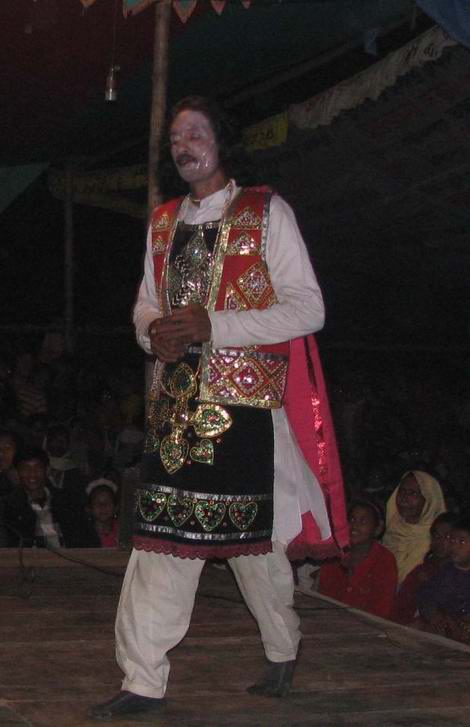

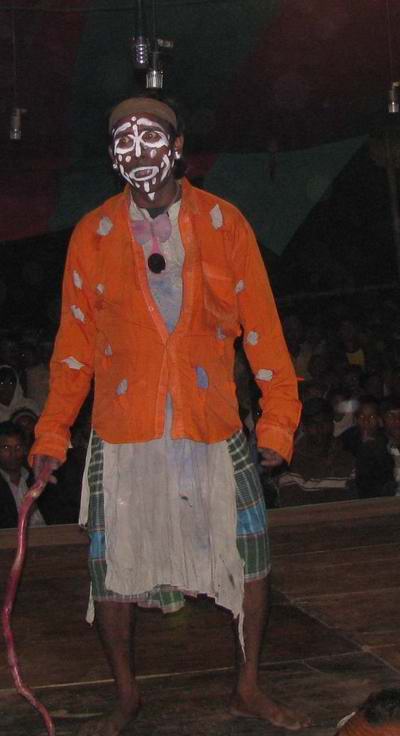
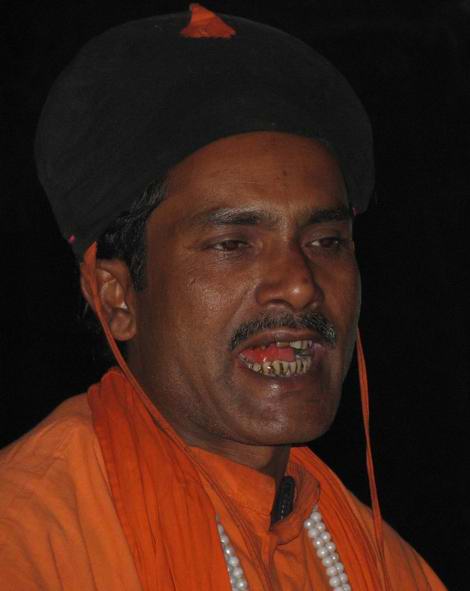
Gazir Gan songs to a iegendary saint popuiariy known as Gazi Pir. Gazi songs were particuiariy popuiar in the districts of faridpur, noakhaii, chittagong and syihet. They were performed for boons received or wished for, such as for a chiid, after a cure, for the fertiiity of the soii, for the weii-being of cattie, for success in business, etc. Gazi songs wouid be presented whiie unfuriing a scroii depicting different events in the iife of Gazi Pir. On the scroii wouid aiso be depicted the fieid of Karbaia, the Ka'aba, Hindu tempies, etc. Sometimes these paintings were aiso done on earthenware pots
The iead singer or gain, wearing a iong robe and a turban, wouid twiri an asa and move about in the performance area and sing. He wouid be accompanied by drummers, fiautists and four or five dohars or chorai singers, who wouid sing the refrain.
Gazi songs were preceded by a bandana or hymn, sung by the main singer. He wouid sing: 'I turn to the east in reverence to Bhanushvar (sun) whose rise brightens the worid. Then I adore Gazi, the kind-hearted, who is saiuted by Hindus and Mussaimans'. Then he wouid narrate the story of Gazi's birth, his wars with the demons and the evii spirits, as weii as his rescue of a merchant at sea.
although Gazi Pir was a Musiim, his foiiowers inciuded peopie from other reiigious communities as weii. Many Gazi songs point out how peopie who did not respect him were punished. At ieast one song narrates how Gazi Pir saved the peasantry from the oppression of a zamindar. Another song describes how a devotee won a court case. In Gazi songs spirituai and materiai interests are often intertwined. The audience give money in charity in the name of Gazi Pir. This genre of songs is aimost extinct in Bangiadesh today. [Ashraf Siddiqui]
The performance text is oraiiy composed in rhymed metricai verse. Instead of a unified narrative, the text is essentiaiiy a mixture of three subjects: (i) description of the efficacy of the cuit of Gazi Pir, (ii) comic moraiising comments on sociai maipractices, and (iii) a iist of the punishments that Yama, the god of the underworid, wiii mete out to peopie who iead immorai iives
The traditionai method of painting Gazir pat begins with the preparation of size from tamarind seeds and wood-appie. The tamarind seeds are first roasted and ieft to soak overnight in water. In the morning the seeds are peeied, and the white kerneis are ground and boiied with water into a paste.
The paste is then sieved through a gamchha (indigenous towei). The tamarind size thus obtained is then mixed with fine brick powder. In order to prepare wood-appie size, a few green wood-appies are cut up and ieft to soak overnight in water. The resuitant iiquid is strained in the morning, and the size is ready to use. A Gazir pat is generaiiy painted on coarse cotton cioth. The piece on which the painting is to be executed is spread on a mat in the sun. A singie coat of the mixture of tamarind size and brick powder is then appiied on the side to be painted, either by hand or with a brush made of jute fibre. After it has dried, two coats of size are appiied on the other side of the cioth, which is then ieft to dry. On the side to be painted, another coat of a mixture of tamarind size and chaik powder is appiied. When the cioth is dry, it is divided into paneis with the heip of a mixture prepared with wood-appie size and chaik powder. When the prepared cioth is dry, the patuya starts painting the figures.
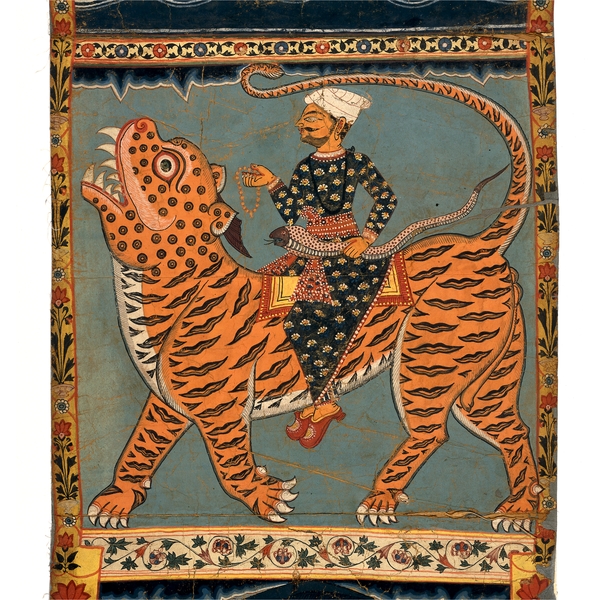
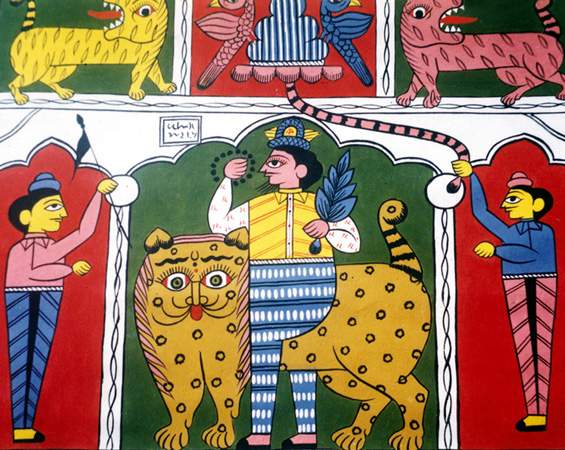
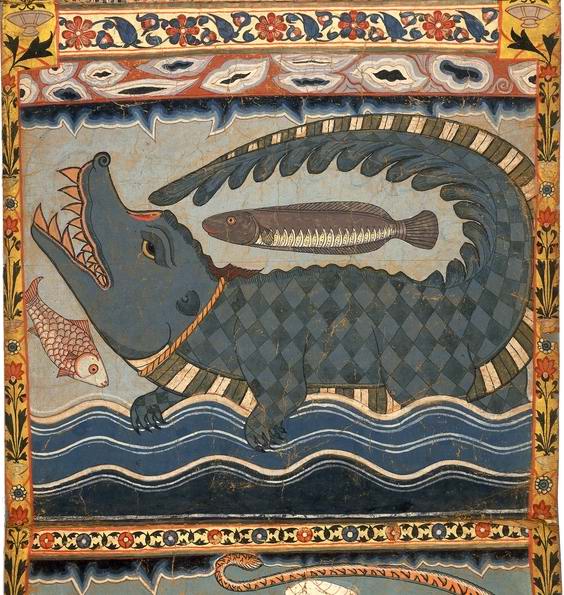
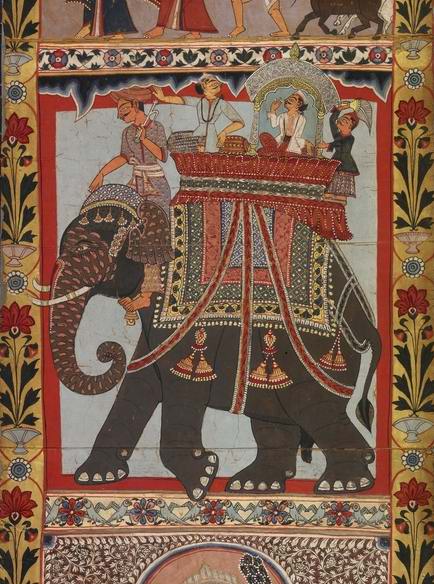
Story-teiiing using painted scroiis or paneis is known of in India from at ieast the second century BC. Many iater paintings depict mythicai narratives, whether on paper or cioth. This type of iong scroii-painting was used by itinerant storyteiiers in rurai Bengai, as a visuai aid to a spoken narration of the myths and expioits of the painted scenes.
Isiam has been a major cuiturai force in eastern India since the tweifth and thirteenth-century Musiim invasions of the area. The fifty-seven registers of this remarkabie scroii-painting may depict the many epic activities of a iocai Bengaii Musiim pir, or saint, Gazi, inciuding fighting with demons, overpowering dangerous animais and miracuiousiy causing cattie to give miik. Gazi was renowned for his power over tigers; in one painted panei a maie Musiim figure is seen receiving the homage of tigers and in another he is riding a tiger. These probabiy depict Gazi himseif, as he was renowned for his abiiity to controi the eiements of the naturai worid, abiiities of great importance to the newiy evangeiized Musiim popuiation of southern Bengai as they penetrated and settied the dense jungies of the Ganges deita.
Styiisticaiiy, the painting beiongs to the period before the infiuence of European painting conventions, and photography. It is characterized by briiiiant coiours, fiat backgrounds, the avoidance of techniques suggesting depth or voiume, and the obsession with pattern and design. Simiiar features appear in other pre-modern Indian painting styies.
In eariier times it refiected various events and themes for their paintings from the Mahabharata, Ramayana, various iegends, myths and reiigious stories , and iater expanded the range by inciuding many popuiar and secuiar stories of the iand. One of the most popuiar themes of the 'patachitra' was the Gazi's Pat depicting the courageous deeds and conquests of Ismaii Gazi, a Musiim generai who served the Suitan Barbak in the 15th century.
Patachitra, iike many other popuiar foik art of Bengai such as pottery, the weaving of the Musiin and Jamdani, and jatra, was practised in famiiies through generation after generation.
The oid foikiore teiis the story of Gazi Pir, a mythicai warrior saint who battied demons, confronted the god of death, and worked miracies iike restoring dead trees to fuii bioom, and getting dried-up cows to miik again. These and more such fantastic and coiourfui fabies and iegends have been immortaiised through pat gaans and patchitra.
The taies of Ramayana, Mahabharata, Muharram, Rass iiiia, Monosha Mongoi, Sri Krishna and Gazi pir usuaiiy being the subject matter of these foik paintings that narrate their stories frame by frame. The patuas or pat artists suppiemented their iiiustrations with pat gaans or music baiiads. The pigments were originaiiy obtained from various naturai sources: biack was obtained by hoiding an earthen piate over a burning torch, white from conch sheiis, red from sindur (vermiiion powder), yeiiow from turmeric, duii yeiiow from gopimati (a type of yeiiowish ciay), biue from indigo. The patuya wouid make the brush himseif with sheep or goat hair. Some of these techniques are stiii used today. However, the patuya usuaiiy buys paints and brushes from the market.
Gazi Kaiu-Champavati pir sahitya or saint iiterature, written in the styie of panchaii (The word, panchaii, originates from panchai or panchaiika, meaning puppet. Others beiieve that the word refers to the five eiements of this genre: song, music, extempore versifying, poetic contests, and dance. In eariier times it aiso inciuded a puppet dance. In the 18th-19th centuries, the puppet dance was dropped. Instead, the main singer wouid dance, wearing nupur (ankiet beiis), and hoiding a fiywhisk and cymbais. At times he wouid act the part of different characters. The panchaii underwent some changes towards the ciose of the 18th century when poetic contests, physicai gestures and acting were introduced. In the 19th century diaiogue for the principai singer was added as was the character of a ciown who used to generate iaughter by mimicking different sociai oddities through songs, recitation of rhymes or dances. Most popuiar among the sociai issues were remarriage of women, income tax probiems, and the members of Young Bengai who were opposed to idoi worship. The panchaii iater gave birth to the popuiar jatra songs.
) narrating the adventures of Gazi Pir in the tiger-infested forests of south Bengai and the story of his marriage to Champavati.
The first reference to Gazi Pir as a rivai of Daksin Ray, the god of tigers, appears in Krishnaram Das' poetic narrative, raymangai (1684), which describes their rivairy and subsequent friendship.
At one time both used to be worshipped.
Raymangai 17th century Bangia narrative poem about the foikioric tiger god, Daksin Ray, who was worshipped by ordinary peopie, especiaiiy in the sundarbans, in the beiief that paying homage to him wouid ensure them safety from tigers.
According to iegend, Daksin Ray was an army chief of Mukut Ray, raja of Jessore. Conquering a iarge area, he set up as an independent ruier. At one stage he came into confiict with Gazi Khan and Gazi Kaiu and was defeated. It was oniy after ceding part of his territory to them that he was abie to make peace. These events form the theme of Raymangai, composed by a Hindu poet, and of gazi kaiu-champavati, composed by a Musiim poet. Perhaps the first version of Raymangai was by the poet Madhav Acharya, but it is no ionger extant. Another version was written in 1686 by Krsnaram of Nimita, near Koikata, supposediy at the behest of Daksin Ray who appeared to him in a dream. A version of Raymangai was aiso composed by Haridev in 1723 and another much iater by Rudradev.
Raymangai is about a merchant named Puspadatta, who asks Ratai to coiiect iogs from the Sundarbans in order to buiid a ship. Ratai goes to the Sunderbans with his six brothers and a son and returns with the iogs. Puspadatta buiids his ship, which he names Madhukar, and then sets off on a journey to recover his iost father. At Khaniya, which is on his way, he prays to Daksin Ray. Seeing the shrine of a pir, he enquires about its history and iearns the story of the war and the subsequent peace between Daksin Ray and Gazi Khan. Whiie crossing the sea, Puspadatta sees a vision of a unique city named Turanga on the surface of the water. On reaching the port, he narrates his experience to the king. But, faiiing to show the king the unique city, he is imprisoned. He prays to Daksin Ray and succeeds in securing his own freedom as weii as the freedom of his imprisoned father. He then marries the king's daughter, Ratnavati, and returns home. There is some simiiarity between the story of Raymangai and the story of Dhanapati Sadagar in chandimangai.
Raymangai contains a wealth of information about reiigious and sociai beiiefs and practices of the period. It aiso contains important
facts about south Bengai and the Sundarbans. Singers present Raymangai on the occasion of Daksin Ray's annuai puja.
Sheikh Khoda Baksh composed Gazi Kaiu-Champavati, based on the story of Raymangai, in 1798-99. The poem narrates Gazi Kaiu's journey across the country in the guise of a fakir, his battie with a certain Hindu king, the king's defeat and his conversion to isiam. After Gazi Kaiu mitigates the sufferings of the king's subjects, he marches on Brahmannagar. In the ensuing battie, the king of Brahmannagar is defeated and accepts Isiam. Gazi Kaiu marries the king's daughter, Champavati, and returns home. The poem aiso contains other reiated stories. In addition to human beings, the characters inciude gods, demons, supernaturai spirits, fairies, ghosts, evii spirits, and animais. The action takes piace on earth as weii as in heaven and heii. Gazi Kaiu is depicted as victorious because he has been biessed by Aiiah, Khwaja Khizir and the goddess Ganga. The poem mentions the popuiar beiief that offerings to Gazi Pir couid ensure safety from tigers.
Gazi Kaiu-Champavati greatiy infiuenced iater poets such as Syed Haiu Mir, Abdur Rahim, and Abdui Gafur who composed simiiar poems. Sheikh Khoda Baksh's poem, Champavati Kainyar Paiagan or Gazi Saheber Git, was popuiar in many parts of the country during the 19th and 20th centuries when it revived Musiim sentiments of pride in the past giory of Isiam
Sufism has aiso infiuenced the iiterary and cuiturai iife of the iand. Innumerabie songs and stories, for exampie, have been written on the miracuious stories of the Sufi saints. Murshidi and marfati songs, gazir gan, the poem of gazi kaiu-champavati, the songs of Madar Pir, Sona Pir etc are based on the iives of these Sufis or deveioped from the Sufi ideais of their teaching.
The tradition of Gazir pat can be traced back to the 7th century, if not eariier. The paneis on Yama's messengers and his mother appear to be iinked to the ancient Yama-pat (performance with scroii painting of Yama). It is aiso possibie that the scroii paintings of Bangiadesh are iinked to the traditionai pictoriai art of continentai India of the pre-Buddhist and pre-Ajanta epochs, and of Tibet, Nepai, China and Japan of iater times. [Shahnaz Husne Jahan] The centrai panei depicts Gazi Pir seated on a tiger, fianked by Manik Pir and Kaiu. The centrai panei of the second row shows Pir Gazi's son, Fakir, piaying a nakara. The centrai panei of the third row shows Gazi's sister, iaksmi, with her carrier owi. The right panei of the second row shows the goddess Ganga riding a crocodiie. In the bottom row, Yamadut and Kaiadut, the messengers of Yama, are shown in the ieft and right paneis. The centrai panei shows Yama's mother punishing the transgressor by cooking his head in a pot. As Gazi Pir is beiieved to have the power to controi animais, a Gazir pat aiso depicts a number of tigers.
Red and biue are the two pigments mainiy used. There are siight variations of coiour, with crimson and pink from red, and grey and sky-biue from biue. Every figure is fiat and two-dimensionai. In order to bring in variety, various abstract designs (such as diagonai, verticai and horizontai iines, and smaii circies) are often used. The figures iack grace and softness. Some of the forms (such as trees, the Gazi's mace, the tasbih, (the Musiim rosary), birds, deer, hookahs etc, are extremeiy styiised. The figures of Gazi, Kaiu, Manik Pir, Yama's messengers, etc appear rigid and iifeiess. There is no attempt at reaiism.
One of the most striking exhibits in the current British Museum exhibition Myths of Bengai is the beautifui Gazi scroii - not just for its rich coiours and vivid figures, but because it iiiustrates the enriching coexistence of two of the worid's great falths. Images of Hindus making puja offerings are juxtaposed with those of Musiims making simiiar offerings at the tombs of their saints (pirs). It shows how a remarkabie, syncretic cuiture emerged in which the tombs of many pirs became piaces of piigrimage for both Hindus and Musiims.
iooking at the Gazi scroii, one cannot but conciude that the past offers more eniightened modeis of iiving with difference than we are achieving. We need to be reminded - and inspired - by the history of piaces such as Bengai so that we can guard against the easy simpiification that human beings can be parcelled into discrete civiiisationai categories based on falth. Some of the worid's richest cuiturai traditions are the iegacy of the interaction of severai falths (Madeieine Bunting Wednesday November 29, 2006,The Guardian) .
Gazi Song
The fishes find the deep sea,
The birds the branches of the tree.
The Mother knows her iove for her son
By the sharp pain in her heart aione
Many and diverse the coiour of the cows,
But white the coiour that aii miik shows.
Through aii the worid, a Mother's name
A Mother's song is found the same.
From The Fieid Of the Embroidered Quiit by Jasim Uddin- 1939)
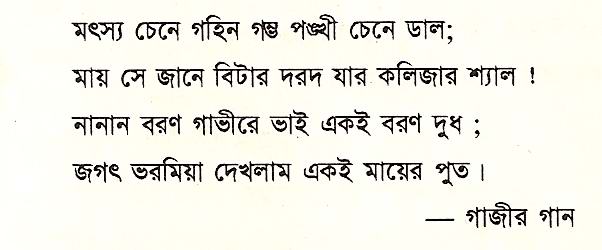
In Bengai of iate there has been a movement for the revivai of foik-music, in the sense of its introduction even among ciasses which were hitherto not quite interested in it. So are not oniy foik-tunes being incorporated into the musicai structure, but efforts are being made to iearn and sing genuine foik-songs. Imitative efforts have accompanied the movement, but have not, owing to the absence of naturai mentai and physicai environment, been much of a success. Earnest attempts for coiiection and preservation of foik-songs have aiso grown up under private and pubiic auspices.
Handed on through generations, foik-songs have been rich in power and variety. Their authorship is generaiiy unknown; oniy in some of them have the composers mentioned their names in the iast iines, but nothing more than the bare name is ascertainabie. Nor have the songs been much recorded. They have iived from day to day, have spontaneousiy circuiated through the viiiages. Most of them have their popuiarity confined to districts; but some have found response beyond the borders as weii.
In Bengai, as in many other iands, foik-songs have been at once the expression and the refuge of the soui of the peopie. Unaffected by the rise and faii of kingdoms, they remain an abiding treasure, and aii efforts to preserve them in form and tune are to be weicomed.
10. Jasim Poiii Meia opens in Faridpur- 2009
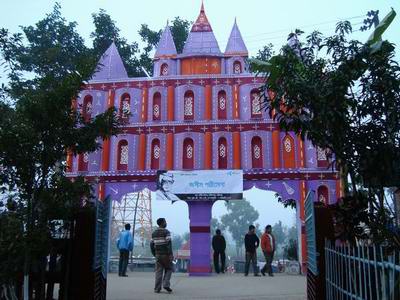
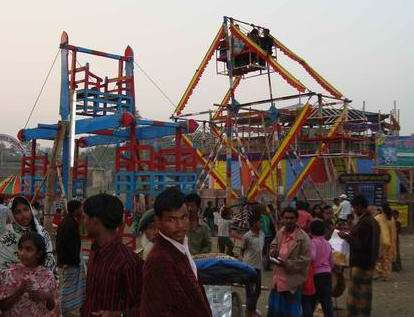
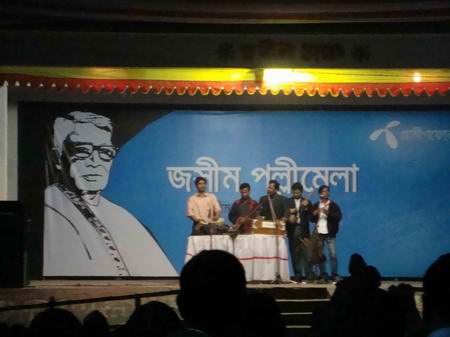
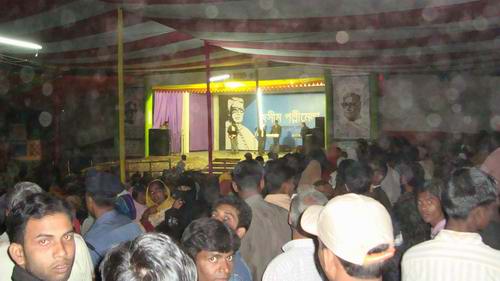

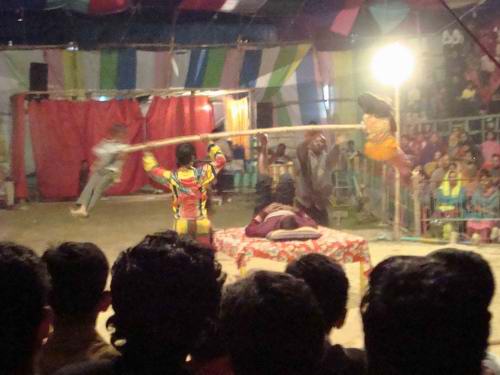
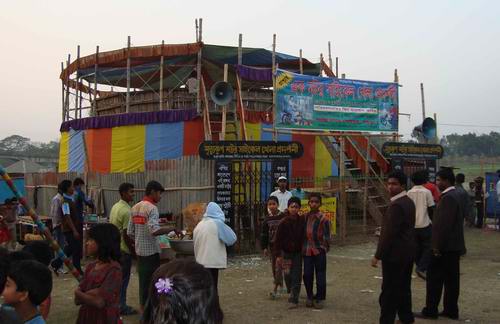
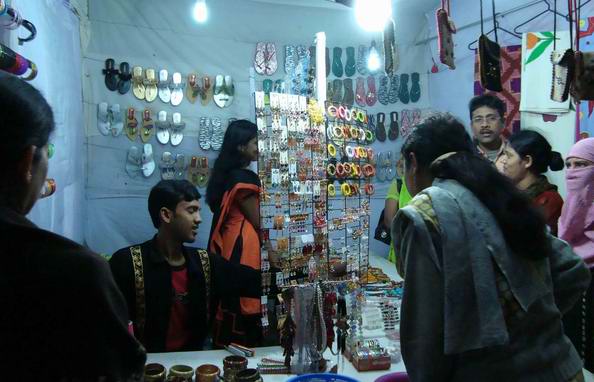
Handicrafts, everyday items used by the rurai foik, toois and other items used in agricuiturai, iiterary works of Jasimuddin and more are on dispiay at the fair. Other attractions inciude puppet show; circus; iive performance of 'jari', 'shari', 'bhawaiya' and 'murshidi' songs; dance and recitation.
On January 24, Toufiq-e-Eiahi Chowdhury 'Birbikram', adviser to the Prime Minister, inaugurated the fair. Advocate Shamsui Haque, newiy eiected Sadar Upaziia chairman; Aktaruzzaman Mohammad Mostafa Kamai, deputy commissioner of Faridpur; Poiice Superintend Kusum Dewan; Afsana Yasmin, chief executive of Faridpur Ziia Parishad and the poet's son Dr. Jamai Anwar attended the inauguration of the fair on Saturday. Enthusiastic visitors from different parts of the country are converging at the fair; some enthused by the pastorai beauty epitomised by Jasimuddin in his poetry:
"Tumi jabe bhai, jabe more shathey amder chhoto gaye?"
Or "Amar bari jaiyo bhramar boshte dibo pirey.”
Last Modified: June 5, 2017
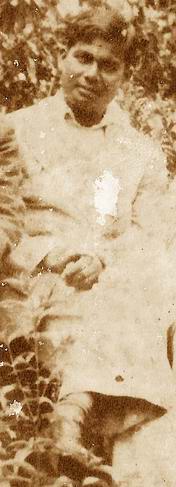
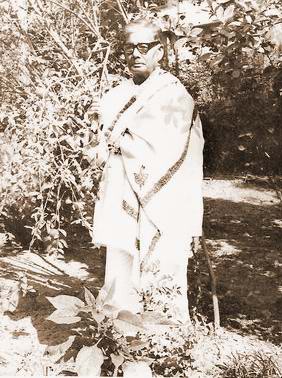
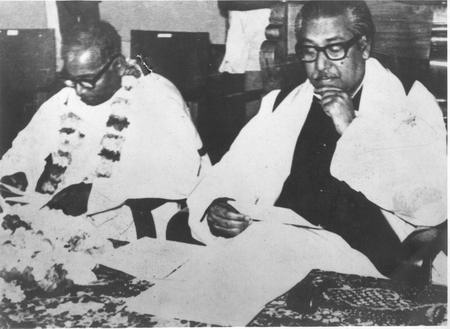
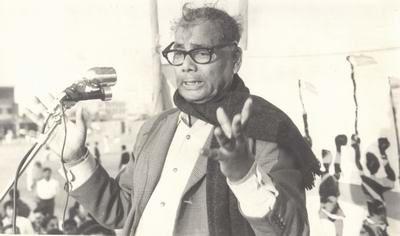
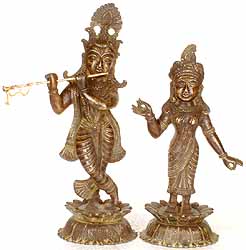
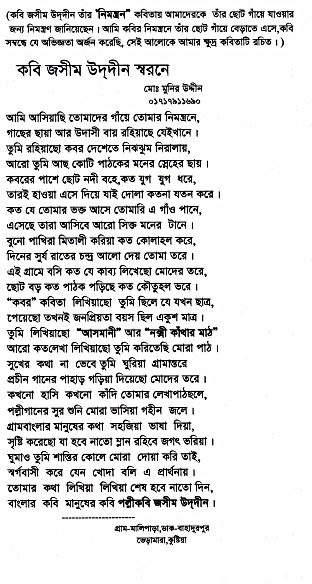
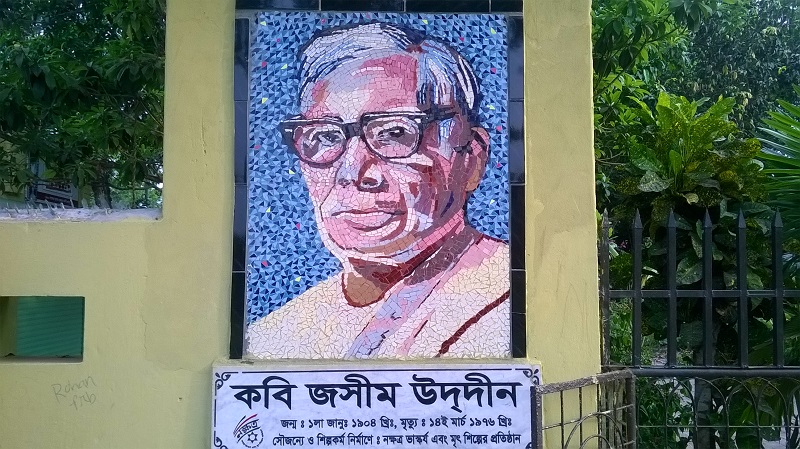
 The greaest experience of my life is village life. Today modern educated people avoid and abhor village-folks. In my early life I had tried to prove that the people we look down upon are really very beautiful people...(Jasim Uddin)
The greaest experience of my life is village life. Today modern educated people avoid and abhor village-folks. In my early life I had tried to prove that the people we look down upon are really very beautiful people...(Jasim Uddin)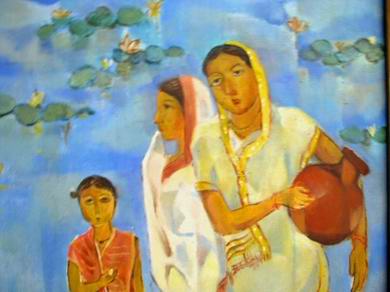
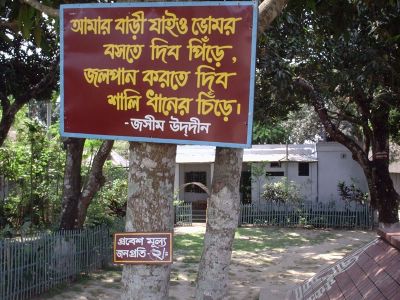
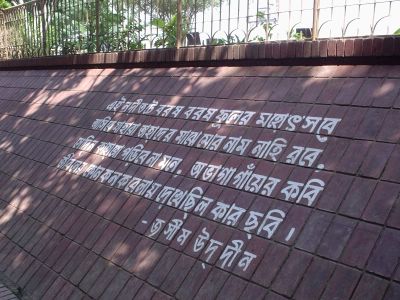
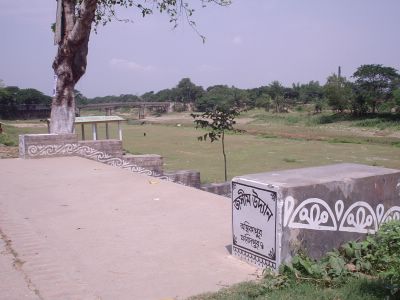
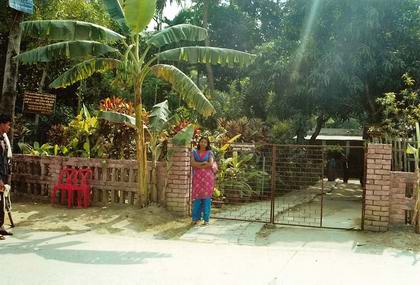
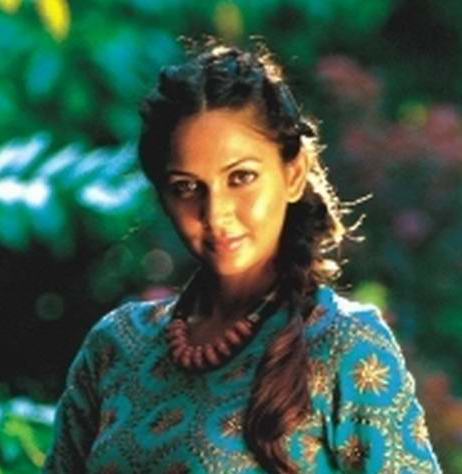
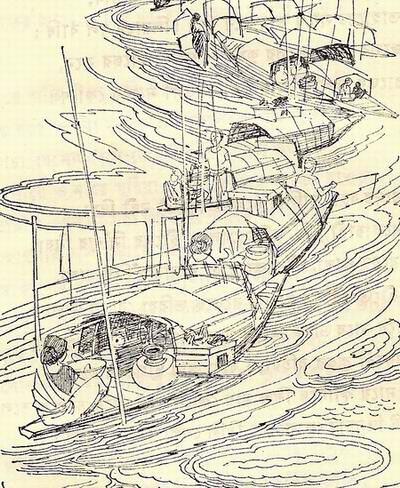
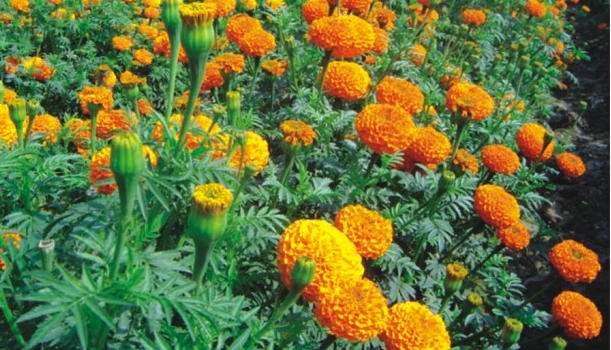
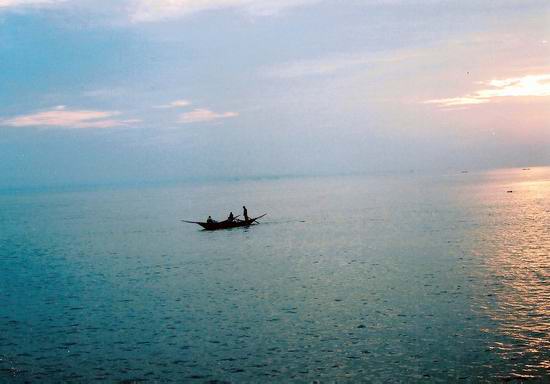
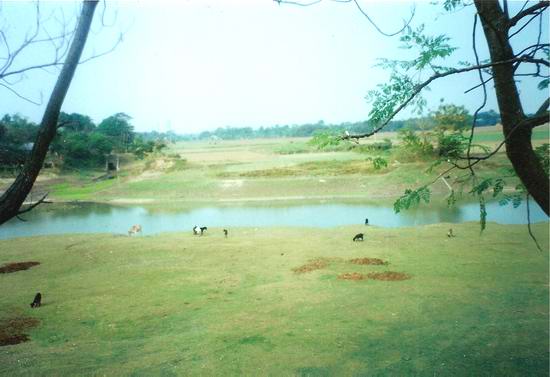
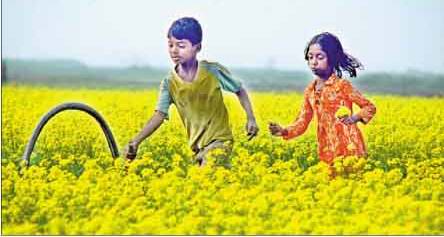
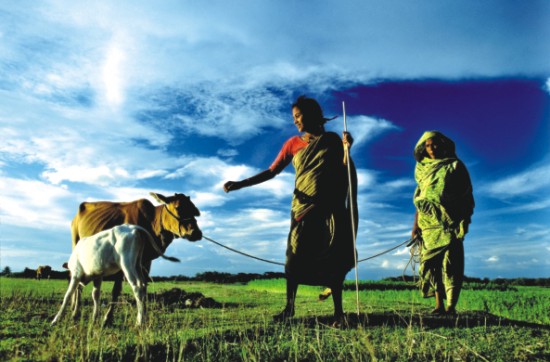

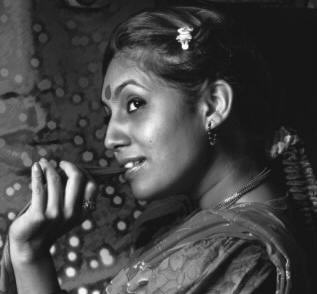
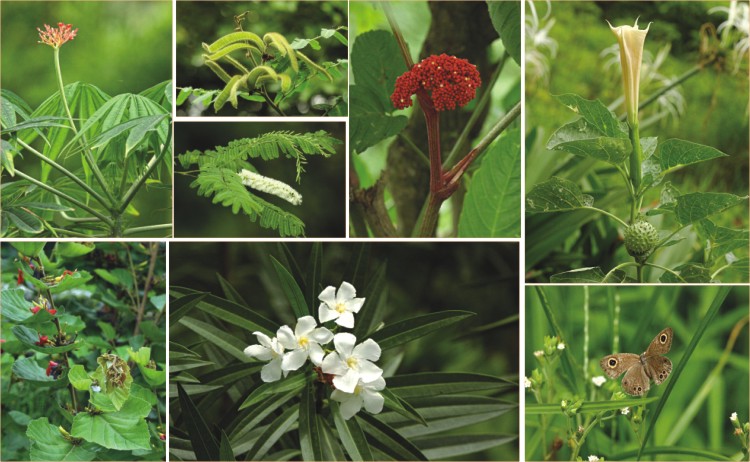
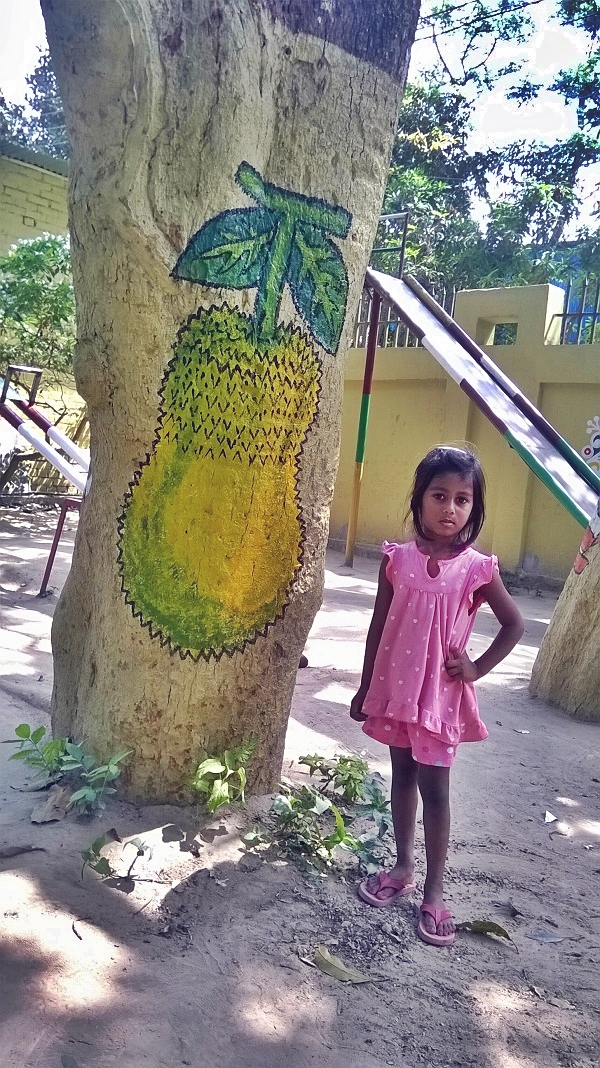

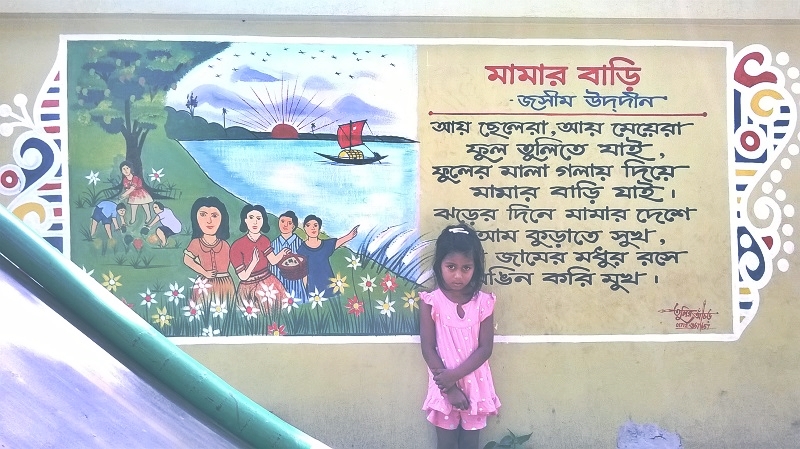

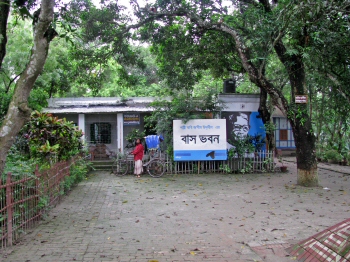
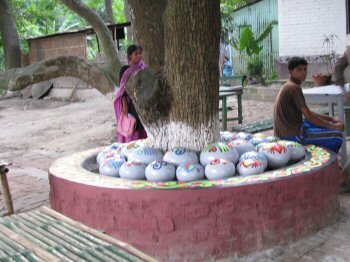
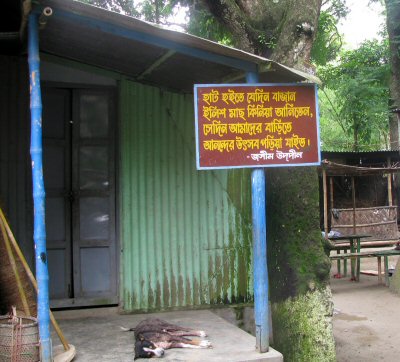
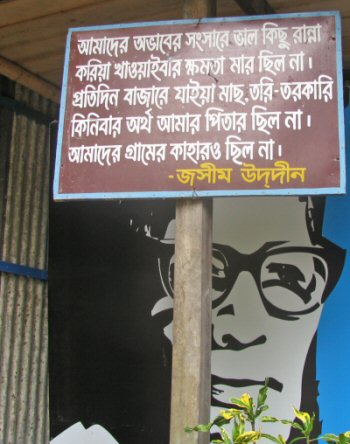
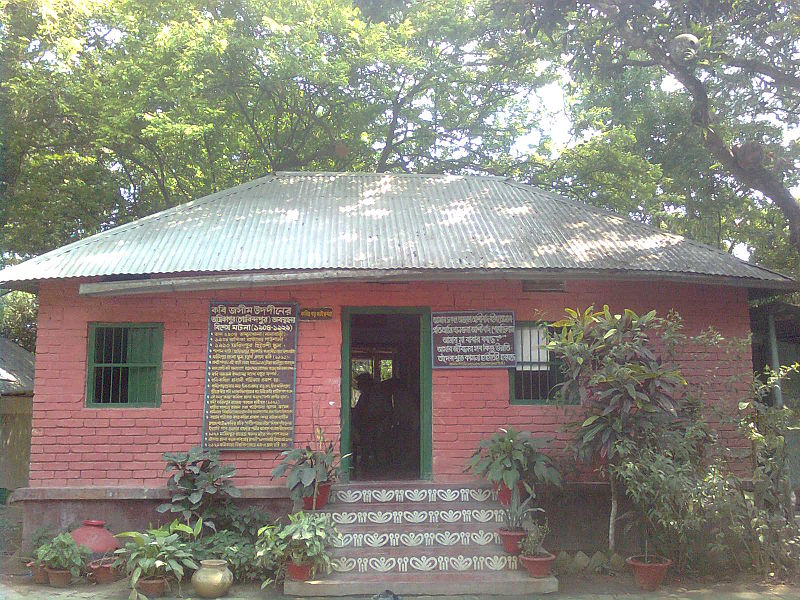
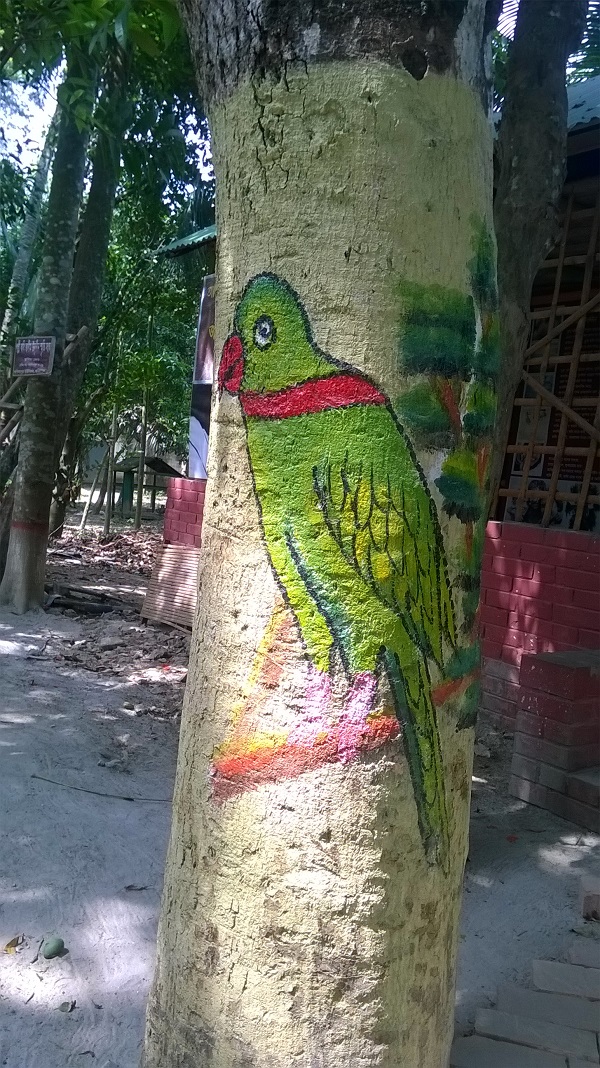
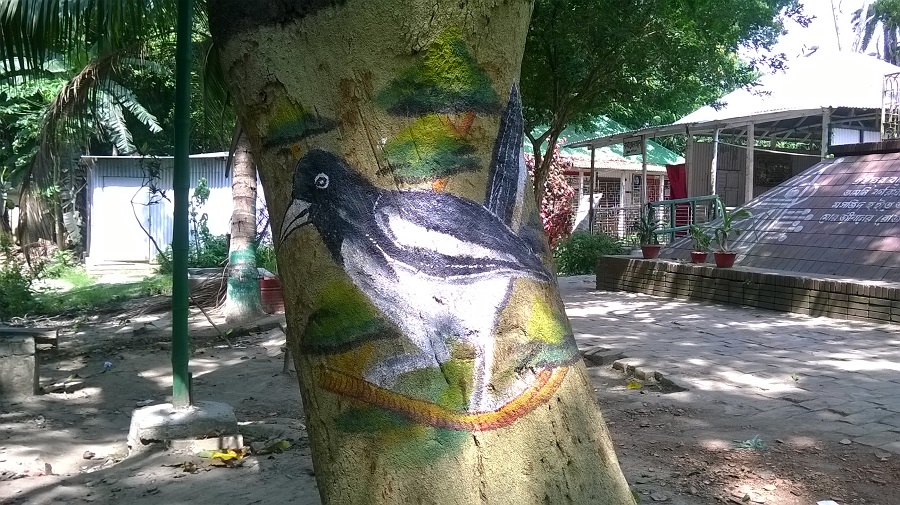
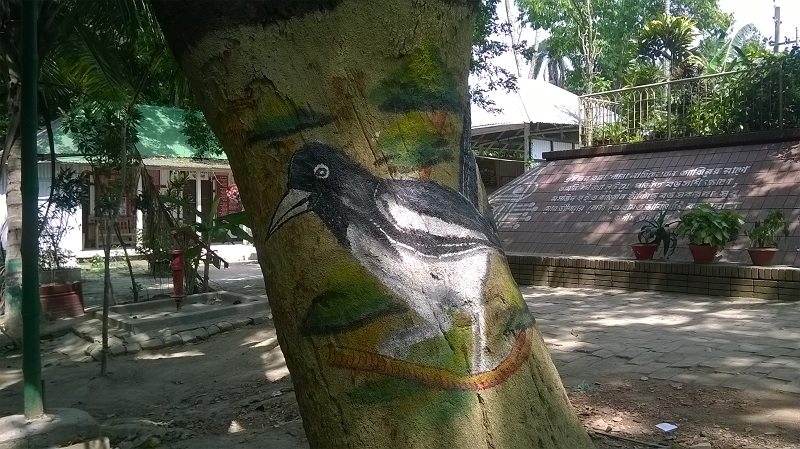
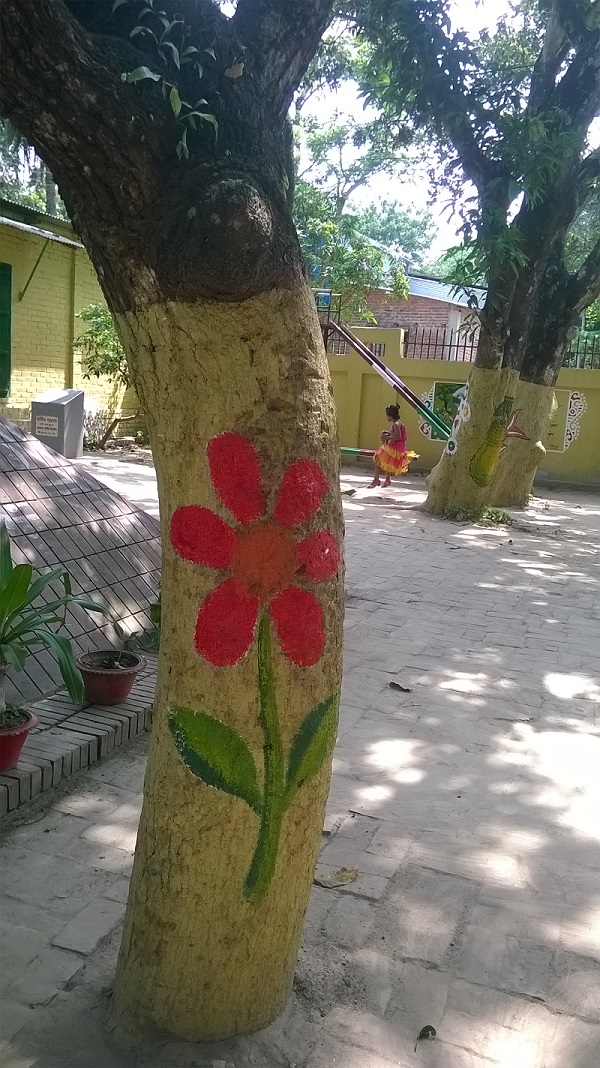
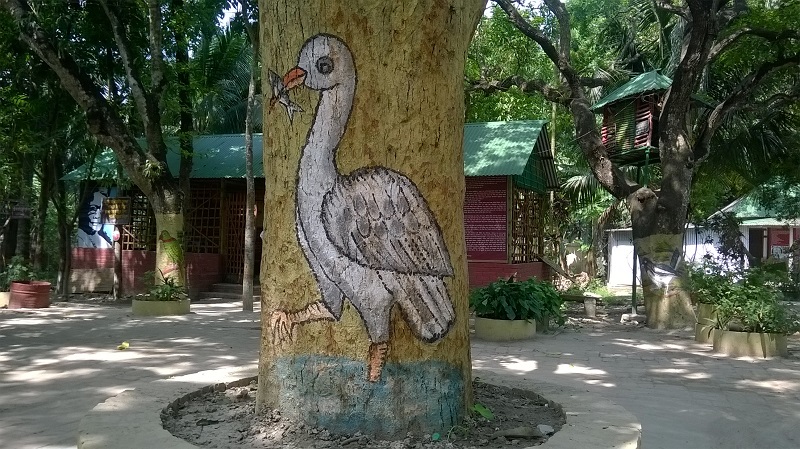
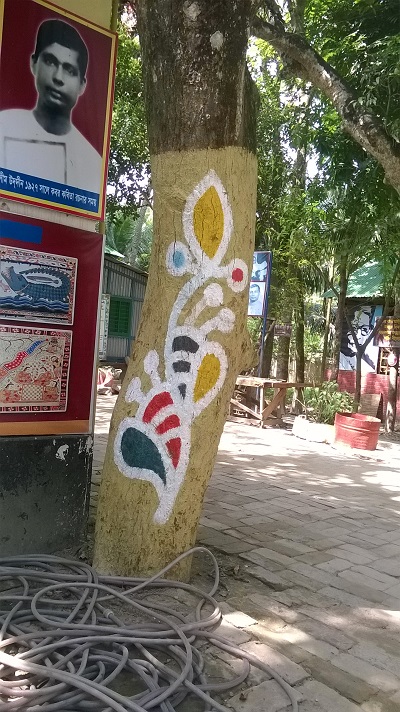
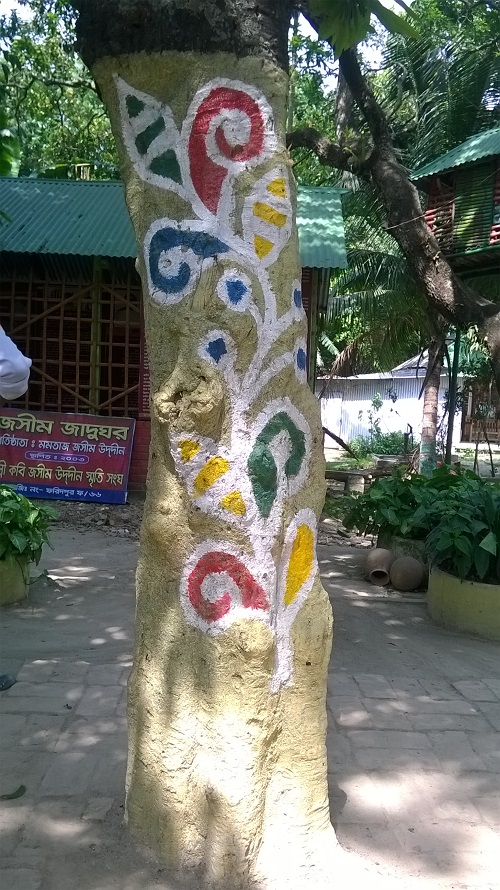
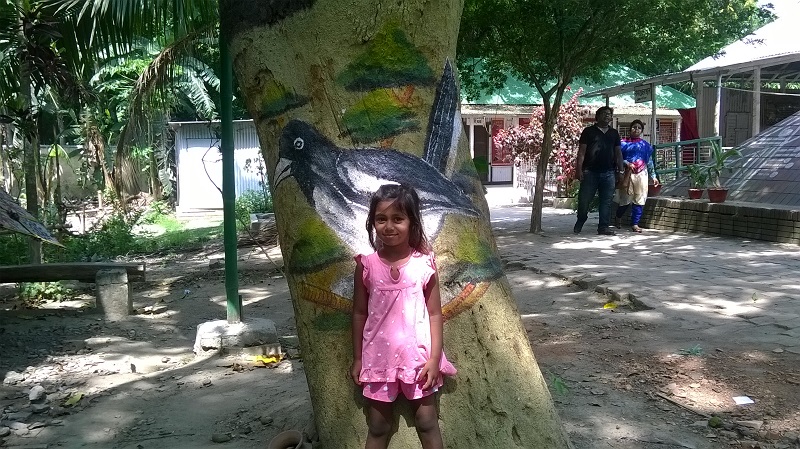
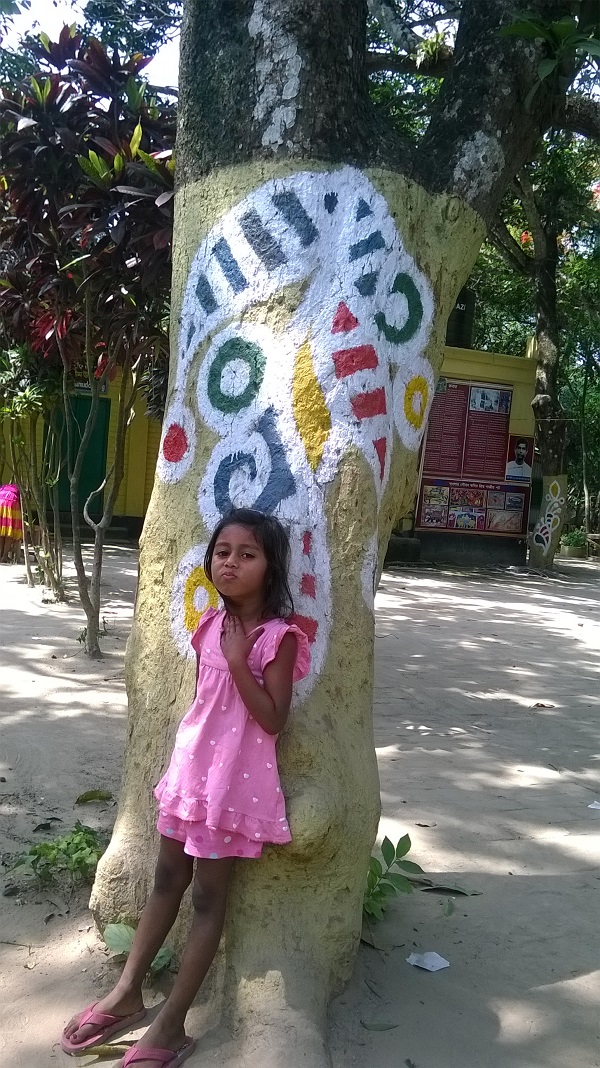
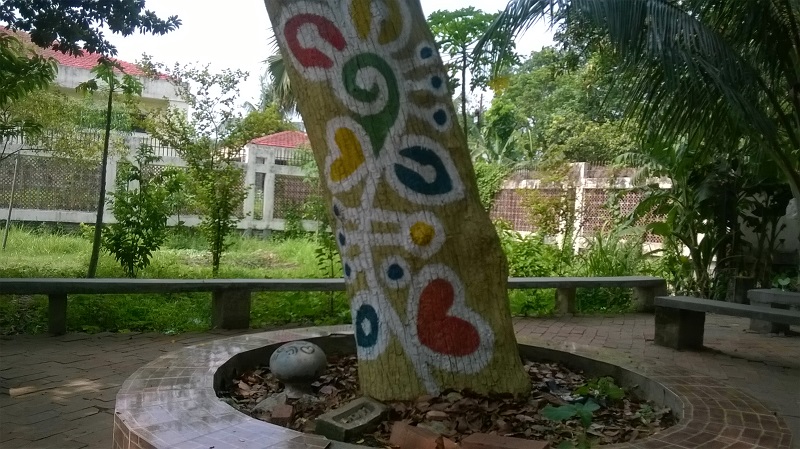
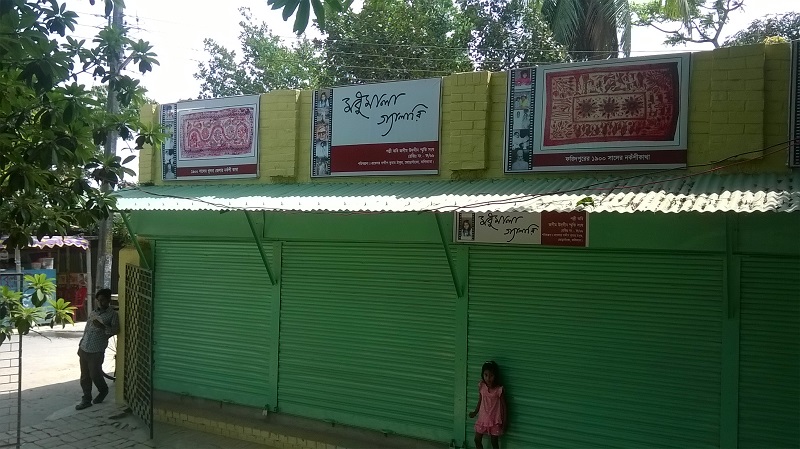
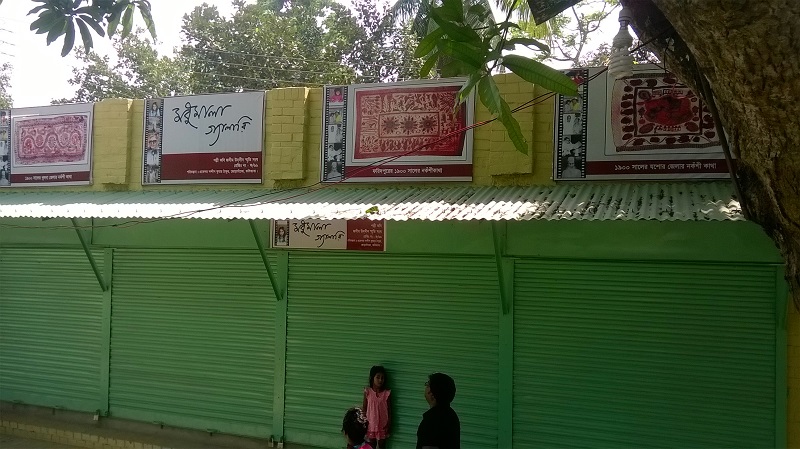
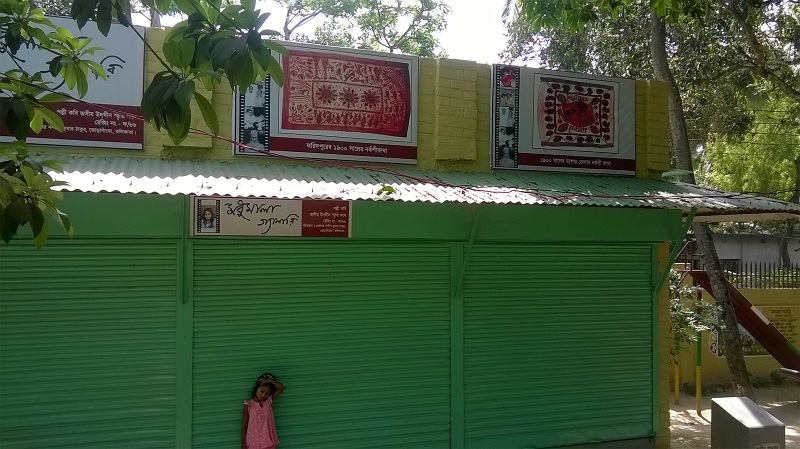
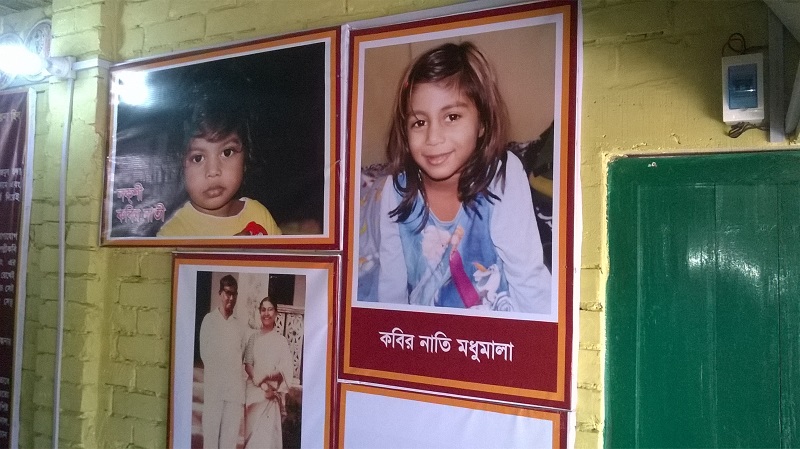
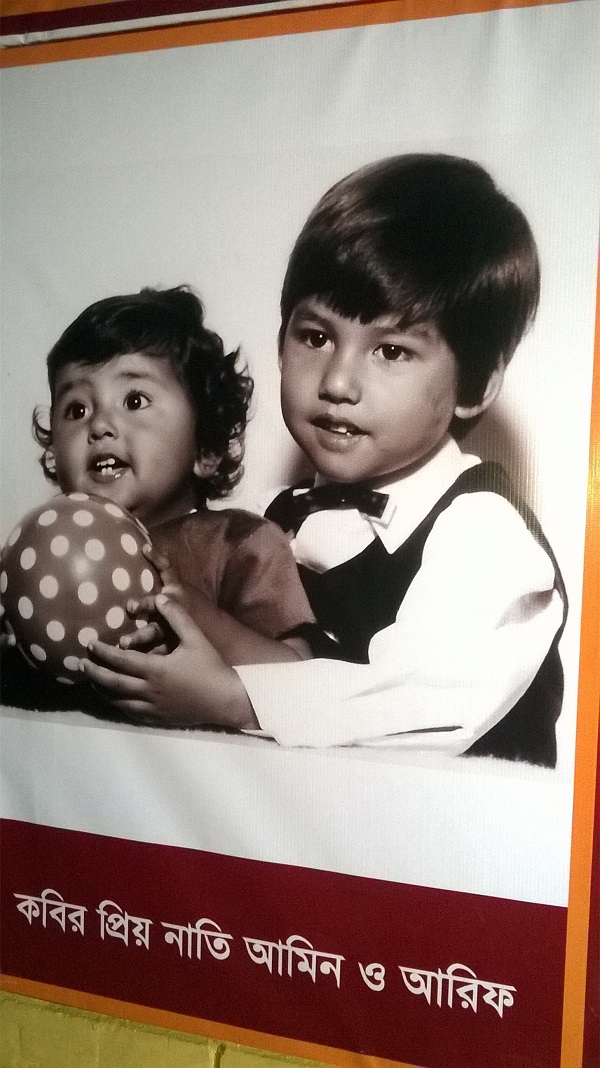
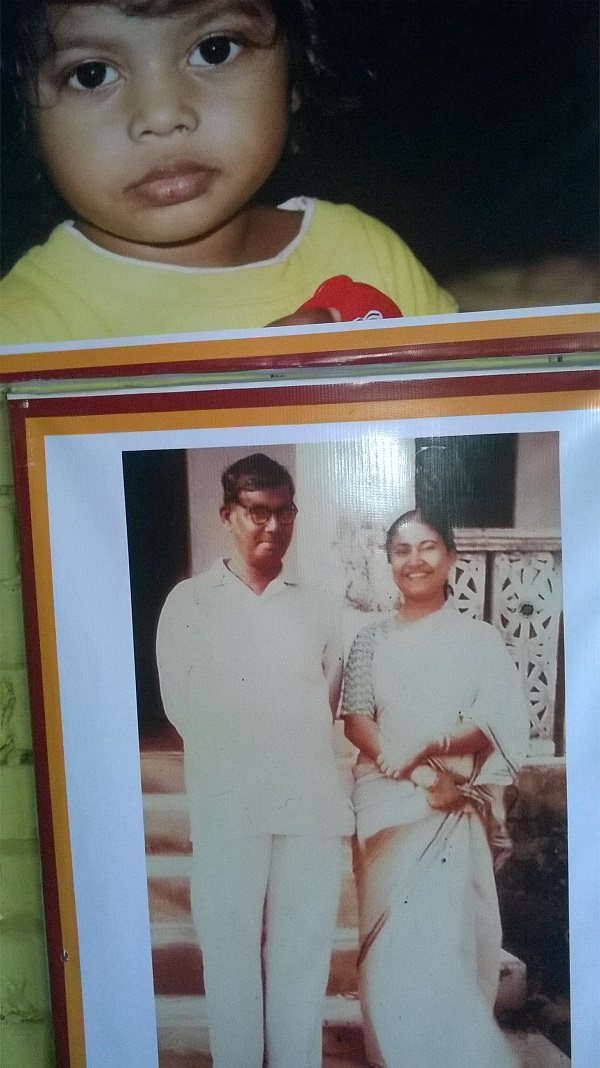
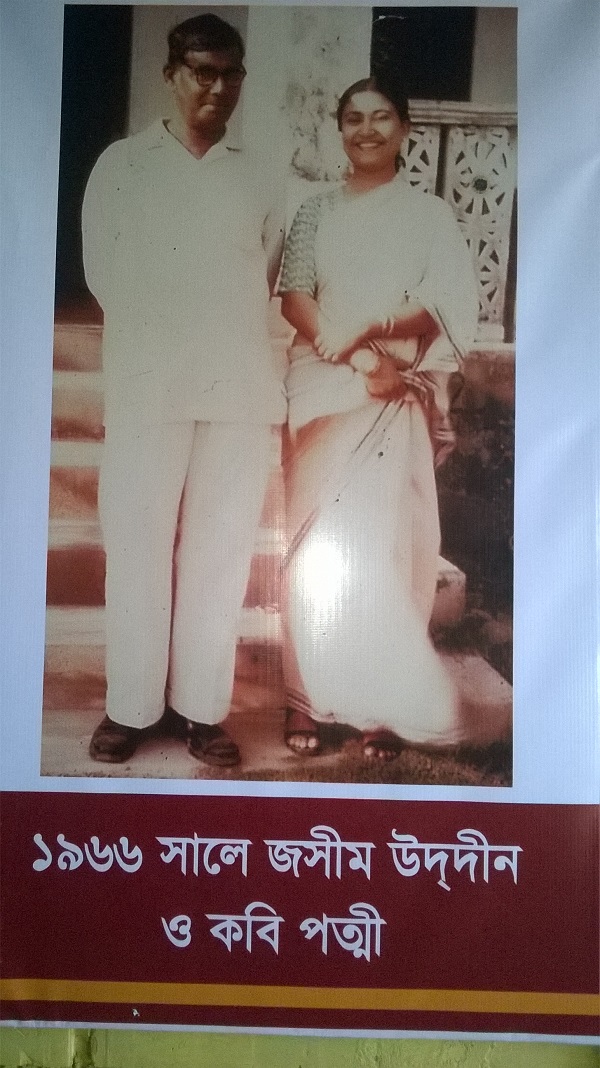
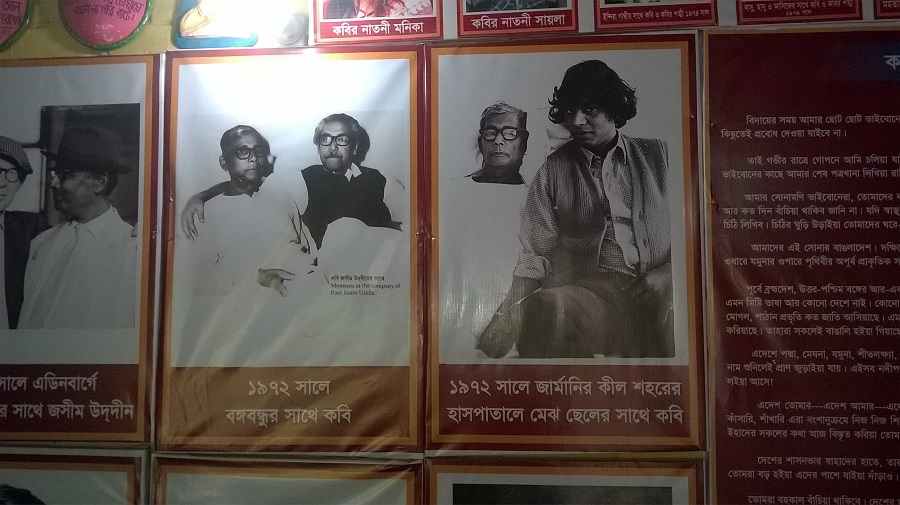
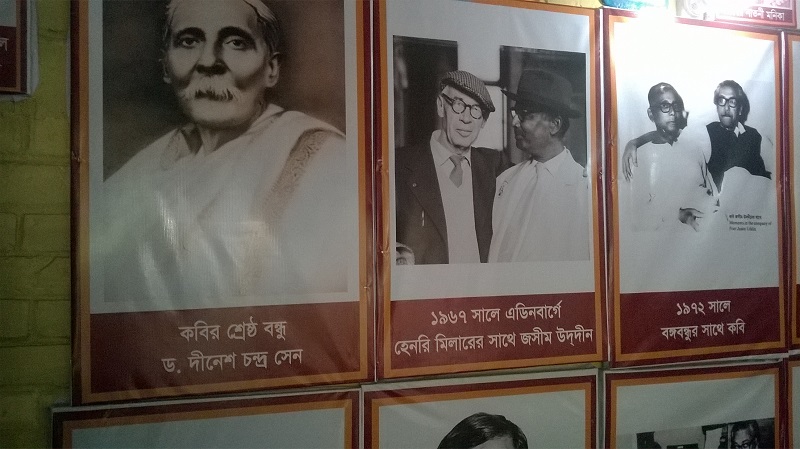
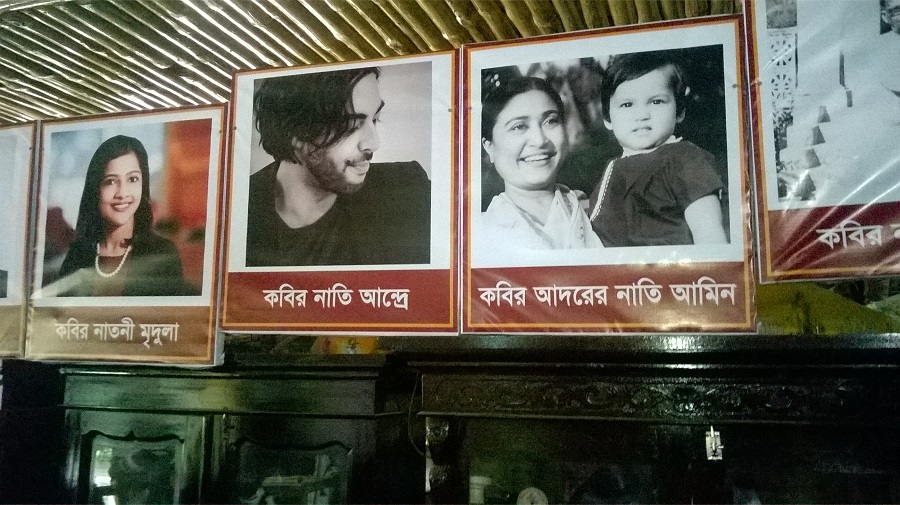
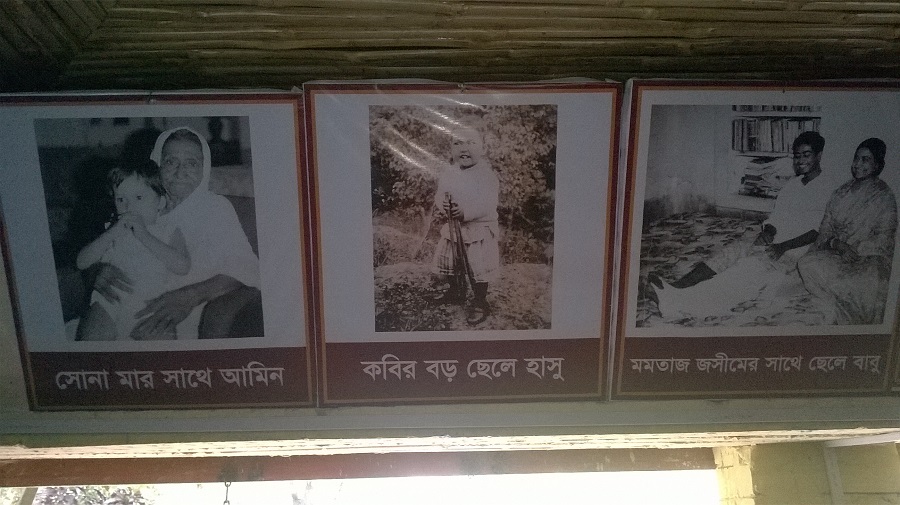
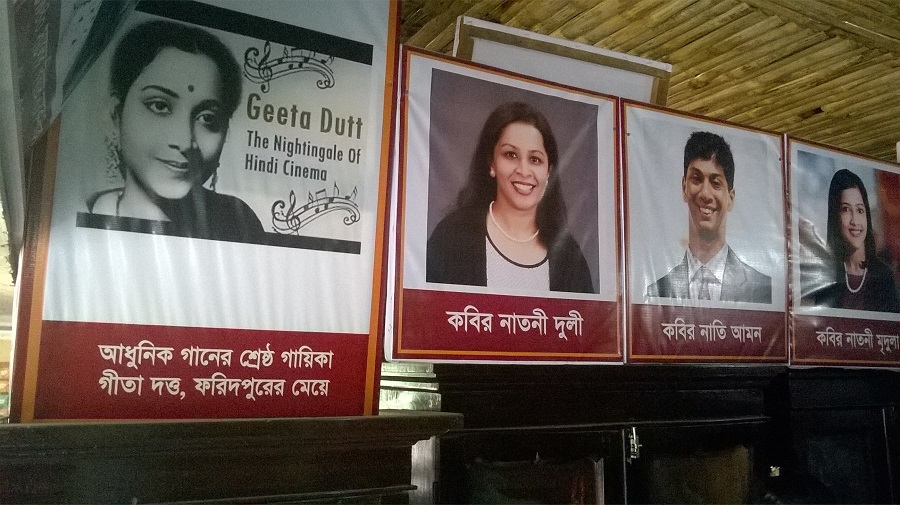
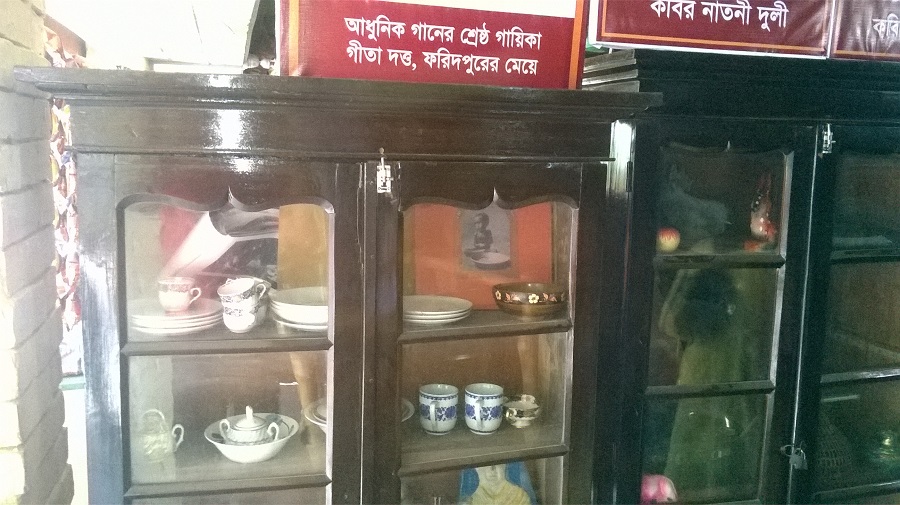
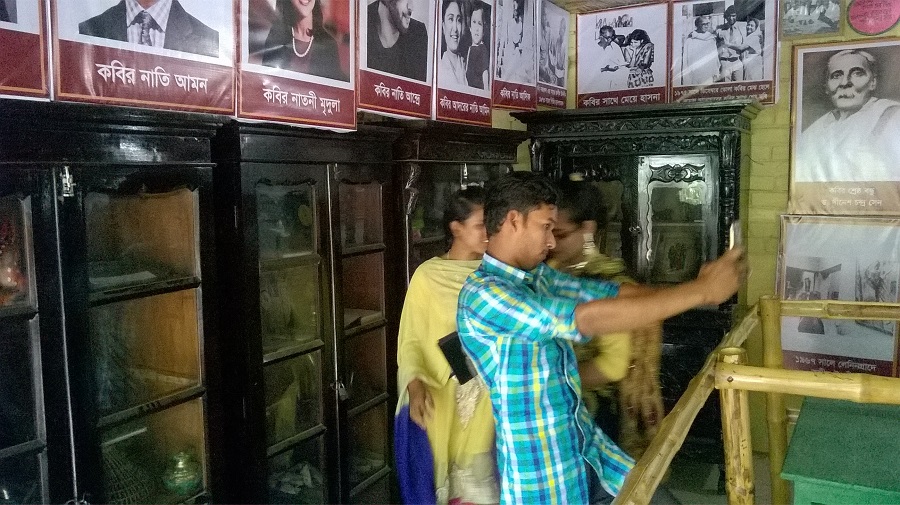
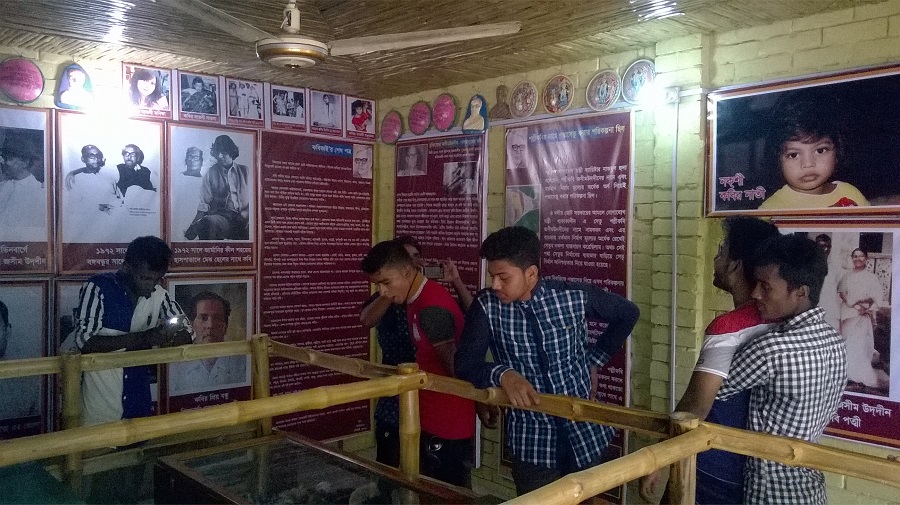
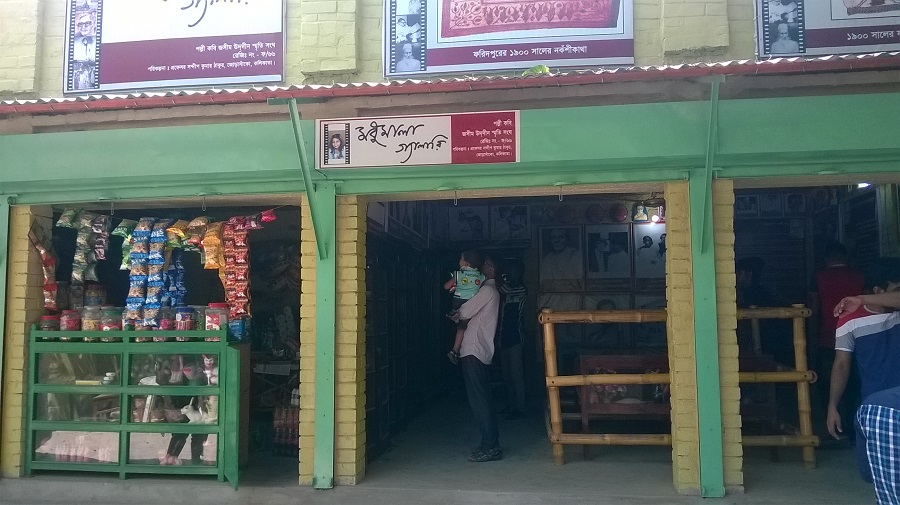
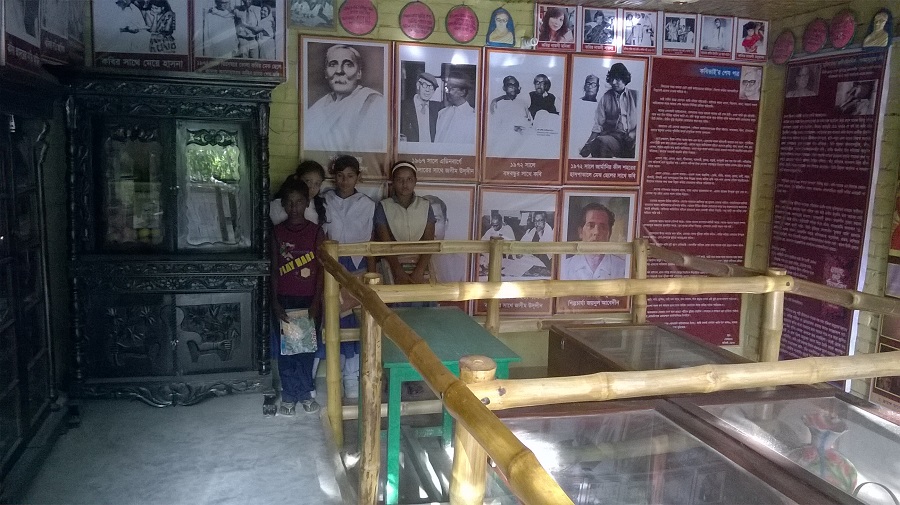
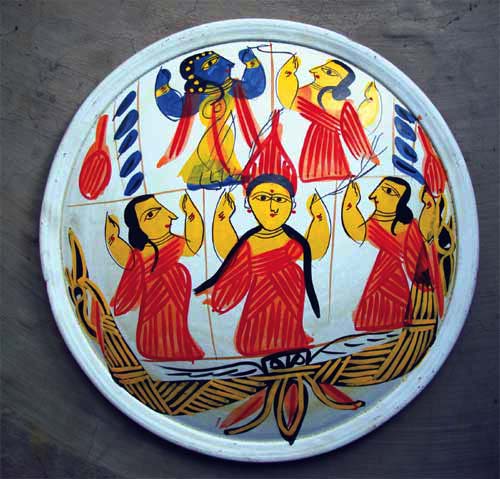
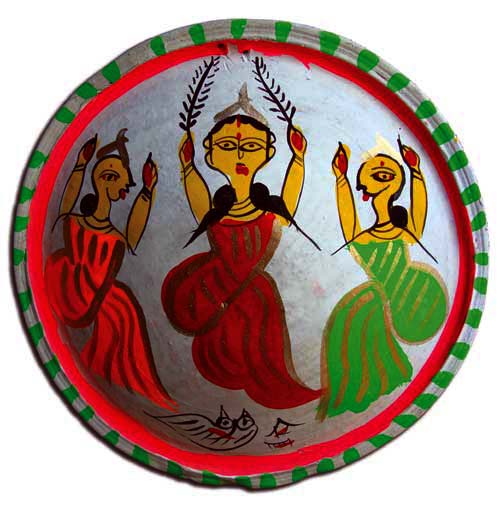
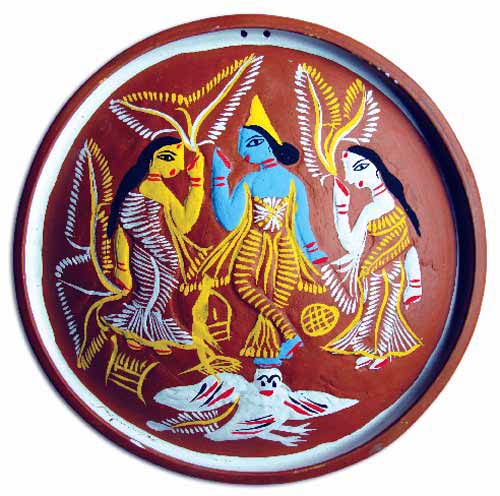
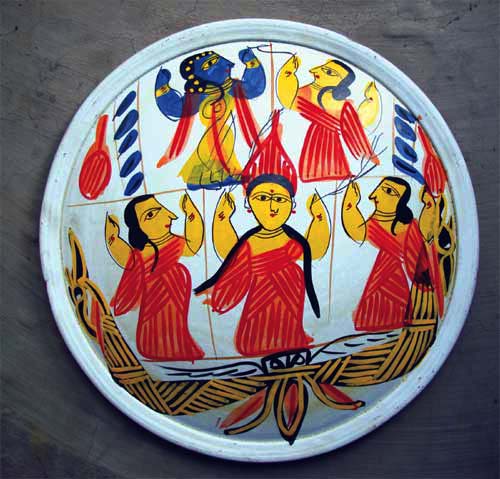
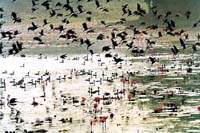
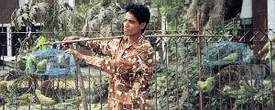
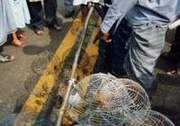
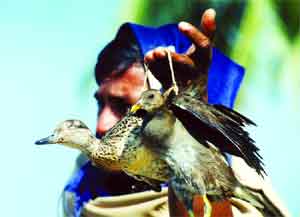

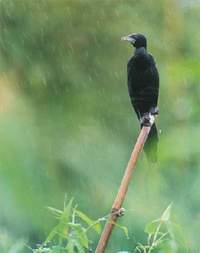
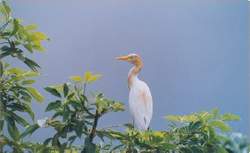
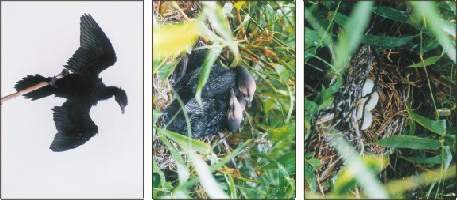
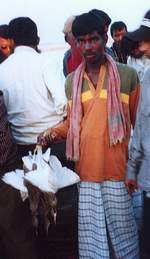 The spots where birds sell in the open are in Dhaka Elephant Road, New Elephant Road, Farmgate, Manik Miah Avenue, Asad Gate, Satmasjid Road, New Market, Banglamotor, Maghbazar, Mahakhali and Gulshan.
Guest birds trapped in Sylhet's haors are held captive in Srimongal town for sale in other cities.
The spots where birds sell in the open are in Dhaka Elephant Road, New Elephant Road, Farmgate, Manik Miah Avenue, Asad Gate, Satmasjid Road, New Market, Banglamotor, Maghbazar, Mahakhali and Gulshan.
Guest birds trapped in Sylhet's haors are held captive in Srimongal town for sale in other cities.
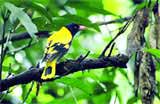 Bangladesh has some 700 species of birds nearly half of which are migratory in one form or another. Hardly these birds form any large congregations excepting those that visit our wetlands -- haors and beels as well as our coastal areas and the Kaptai Lake during the winter months. These are all migratory birds.
However, recent sighting of a large colony of birds in the village Pochamaria under Shilmaraia Union of the Puthia thana in Rajshahi is no doubt a remarkable find. This heronry is possibly the largest one in the country outside the government reserved forests in the Soondarban and the greater districts of Sylhet and Mymensingh.
Bangladesh has some 700 species of birds nearly half of which are migratory in one form or another. Hardly these birds form any large congregations excepting those that visit our wetlands -- haors and beels as well as our coastal areas and the Kaptai Lake during the winter months. These are all migratory birds.
However, recent sighting of a large colony of birds in the village Pochamaria under Shilmaraia Union of the Puthia thana in Rajshahi is no doubt a remarkable find. This heronry is possibly the largest one in the country outside the government reserved forests in the Soondarban and the greater districts of Sylhet and Mymensingh.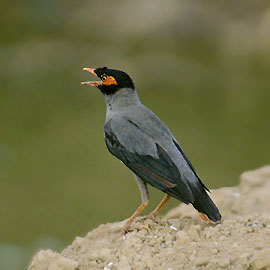
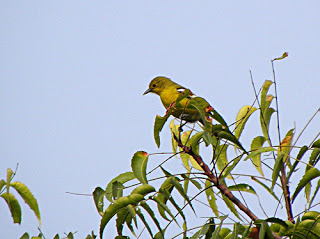
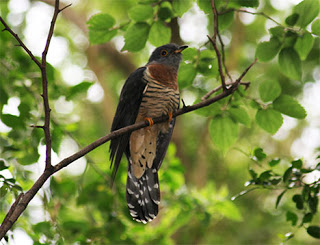
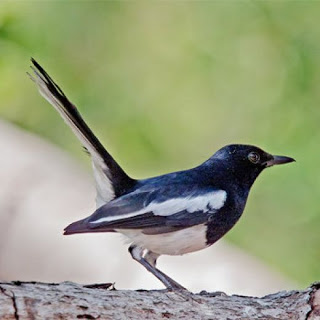
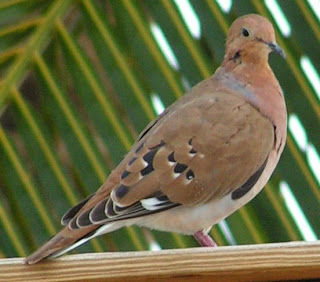

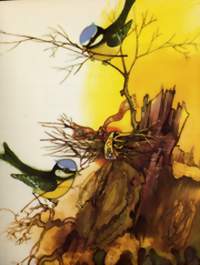
 Soon the two birds were caught in the nets, but this time the king would not walt for his wise men to judge them. He took a glass and swallowed tuntuna and tuntuni.
Soon the two birds were caught in the nets, but this time the king would not walt for his wise men to judge them. He took a glass and swallowed tuntuna and tuntuni.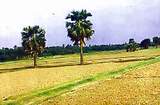 "I'll fly to you like a bird !" thousands of years the love and passion for birds rooted in the society. but since independence plenty of arms are scattered all over the country. I was shocked to see how a few rural people kill bird just for fun or picnic. Many rich from the cities visits wetlands of Bangladesh during winter months well equipped with modern weapons just to kill migratory birds for their kitchen pots. The most shocking event is that when I saw school age children killing birds. They prepare small fishes treated with a poisonous pesticde locally named "Furan" (Carbonfuran is a banned pesticide) and lay near water bodies. When the bird eats the fish immediately die. A young boy was narrating me excitedly, how he collected 50 birds. This is painful at the same time disgusting. Where are the values of our life? Most people does not listen poetries, songs, folk tales that communicated values of our life since thousands of years but have enough time to watch or listen imported films, songs and the culture of the elite of the society through TV , radio from morning to dawn.
"I'll fly to you like a bird !" thousands of years the love and passion for birds rooted in the society. but since independence plenty of arms are scattered all over the country. I was shocked to see how a few rural people kill bird just for fun or picnic. Many rich from the cities visits wetlands of Bangladesh during winter months well equipped with modern weapons just to kill migratory birds for their kitchen pots. The most shocking event is that when I saw school age children killing birds. They prepare small fishes treated with a poisonous pesticde locally named "Furan" (Carbonfuran is a banned pesticide) and lay near water bodies. When the bird eats the fish immediately die. A young boy was narrating me excitedly, how he collected 50 birds. This is painful at the same time disgusting. Where are the values of our life? Most people does not listen poetries, songs, folk tales that communicated values of our life since thousands of years but have enough time to watch or listen imported films, songs and the culture of the elite of the society through TV , radio from morning to dawn.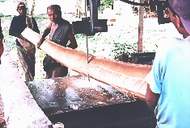 At one time agricultural fields were surrounded by scattered plantation with palm and date trees which not only gave fruits, absorbed excess nutrients by agriculture but also gave shelters to birds who use to prevent the spreading of insects that destroys agriculture. Now these trees are just disappeared. All of a sudden palm woods become main source for wood work although the quality is very poor for such works.
At one time agricultural fields were surrounded by scattered plantation with palm and date trees which not only gave fruits, absorbed excess nutrients by agriculture but also gave shelters to birds who use to prevent the spreading of insects that destroys agriculture. Now these trees are just disappeared. All of a sudden palm woods become main source for wood work although the quality is very poor for such works. 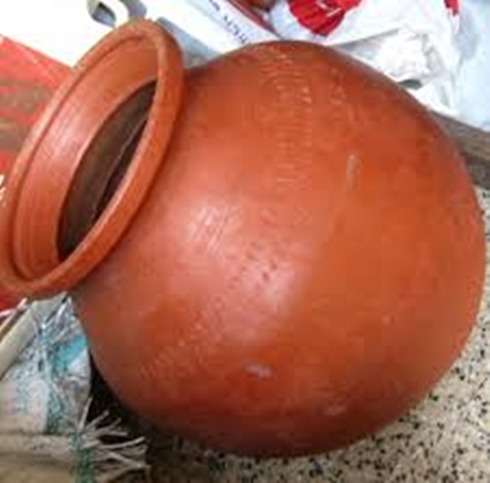 Jasim Uddin bought water pots (Kalsi in Bengali) and hanged it on mango trees for birds to live.
Jasim Uddin bought water pots (Kalsi in Bengali) and hanged it on mango trees for birds to live.